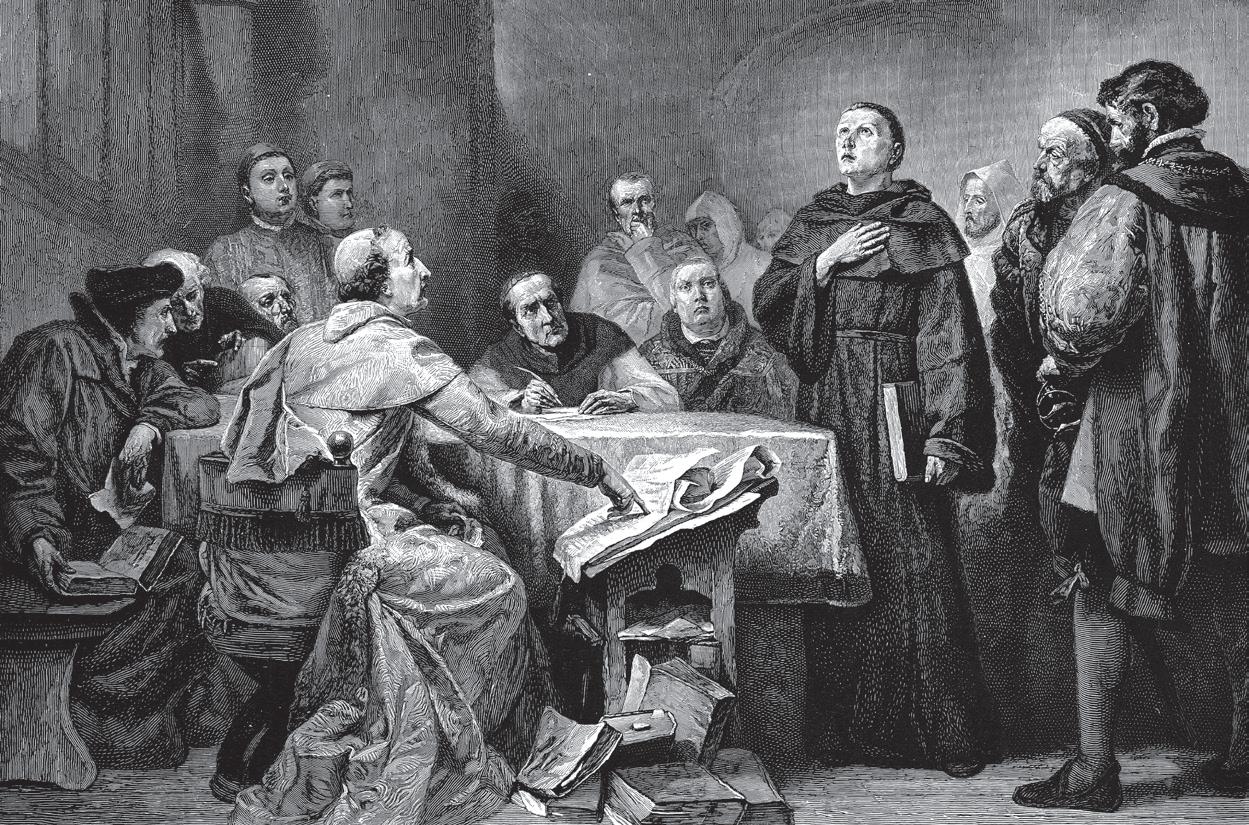Recorder JOYJourney in the









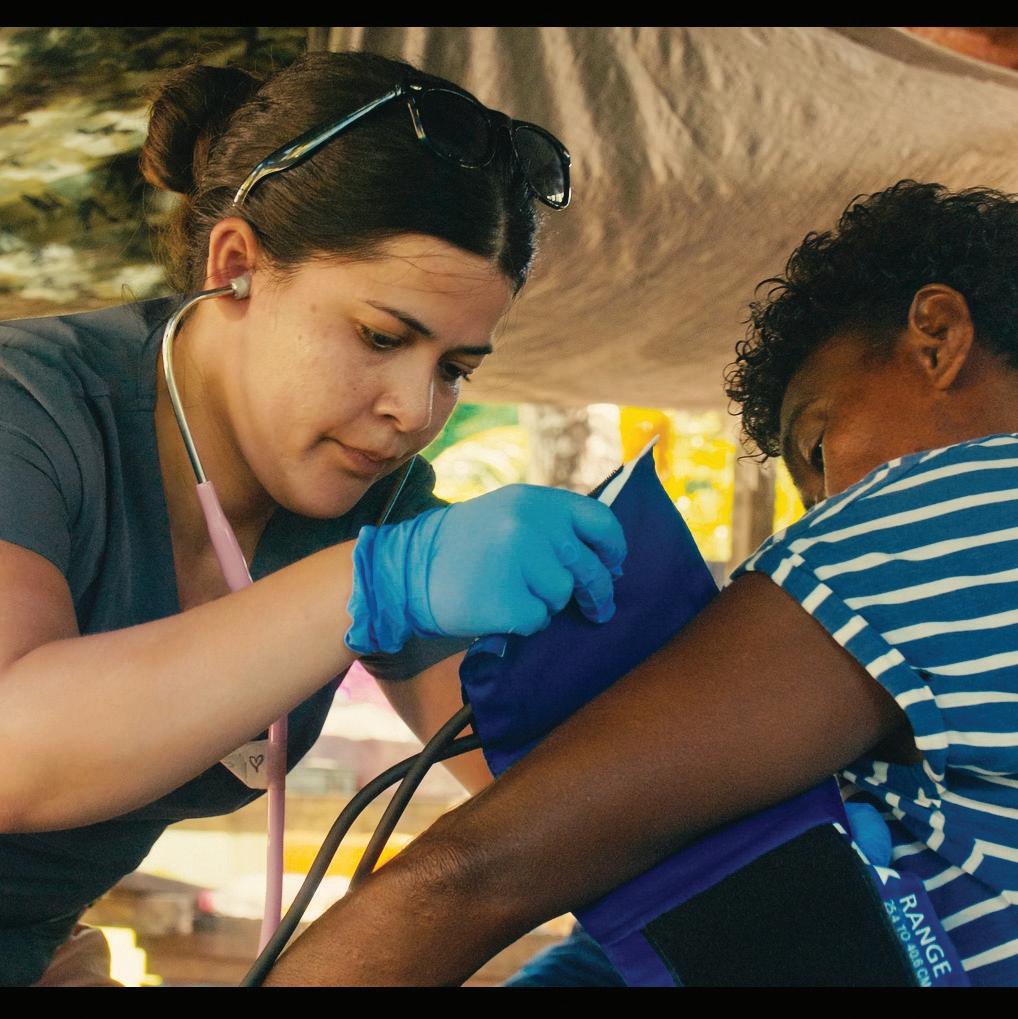

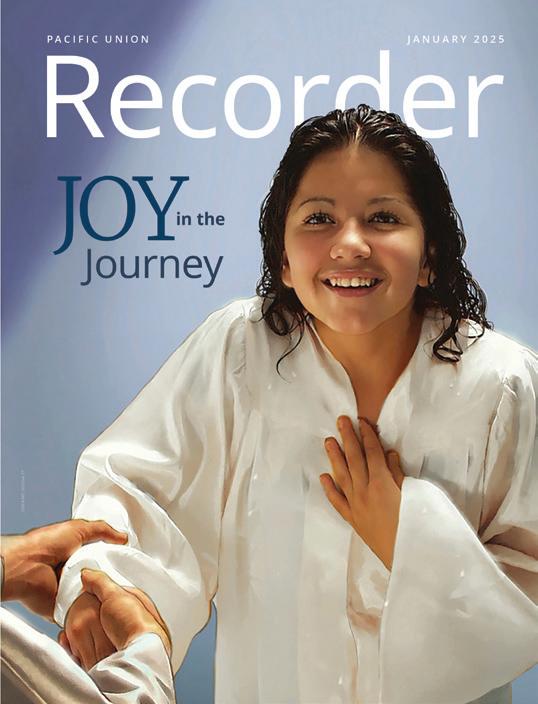
There is nothing of greater necessity than for each individual to realize his accountability to God as well as his high privileges, and walk, not in murmuring and sorrow, but in the joy of the Lord. We are to serve our heavenly Father in newness of life and gladness every day, knowing that we have access to the throne of grace, and that our names are written in the Lamb’s book of life. We are to be steadfast, immovable, always abounding in the work of the Lord. Then we shall realize by experience that the joy of the Lord is our strength.
Ellen G. White, “The Lack of Spirituality in Our Churches”, Manuscript 49, April 9, 1898.
Publisher Ray Tetz
Editor Alberto Valenzuela
Assistant Editor Connie Jeffery
Design/Layout
Stephanie Leal • Alberto Valenzuela
Printing Pacific
Publishing Association www.pacificpress.com
Adventist Health 916-742-0429
Kim Strobel strobeka@ah.org
Arizona
480-991-6777 ext 139 Jeff Rogers jrogers@azconference.org
Central California 559-347-3031
Justin Kim Communication@cccsda.org
Hawaii 808-595-7591
Miguel Manzo communicationsdept@hawaiisda.com
4 Finding Joy in the Journey
8 Whither Evangelism
12 Adventist Pioneers in the West –Beginnings: H.M.S. Richards
16 Fundamental Belief Number 11: Growing in Christ
19 Ellen G. White: Racist or Champion of Equality?
24 A Brave Face
27 Newsdesk
32 Arizona Conference
34 Central California Conference
38 Hawaii Conference
40 Holbrook Indian School
42 Adventist Health
43 La Sierra University
44 Loma Linda University Health
45 Pacific Union College
46 Nevada-Utah Conference
48 Northern California Conference
52 Southeastern California Conference
56 Southern California Conference
60 Community & Marketplace
63 Sunset Calendars
66 Burning “the Bull”
Holbrook Indian School 928-524-6845 x143
Kimberly Cruz kcruz@hissda.org
La Sierra University 951-785-2000
Darla Tucker dmartint@lasierra.edu
Loma Linda 909-651-5925
Ansel Oliver anoliver@llu.edu
Nevada-Utah 775-322-6929
Neat Randriamialison nrandriamialison@nevadautah.org
Northern California 916-886-5600
Laurie Trujillo Laurie.Trujillo@nccsda.com
Pacific Union College 951-809-6777
Gene Edelbach gedelbach@puc.edu
Southeastern California 951-509-2257
Taji Saleem taji.saleem@seccsda.org
Southern California 818-546-8400
Lauren Lacson Llacson@sccsda.org
Editorial Correspondents



By Bradford C. Newton
wenty-five years ago, the world held its collective breath as the new year dawned. Would the internal clocks of the globe reach January 1, 2000, and then create global technology malfunctions? Y2K was the abbreviation for the fear that everything from toasters to nuclear missile command and control would fail and end civilization. Since you are reading this column, we know that nothing significant happened. Remedies for these software issues were applied and the new century began. It seems a quaint worry in hindsight. Little did we know what lay ahead: 9/11 and the war on terror, the climate crisis acceleration, a global pandemic, never-ending regional wars, the rapid rise of AI, social media’s toxic grip on the culture, and our own national political partisanship.
This month marks 25 years into a century of human existence that seems ever grimmer and more hopeless for the world. Can we cope and also offer a path forward for our children, community, and nation? Can Seventh-day Adventists demonstrate by word and deed that there is more to life than this mess? The answer is a resounding yes! Cultivating a life of hope and faith in 2025 comes by acting on our faith commitments as believers. Here are seven ways we will be “more than conquerors” in the year ahead.

Cultivating a life of hope and faith in 2025 comes by acting on our faith commitments as believers.

Invest time each day in the Word of God. “All Scripture is given by inspiration of God, and is profitable for doctrine, for reproof, for correction, for instruction in righteousness, that the man of God may be complete, thoroughly equipped for every good work” (2 Timothy 3:16-17).1
The foundation of our day rests on study and reflection upon the Bible and the writings of Ellen White. Try a daily reading program that takes you through the Bible in a year. Choose a Spirit of Prophecy book and read it cover to cover. Let God’s Word nourish your soul.
Have a set time for prayer. “Praying always with all prayer and supplication in the Spirit” (Ephesians 6:18). As breathing is to our bodies, so also is prayer to our spiritual survival. In the absence of prayer, we are entering the battle of life unarmed and at the mercy of the enemy of our souls. It’s just that serious when you read Ephesians 6. But beyond that, it is the daily joy of bringing to our heavenly Father everything that burdens and worries us. He will hear and answer.
Choose balance in your life.
“Therefore do not worry, saying, ‘What shall we eat?’ or ‘What shall we drink?’ or ‘What shall we wear?’… But seek first the kingdom of God and His righteousness, and all these things shall be added to you” (Matthew 6:31, 33).
Jesus’ point here is adopting the Godcentered perspective on our work and life balance. Meaning in life comes from finding the center path that lives in this very real world of tasks and duties while not being defined by them.
Cultivate and nurture relationships. “One who has unreliable friends soon comes to ruin, but there is a friend who sticks closer than a brother” (Proverbs 18:24, NIV). Solomon’s focus is on both finding and being the kind of friend that builds up those around you rather than tearing them down. An audit of our relationships can reveal whether people in our lives bring us closer to Jesus or pull our attention away from Him. Social connections should build us up, which is why church fellowship is such an important tool for God to make us more like Him.
Share what you have. “You are the salt of the earth.… You are the light of the world” (Matthew 5:13-14). We are both a seasoning to the community around us and a beacon for the truth that is needed in our times. Someone has observed that sharing the gospel is one beggar telling another beggar where to find bread. Ask Jesus to bring someone across your path every day to be salt or light or both.
Surrender your possessions and earnings to God. “Do not lay up for yourselves treasures on earth, where moth and rust destroy and where thieves break in and steal; but lay up for yourselves treasures in heaven.… For where your treasure is, there your heart will be also” (Matthew 6:1921). I’ve found that people will tell you anything and everything about themselves. The exception is talking about money. Which is why Jesus goes right at this as a problem for many of us. Financial stewardship isn’t about keeping the lights on at church or paying the pastors. The Lord says it’s the gauge of spiritual health. So how are we doing? Meaning in life comes when stuff doesn’t define us. This takes prayerful surrender.
Cultivate health. “Beloved, I pray that you may prosper in all things and be in health, just as your soul prospers” (3 John 2). The connection between physical, mental, and spiritual health was a revolutionary concept when Adventists talked about it in the 19th century. Today, medical and social science confirms we are made to flourish wholistically. Our food, sleep, exercise, and recreation all contribute to being a healthy person. Why? To be the best channel for God to communicate with us and through us to others.
For my birthday this past month I received a unique gift. It’s a large red button that reads, “Bible Button.” Press it and a baritone voice randomly reads one of 365 verses from the King James Bible. I’ve been pressing that button quite a lot. It reminds me that in my time of need, God is always there with a message for my life.
As we embark on the journey into the unknown of 2025, there is something better than the Bible Button. Our hope and assurance rests securely with Jesus. No matter what lies ahead, we will never be alone, for He promises, “I am with you always, even to the end of the age” (Matthew 28:20). The events of our time are signposts along the way to the fulfilling of the last words of Jesus in Revelation 22:20, “Surely I am coming quickly.” With John we confidently declare, “Amen. Even so, come, Lord Jesus!”
Bradford C. Newton is the president of the Pacific Union Conference.
1Unless otherwise indicated, all Scripture quotations are from the New King James Version.
Our hope and assurance rests securely with Jesus. No matter what lies ahead, we will never be alone.
By Teobaldo Montagut

We naturally share what excites us. When we’re genuinely passionate about something, we tend to talk about it enthusiastically, encouraging others to experience it too. However, discussing religion or faith—especially Christianity—often feels different. A recent study by the Barna Group highlighted two key reasons people tend to steer clear of faith-based conversations: avoidance and ambivalence.
28% believe these discussions usually lead to tension or arguments.
17% feel disheartened by the political entanglements associated with religion.
17% admit they don’t feel knowledgeable enough to engage in spiritual discussions.1
The challenge posed by avoidance and indifference is significant, as more Christians in the United States are growing reluctant to engage in what is considered the most impactful method of evangelism. As Tom Stebbins notes, “The gospel spreads most effectively through an established network of trust-based relationships.”2

Scripture provides many examples of individuals personally sharing the good news, with the Gospel of John offering especially vivid instances. In John 1:39,3 Jesus responds to Andrew, a disciple of John the Baptist, by inviting him to “come and see” where He is staying. Andrew then goes to find his brother, Simon Peter, ultimately leading him to become one of the twelve disciples (John 1:40-42). The very next day, Jesus meets Philip and calls him to follow (verse 43). Philip readily accepts and extends a similar invitation to Nathanael, who is initially doubtful, questioning if anything good could come from Nazareth (verse 46).
In the opening chapter of John’s Gospel, a series of simple yet profound phrases (“Come and see,” “found,” and “led”4) captures the essence of personal evangelism. The story unfolds as individuals share the good news with friends and family, illustrating a fundamental truth: the gospel spreads most effectively through established relationships. In John 3, we see a shift when Nicodemus, a respected Jewish leader, approaches Jesus with his own questions (John 3:1-21). Later, after the crucifixion, Nicodemus appears again, this time carrying a substantial amount of spices to assist
Joseph of Arimathea in preparing Jesus’s body for burial (John 19:38-42). The text leaves us uncertain about Nicodemus’s faith in Jesus as the Messiah, contrasting the more decisive responses of figures like Andrew and Philip. This ambiguity reflects the complexities of spiritual conversations, which often end without clear resolutions or conversions.
In John’s Gospel, chapter four presents a powerful moment where Jesus exemplifies the role of an evangelist through an unexpected encounter with a woman burdened by a troubled past. This meeting takes place at a well in Sychar, where Jesus engages in His longest recorded conversation in the Scriptures, speaking with the Samaritan woman in the heat of midday (John 4:1-42). He begins simply, asking, “Give me a drink” (verse 7). Captivated, the Samaritan woman asks a series of questions, to which Jesus responds with insight, addressing her personal history and even navigating sensitive religious topics.
Upon the disciples' return, they notice that the woman has left her water jar, hurrying back to her town with excitement. She proclaims, “[He] told me everything I have ever done!” (John 4:29), sparking the townspeople's curiosity. Drawn by
her testimony, they come to see Jesus themselves. This initial intrigue prompts Jesus to stay for two days, during which many are led to believe He is the Messiah, moved by the power of her words.
The Gospel of John is not the only New Testament text that highlights personal evangelism. In the book of Acts, we see a vivid account of the early church’s growth, including a powerful example of evangelism between Philip and an Ethiopian eunuch (Acts 8:2640). Philip demonstrates an immediate response to God’s call, heading to the wilderness road from Jerusalem to Gaza at the Spirit’s prompting and even running to catch up with the eunuch’s chariot (verses 29-30). Initiating their conversation, Philip asks a meaningful question: “Do you understand what you are reading?” (verse 30). The eunuch replies, “How can I, unless someone guides me?” (verse 31) and invites Philip to join him, opening the way for a deeper discussion.
Philip shows an impressive ability to let the conversation unfold organically. It’s the eunuch who raises a thought-provoking question: “About whom, may I ask you, does the prophet say this, about himself or about someone else?” (verse 34). Respecting the eunuch’s curiosity, Philip adeptly links the Isaiah passage to the gospel of Jesus. He meets the eunuch right at his point of understanding and smoothly steers the discussion from the prophet Isaiah’s words to the message of Christ.
Philip's role in this story is distinctive; he doesn’t take charge but instead follows the Spirit’s prompting with eagerness. Beginning with a simple question, he lets the eunuch guide the direction of their conversation. This dynamic becomes especially clear when the eunuch requests baptism—without any prompting from Philip, he orders the chariot to stop. Together, they step into the water, where Philip baptizes him, allowing the eunuch to continue on his way, rejoicing. This story is a wonderful example of a humble, responsive approach to personal evangelism.
Picture this remarkable scene: a Black man
seated beside a (relatively) White man—a eunuch journeying alongside Philip, the father of four daughters (Acts 21:9). Together, they ride in a chariot on a desolate road, united by a shared scroll of Isaiah laid across their laps. It’s a powerful visual. An unexpected pair, an ancient text, a secluded path—yet fully aligned with God’s unfolding work. The people of God grew, one unlikely person at a time, enriching the church through each addition. How did this come about? Because Philip was willing to step into unknown territory, heed the Spirit, initiate conversation, welcome questions, and patiently study Scripture at someone else’s pace.
Personal evangelism is deeply anchored in two theological pillars: Christology and pneumatology. Central to personal evangelism is the incarnation— the truth that Jesus is fully human and fully divine. As the eternal Word who existed with God from the beginning, Jesus entered our world in a complete, physical sense. John 1:14 captures this vividly, describing Jesus as having “pitched his tent”5 among us. The Greek term skenoo conveys this intimate dwelling, echoing the word skene from the Septuagint, which refers to the tabernacle where God’s presence dwelled. Just as God’s glory emanated from the tabernacle, so does Jesus reveal God’s glory: “The Word became flesh and lived among us, and we have seen his glory, the glory of a father's only son, full of grace and truth” (John 1:14). Through His incarnation, Jesus serves as a visible representation of the invisible God. As He Himself says, “Whoever has seen me has seen the Father” (John 14:9).
Jesus entered our world to make the unseen God known, and He entrusted His disciples with the same mission: to share this knowledge of God with others. God sent His Son, who then commissioned His followers to spread the message of salvation through Jesus Christ (John 17:18). As Rebecca Manley Pippert insightfully notes, “God didn’t send a telegram, rain down Bible study books, or scatter bumper stickers from the sky saying, ‘Smile, Jesus loves you.’ He sent a person—His Son—to deliver

the message. His approach remains the same. God still sends men and women—long before tracts and techniques—to transform the world.”
Advocates of personal evangelism view the Holy Spirit as the divine catalyst for impactful encounters. Earlier, we discussed how the Spirit directed Philip to meet the Ethiopian eunuch (Acts 8:2930). Much like Philip’s unplanned meeting, these “divine appointments” often happen when we least anticipate them.
An evangelist doesn’t undertake this mission alone. A central promise in the New Testament is that the Holy Spirit guides and inspires the messages that draw people to Jesus. In Acts 1:8, Jesus reassures His disciples, saying, "You will receive power when the Holy Spirit has come upon you; and you will be my witnesses in Jerusalem, in all Judea and Samaria, and to the ends of the earth." In personal evangelism, the Spirit provides not only the words to speak but also the opportune moments to share them. Through prayer and attentiveness to those around us, we can better recognize when and how to convey the story of God’s love.
Equally essential to this approach is recognizing the Holy Spirit’s vital role in helping individuals become aware of their need for transformation. This realization isn’t something they can create on their own; genuine transformation is a partnership between the person and the Holy Spirit. Our role is to lead people to the point of decision, support
Advocates of personal evangelism view the Holy Spirit as the divine catalyst for impactful encounters.
them through that process, and continue nurturing them afterward.
Think of it this way: Sharing the Good News of God’s love at the moment of conviction is like serving the final course in a progressive dinner. The Spirit has already prepared the appetite; we simply present the meal. Our role is to reach out, not to create conviction. Even our outreach is directed by the Holy Spirit’s guidance. Understanding the Spirit's essential role in personal evangelism empowers us to speak about Jesus with confidence, assured that we are not alone and that the responsibility doesn’t rest entirely on us. This partnership with the Spirit allows us to approach conversations about Jesus with ease—and even joy.
Teobaldo Montagut is a freelance writer from San Diego, California.
1“Why People Are Reluctant to Discuss Faith,” Barna, Aug. 14, 2018, https:// www.barna.com/research/reasons-for-reluctance.
2Tom Stebbins, Friendship Evangelism by the Book: Applying First Century Principles to Twenty-First Century Relationships (Camp Hill, PA: Christian Publications, 1995), p. 72.
3All Scripture quotations are from the New Revised Standard Version.
4The Greek verb ηγαγεν, perhaps is better translated as “led.” (See Luke 4:9, NIV.)
5Σκηνόω (skénoó): to dwell, to tabernacle, to pitch a tent. “The verb σκηνόω primarily means to dwell or encamp, often with the connotation of residing temporarily, as one would in a tent. In the New Testament, it is used metaphorically to describe God's presence among His people, emphasizing the idea of God ‘tabernacling’ or dwelling with humanity. This term conveys a sense of divine presence and intimacy, reflecting the temporary yet profound nature of God's interaction with the world.” https://biblehub. com/greek/4637.htm.
6Rebecca Manley Pippert, Out of the Saltshaker and Into the World: Evangelism as a Way of Life (Downers Grove, IL: InterVarsity, 1999), p. 30.
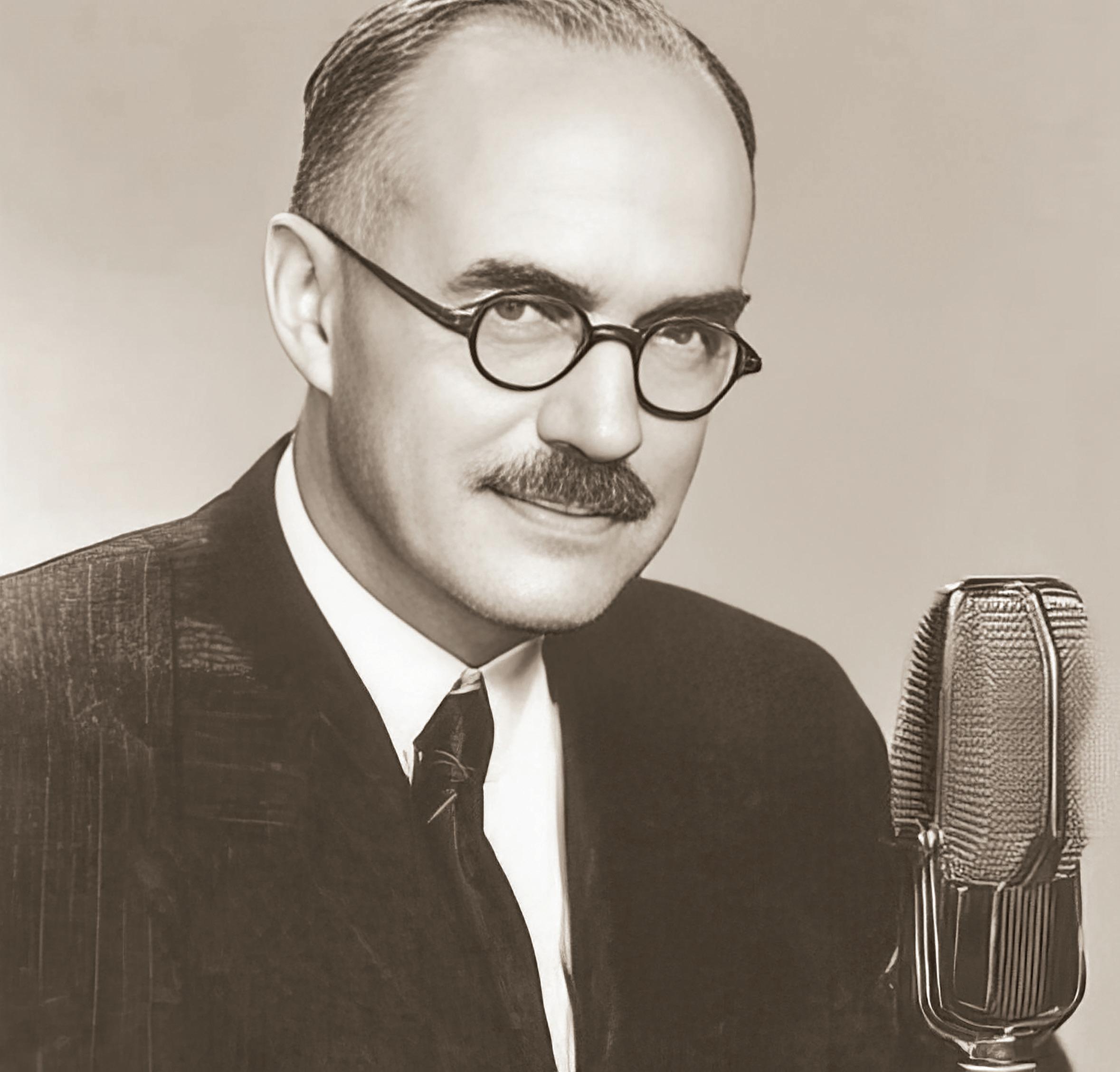
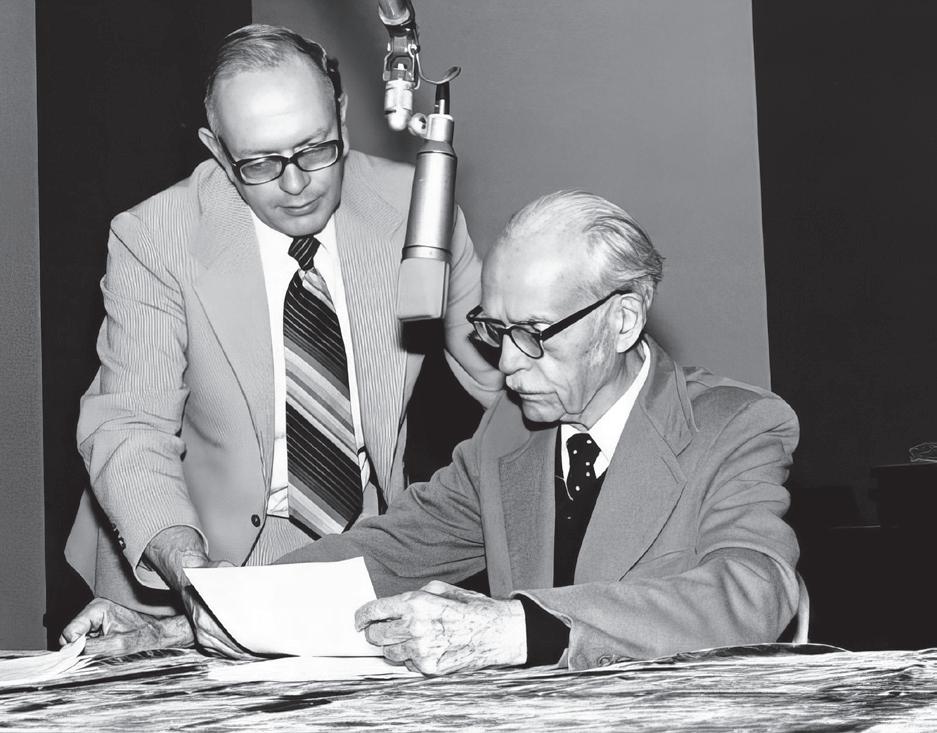
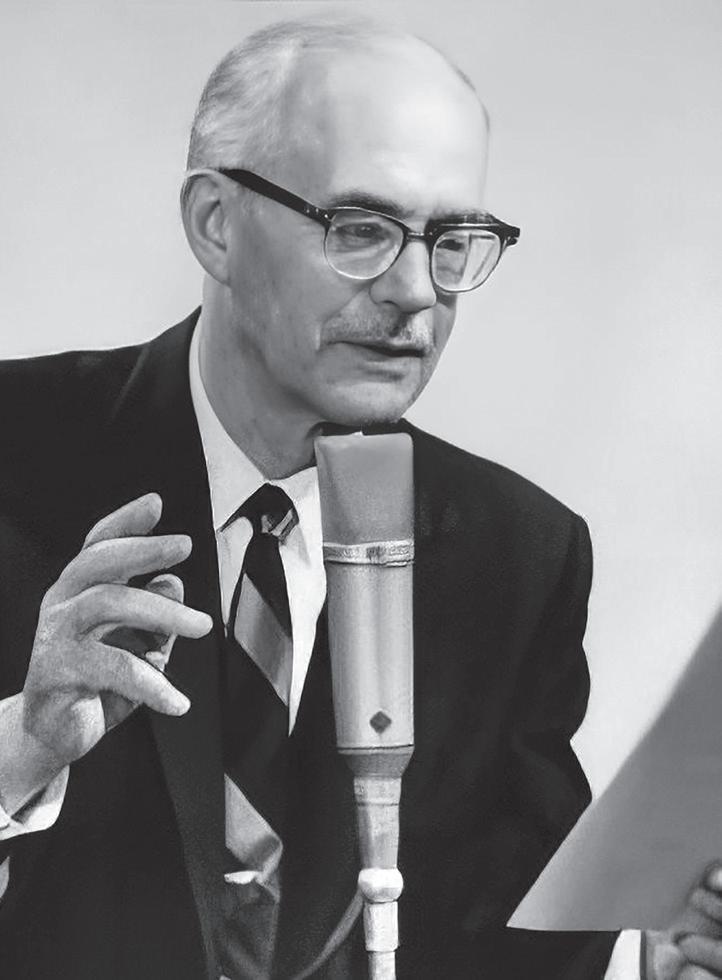
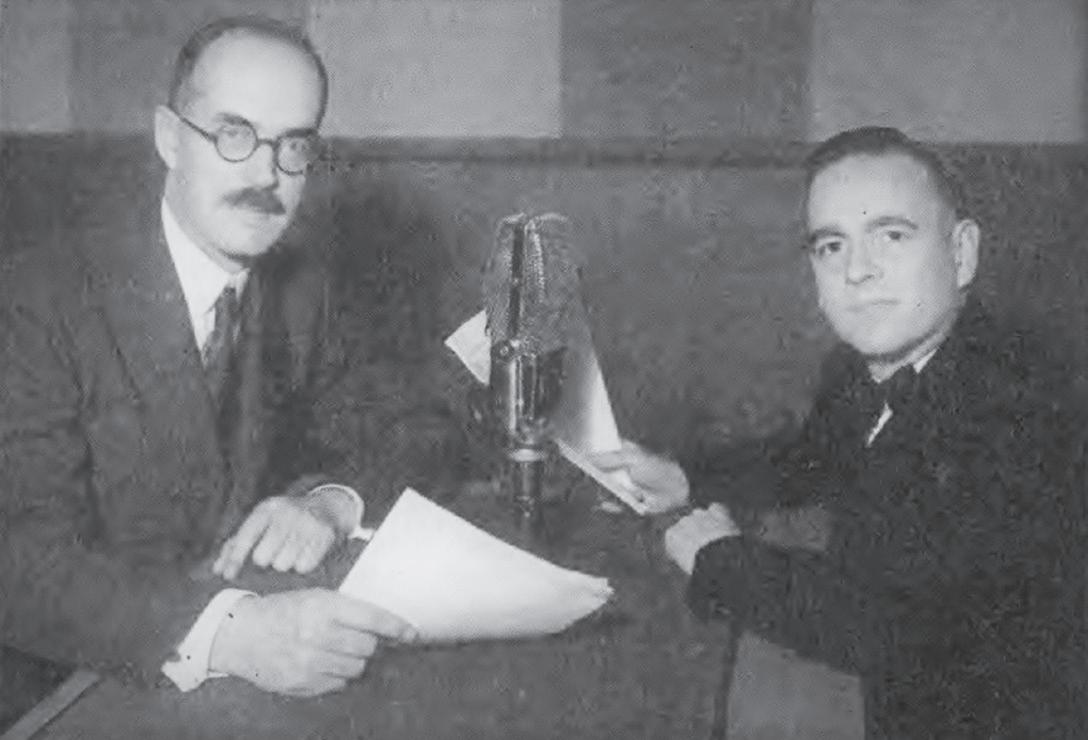
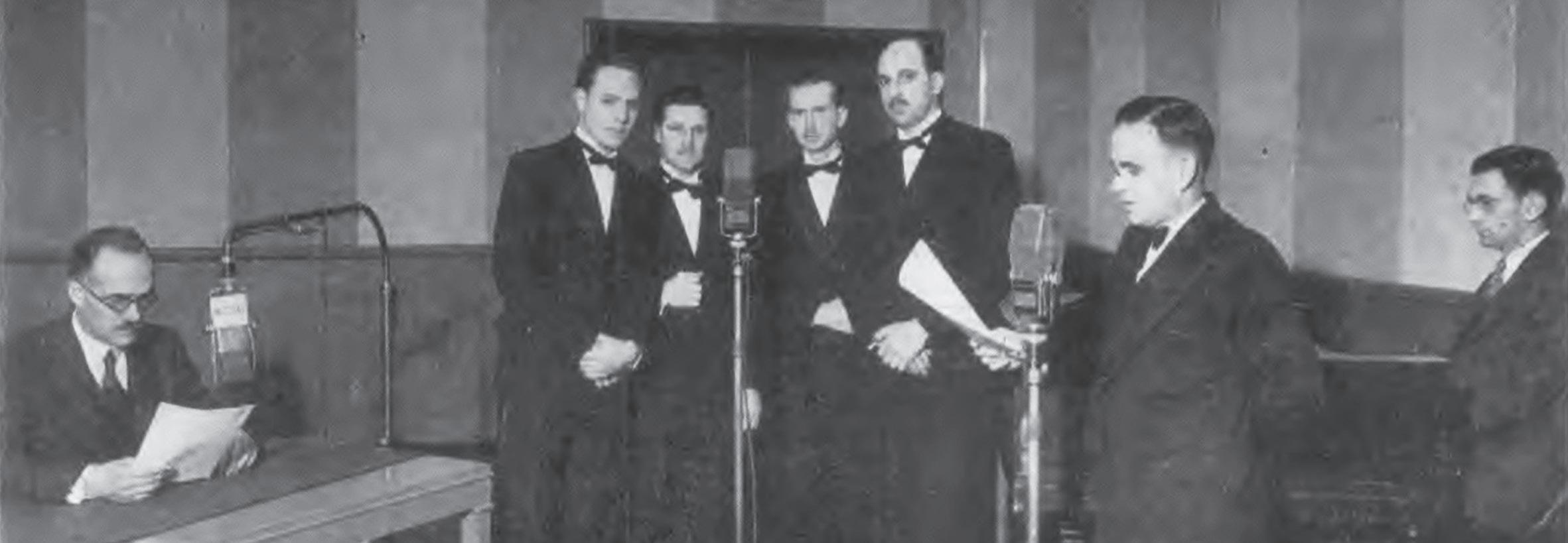

By the Recorder editorial staff
Harold Marshall Sylvester Richards (18941985) was born in Davis City, Iowa, the son and grandson of gospel ministers. Already a successful evangelist, he was ordained in 1918 while still attending Washington Missionary College. He was continuing his evangelistic ministry in Montreal, Canada, when he received a call to teach evangelism at Union College. The president, W.W. Prescott, even came in person to make sure he accepted the call!
Richards was torn. “For three or four days I couldn't eat, couldn't sleep. It got worse and worse,” he wrote. “Finally, up in the attic of the church there in Westmount, Montreal, I fought the thing out in prayer, and the decision was just as clear as it could be I couldn't do it. God had something else for me.”1
This “something else” was to become the Adventist pioneer in radio evangelism. Called to work in California in 1926, he conducted evangelistic meetings in Fresno, Bakersfield, Lodi, Los Angeles, Long Beach, and San Diego. In the meantime, he had already begun to think about using radio as a means of spreading the gospel, but it wasn’t until 1929 that he began broadcasting over KNX-AM radio in Los Angeles.
While conducting an evangelistic series in
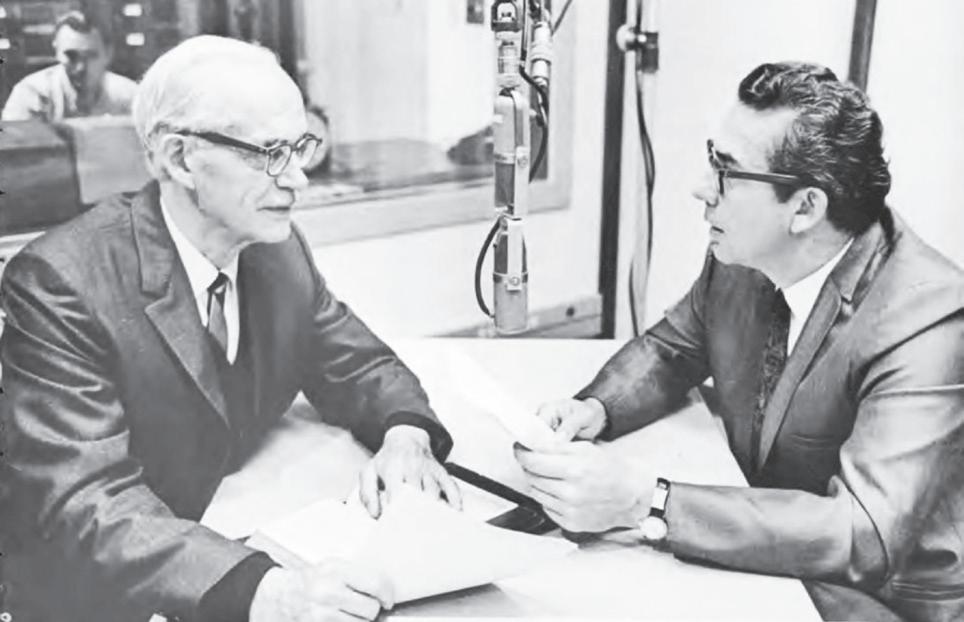
Richards Sr. and H.M.S. Richards Jr.
Huntington Beach, his daily sermons were aired over KGER in Long Beach, on a program he called The Tabernacle of the Air. He also broadcast weekly over KMPC in Beverly Hills. His home studio was a converted chicken coop behind his garage! By 1937, Richards’ live broadcasts were being aired over several stations, and the name was changed to The Voice of Prophecy. A trailblazer in so many ways, Richards found little support for his dream among church administrators and so chose to continue his ministry through voluntary donations. His conviction that new technology should be used to share the good news exemplifies the spirit of the West, where most of the church’s media ministries have their origins.
“Finally, up in the attic of the church there in Westmount, Montreal, I fought the thing out in prayer, and the decision was just as clear as it could be I couldn't do it. God had something else for me.”
Opposition from church leaders—some who condemned radio as “of the devil,” misquoting Paul’s words about the “prince of the power of the air”—did not faze Richards, even when his radio broadcast was banned in several conferences.
Richards pointed to the very first coast-to-coast Adventist radio broadcast as one of his greatest thrills in ministry. The message was carried by 89 stations of the Mutual Broadcasting System. This led to greater acceptance of his methods by church leaders, who in 1943 inaugurated an annual Voice of Prophecy Day that collected offerings from churches across North America.
Later the Review and Herald reported:
But not until January 4, 1942, did listeners from coast to coast hear the broadcast. That Sunday evening came exactly four weeks after the attack on Pearl Harbor. If the contract for time on 89 stations had not been signed prior to that dark day in American history, expansion of the Seventh-day Adventist radio ministry might have been delayed for years. It could well have been argued that it wasn't logical to commit a large amount of money to such a venture with the future so uncertain.
But Elder Richards and his associate speaker, Fordyce Detamore, moved forward in faith, believing that God wanted His Word to be heard in homes across the land. And if God was leading in expanding the radio outreach, then He would supply the funds to make it possible.
On February 1, 1942, four weeks after the first coast-to-coast broadcast, Elder Detamore announced to listeners that a Bible correspondence course was ready for mailing. Response was immediate; within five months enrollments topped 27,000. By September they had passed 60,000. With the addition of dozens of new stations the next month, radio broadcasts—and offers for the free course—went
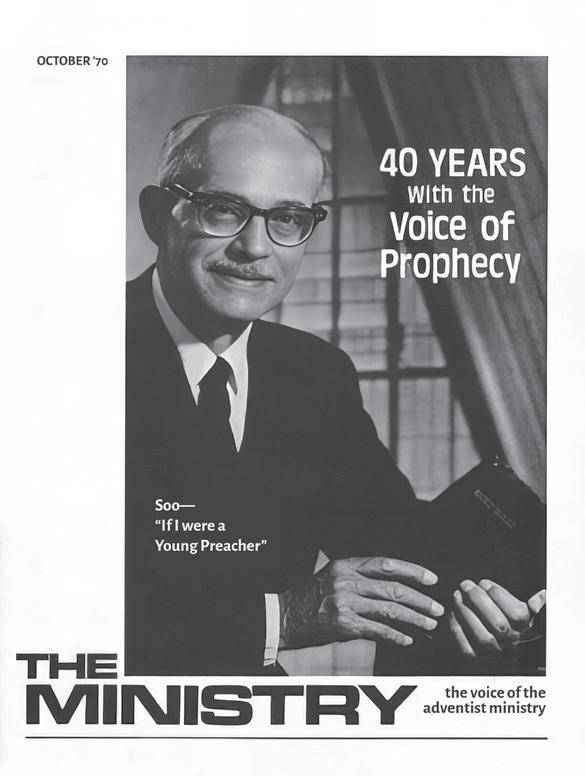
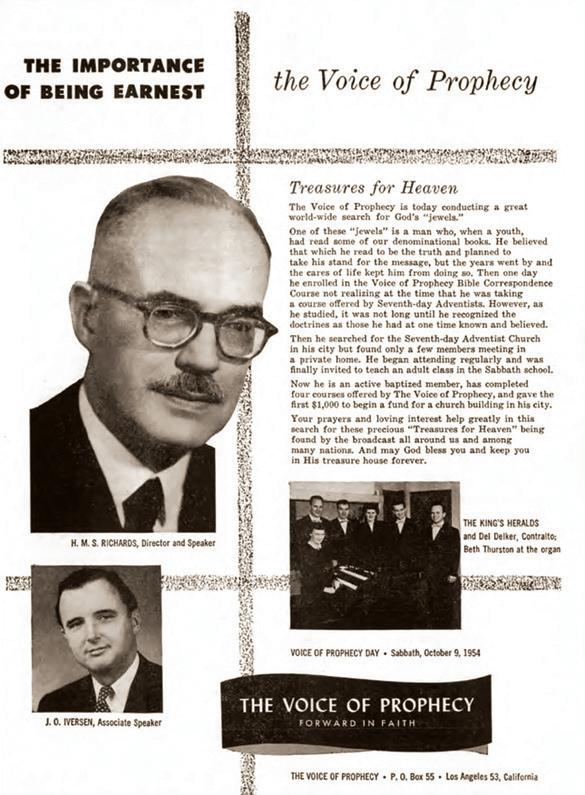
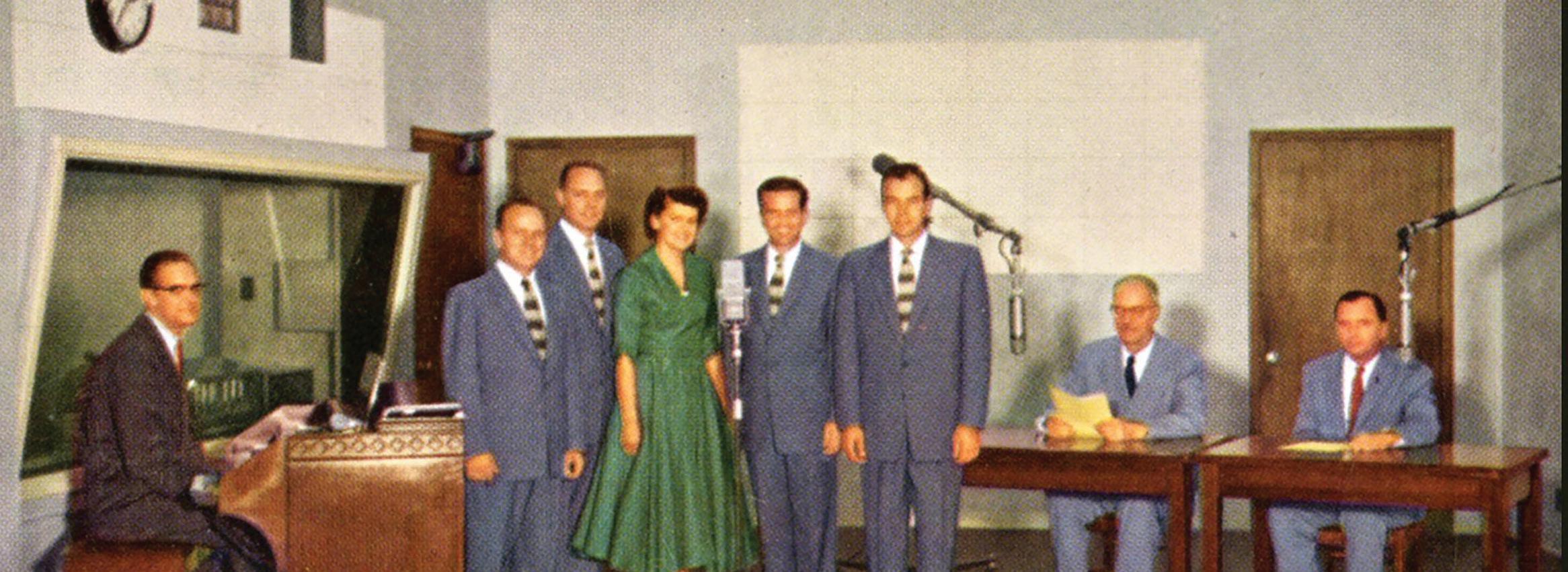


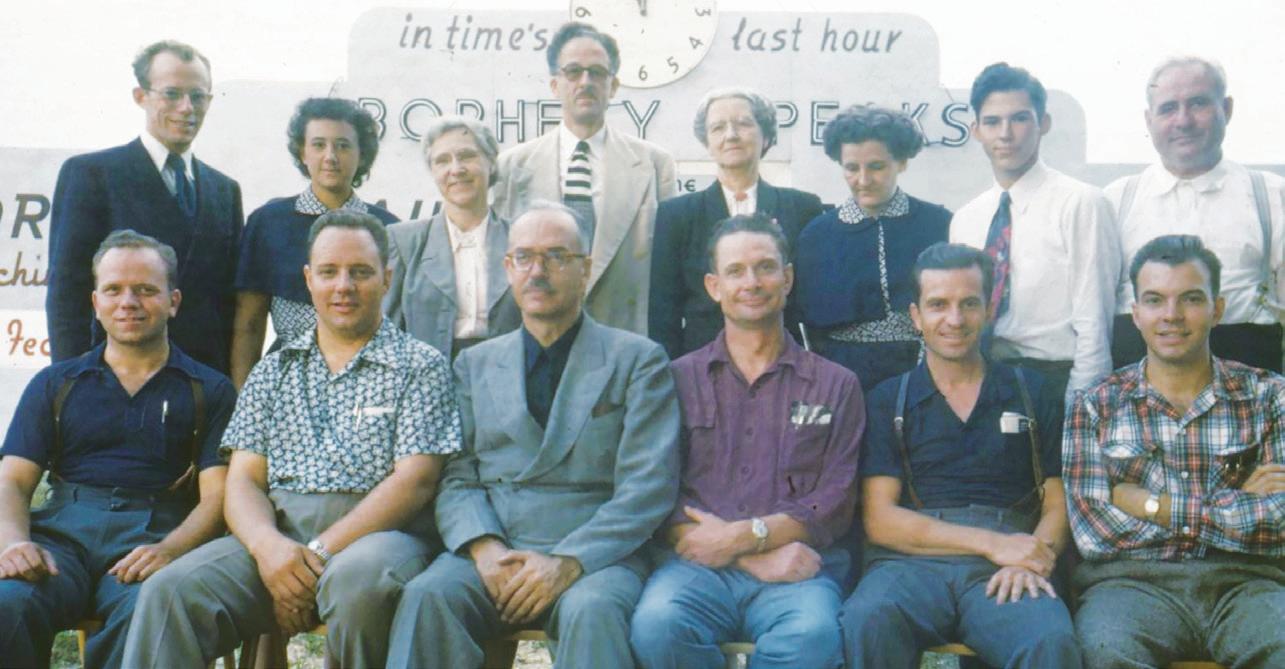
out live on 225 stations every Sunday evening. Enrollments soared again.2
This Bible Correspondence School developed into a major evangelistic tool for the church. By 1952, the Voice of Prophecy was operating 69 Bible correspondence schools and broadcasting over more than 700 stations around the world.
It’s inspiring to think of what was achieved by one dedicated Christian who chose to follow the Lord’s leading and experiment with a new avenue for sharing the good news—a tribute to all those who helped him achieve his dream in the West. For while this was a new medium for the message, for Richards it was still biblical preaching. He wrote:
There may be speakers who interest people, who dazzle them with oratorical fireworks, who philosophize and propound intricate speculations; but this is not preaching, because it is not truth. True preaching must have a true man behind it. True preaching always involved both a personality and truth; and there is a third element—it must be scriptural truth. So Jesus preached. He was a true man, the Son of man; He preached truth, God's truth; and it was from Scripture.3
Richards concluded: When we preach we need to preach for action, for a decision at that moment and in
that place. We need preaching like that of the apostles on the day of Pentecost, when the hearers were so stirred in their hearts that they said, "Men and brethren, what shall we do?" (Acts 2:37).
So living and so speaking that the church is built up and sinners are converted to God—that is preaching!4
1O.M. Berg, “H.M.S. Richards: Committed Evangelistic Preacher,” The Ministry 43, no. 10 (Oct. 1970), p. 6.
2Eldyn Karr, “The Golden Voice,” Review and Herald 169, no. 7 (Feb. 13, 1992), pp. 11-12.
3H.M.S. Richards, “What Is Preaching?” The Ministry 30, no. 9 (Sept. 1957), p. 5.
4H.M.S. Richards, “What Is Preaching?” p. 7.
BELOW: Voice of Prophecy headquarters, Glendale, CA.
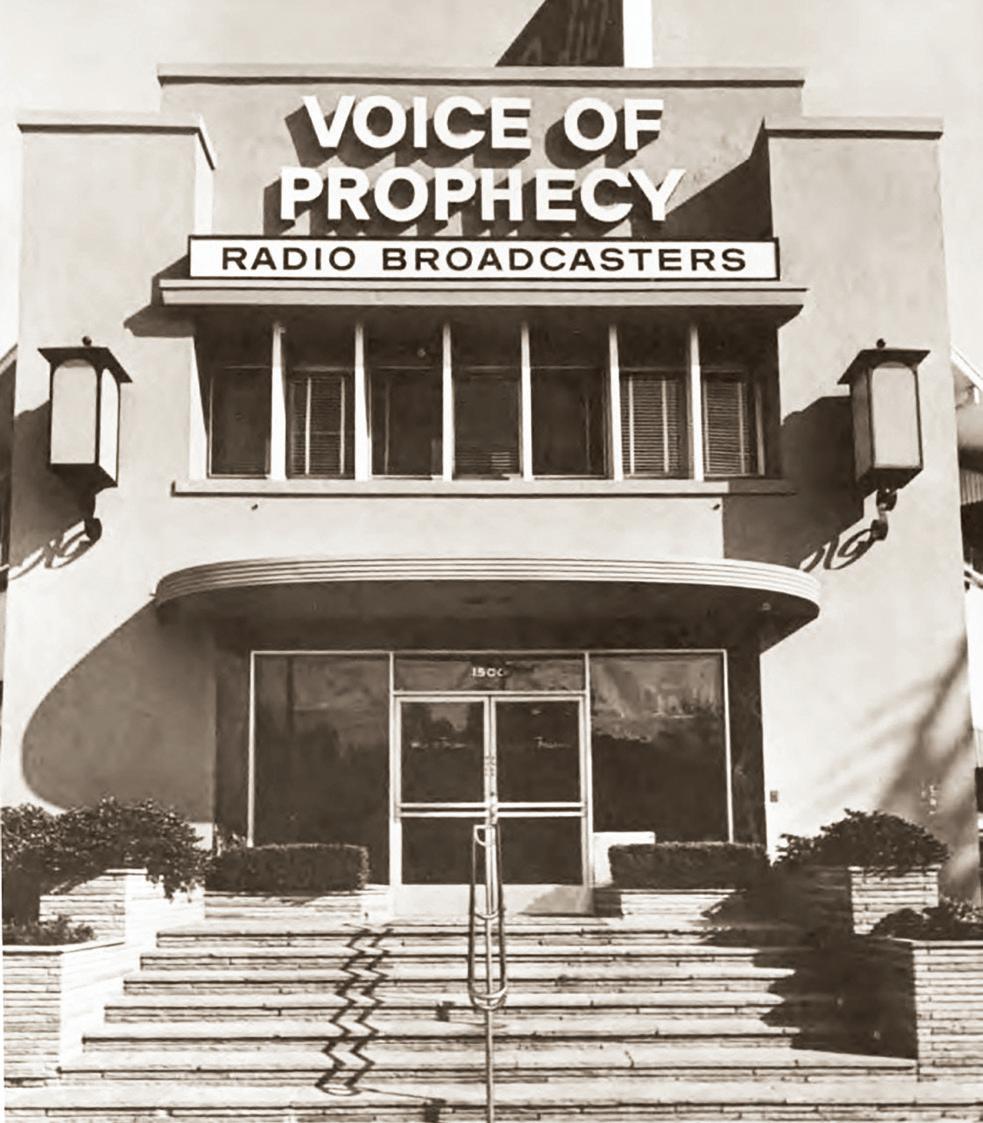
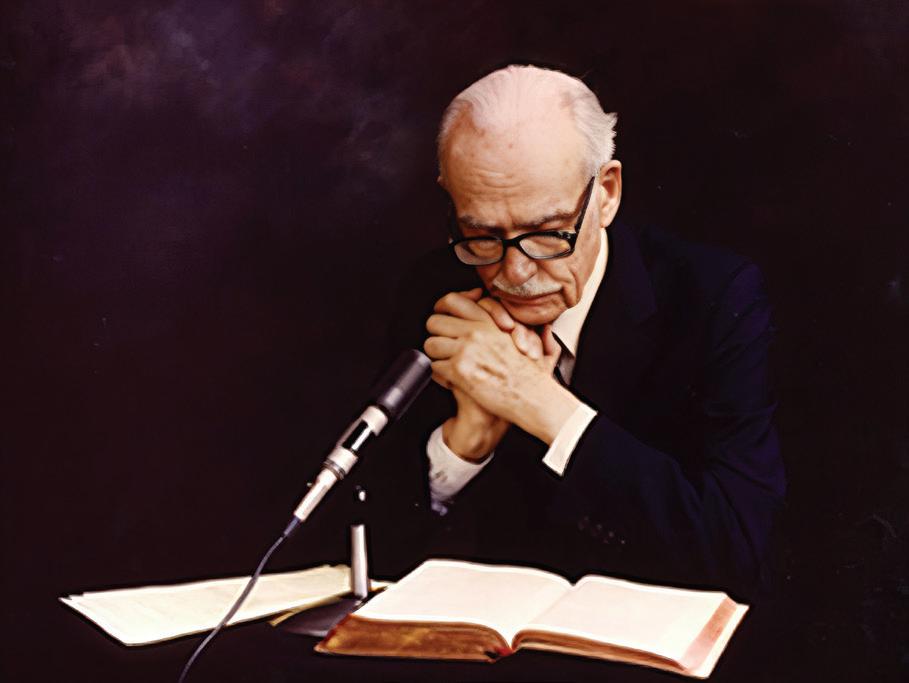
By Laurie Trujillo
Growing in Christ is about spiritual growth and transformation through Jesus Christ. This journey begins with a pivotal choice: to stop resisting. Ellen White beautifully captures this truth in Steps to Christ: “The sinner may resist this love, may refuse to be drawn to Christ; but if he does not resist he will be drawn to Jesus” (p. 27). Similarly, in Acts 7, Stephen recounts the history of the Jewish people and boldly declares in verse 51, “You stiff-necked people, uncircumcised in heart and ears, you always resist the Holy Spirit. As your fathers did, so do you.”1
Both Stephen and Ellen White remind us that resistance is a choice—a choice that can hinder our spiritual growth. But when we choose not to resist, we open the door to fully embracing God’s abundant grace, mercy, and love through the power of the Holy Spirit.
Spiritual growth involves surrendering to Him rather than striving on our own. This allows His love and guidance to shape us. Just as plants flourish with water, sunlight, and care, we are called to depend on Jesus, who provides everything we need for a life of joy, purpose, and transformation.
As a former ESL teacher and current director of communication and development at the Northern California Conference, I know how easily we can skim words, filtering them through our biases and assumptions. The article's opening sentence,
“Growing in Christ is about spiritual growth and transformation through Jesus Christ,” introduces three profound words that capture the heart of Fundamental Belief 11: “growing,” “transformation,” and “through.” Each of these words holds deep meaning, inviting us to reflect on the purpose and depth of our spiritual journey in Christ. Let’s explore their significance together.
My dad, Arnold Trujillo, a retired Pacific Union Conference vice president, thoughtfully shared his insights: “Growing in Christ is not about self-reflection; it's about fixing our eyes on Jesus. Our spiritual growth springs from God's initiatives, as highlighted in Philippians 2:13: ‘For it is God who works in you, both to will and to work his good pleasure.’”
An effective way to understand growth is to observe nature. Can a pine tree summon rain and sunlight to thrive? Do the fragrant roses fret over water and sunlight? These plants accept nature's gifts. They do not strive or struggle to enhance their health or vitality; instead, they depend on the elements— water, nutrients, and sunshine.
Consider the wisdom in Matthew 6:28, where Jesus says, “And why are you anxious about clothing? Consider the lilies of the field, how they grow: they neither toil nor spin.” Ellen White expanded this idea further: “Consider, says Jesus, how the lilies grow;
how, springing from the cold, dark earth, or the mud of the river bed, the plants unfold in loveliness and fragrance. Who would dream of the possibilities of beauty in the rough brown bulb of the lily? But when the life of God, hidden therein, unfolds at His call in the rain and the sunshine, men marvel at the vision of grace and loveliness” (Thoughts From the Mount of Blessing, p. 97).
Our journey with Jesus mirrors this process as we depend on His grace and mercy to grow spiritually. Jesus has already accomplished the most challenging part—His sacrifice on the cross that brings us justification (mercy)—and continues interceding through sanctification (grace). White again captures this beautifully: “The same divine mind that is working upon the things of nature is speaking to the hearts of men and creating an inexpressible craving for something they have not” (Steps to Christ, p. 28). This divine yearning leads us to experience the depth of God’s mercy and grace—transformational gifts from God.
Consider this example: A man desperate to feed his family is caught stealing food from a small grocery store. Rather than pressing charges for his transgressions, the store owner offers him a job and a bag of groceries to take home that day. With kindness, she tells him, “I want to help you get back on your feet; everyone deserves a second chance.” In this scenario, grace shines through the store owner’s compassion. She transcends mere forgiveness—which is mercy—by extending immediate aid and a chance for steady employment—gifts he never earned or expected. This exhibition of mercy and grace is the unmerited kindness that empowers him to reclaim his dignity and move forward.
Grace, as described in Ephesians 2:8-9, is an unearned gift: “For by grace you have been saved through faith. And this is not your own doing; it is the gift of God, not a result of works, so that no one may boast.” Together, mercy and grace offer a transformative power that can change lives.
A life transformation is a deep and meaningful growth and renewal process that transcends moments and requires time. It involves breaking free from past limitations—shedding old habits, fears, and mindsets to make room for growth, resilience, and purpose. This type of transformation reaches the heart, reshapes character, and aligns actions with values and aspirations. Like an earthquake, it is a tectonic shift that inspires personal transformation and uplifts everyone around you.
To illustrate this idea, consider a scenario where a coworker misses a crucial deadline that impacts your shared project. You face a choice: report them to your manager, which might lead to disciplinary measures, or take a different path. You tell them, “We all have tough weeks. Let’s focus on completing this together.” This is an act of mercy—you grant them an opportunity to recover, freeing them from otherwise warranted penalties. You go further by staying late and helping them catch up, embodying grace through unexpected support. These actions of grace and mercy foster goodwill and team collaboration.
Our transformation in Christ is an ongoing process of aligning ourselves with His love, gradually shifting from old ways toward becoming a reflection of Jesus.
Ezekiel 36:26 speaks of this change: “I will give you a new heart, and a new spirit I will put within you.”
2 Corinthians 5:17 declares, “Therefore, if anyone is in
Our transformation in Christ is an ongoing process of aligning ourselves with His love, gradually shifting from old ways toward becoming a reflection of Jesus.
Christ, he is a new creation. The old has passed away; behold, the new has come.” These powerful verses assure us that, in Christ, we are not defined by our past. Instead, we are renewed in purpose and grace, empowered to live a meaningful life through God’s love for us.
“Through” reflects a process—a journey of growth and conversion. Spiritual evolution, like the path from seed to towering tree, takes time and patience. In our relationship with Jesus, growth is a continuous journey rather than a single event. And when times are tough, we may be fearful or worried or feel we have strayed too far from our relationship with Jesus. Remember, God challenges our worries: “And why are you anxious about clothing?” (Matthew 6:28). Similarly, in 1 John 1:9, we are reminded that “He is faithful and just to forgive us our sins and to cleanse us from all unrighteousness.”
In my busy household, my daughter, Katie, agreed to new responsibilities with consequences if she did not follow through. One hectic week, her chores slipped through the cracks. She came to me, prepared for the consequences. Instead, I said, “I’ll let it go this time. Let’s work together to stay on track next week”—an act of mercy. Then I added, “It’s been a busy week; let’s get ice cream!” Surprised, Katie experienced grace—an unexpected, unearned gift. Sometimes, love means compassion over rules, even when we fall short.
God’s transformative power enables us to view our trials not as insurmountable obstacles but as opportunities to trust Him more deeply. As we deepen our relationship with Jesus and entirely rely on His mercy and grace, moving forward in faith, our lives become testimonies. We stand as living proof of His love and the profound truth of John 3:16: “For God so loved the world that he gave his only Son, that whoever believes in him should not perish but have eternal life.” God's love for us is limitless, and His promise of eternal life awaits all who believe.
Growing in Christ is a journey of faith— embracing mercy, grace, and salvation through belief in God’s extraordinary gift of His Son, who died for our sins to free us from their consequences and now intercedes on our behalf with the Father. This journey begins with a simple yet profound choice: to stop resisting the Holy Spirit and surrender to God’s will.
As we yield to Him, Jesus works within us, transforming old habits and patterns into a new way of living. Through this miraculous and gradual transformation, we become living reflections of His love, testifying to the undeniable power of His presence in our lives.
Every step forward on this journey is marked by moments of forgiveness and grace, unearned gifts that God freely gives. As 2 Corinthians 3:18 reminds us, we become what we behold. The more we immerse ourselves in God’s Word, prayer, and worship, the more intimately we know Him and experience His life-giving, joy-giving power.
Proverbs 3:5-6 provides a roadmap for our journey: “Trust in the Lord with all your heart, and do not lean on your own understanding. In all your ways acknowledge him, and he will make straight your paths.” Every thorn we encounter becomes an opportunity to trust our Gardener. Just as plants flourish under the hand of a skilled gardener, we thrive when we rely on Jesus, who provides all we need. Through trust and surrender, we embark on a journey of growth in Christ, guided by His love, empowered by His grace, and transformed to reflect His light to the world. Let us commit to growing in Christ, allowing His presence to guide us toward a future filled with hope, joy, strength, and unshakable faith.
Laurie Trujillo is director of communication and development of the Northern California Conference. 1All Scripture quotations are from the English Standard Version.
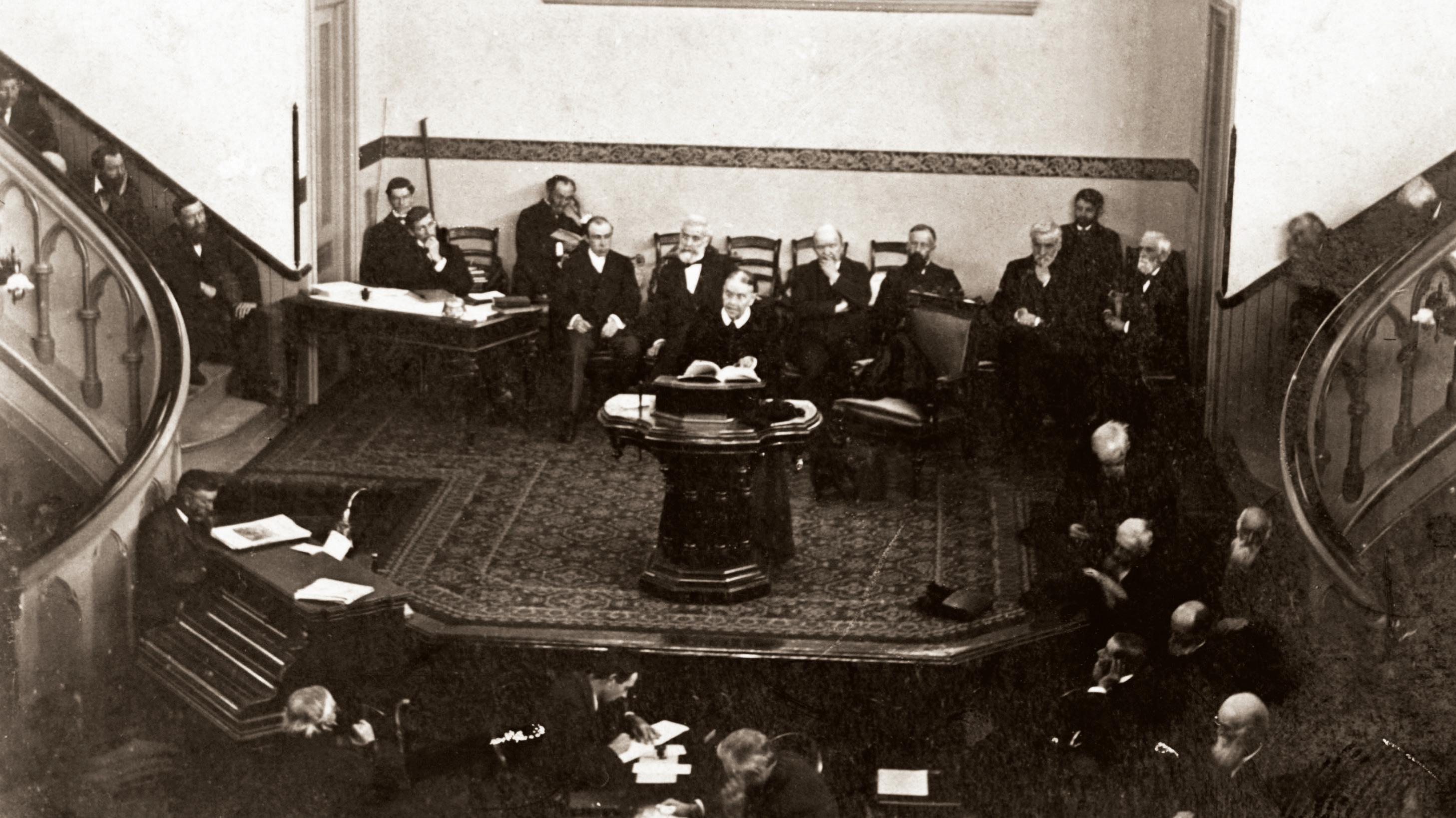
By Roy Branson
How does one resolve the apparent contradiction in the following statements from Ellen G. White?
“Christ came to this earth with a message of mercy and forgiveness. He laid the foundation for a religion by which Jew and Gentile, black and white, free and bond, are linked together in one common brotherhood, recognized as equal in the sight of God.”1
“The colored people should not urge that they be placed on an equality with white people.”2
Was Mrs. White inconsistent? Was her true position equality of race? If so, why did she urge in volume nine of the Testimonies, “Let the white believers and the colored believers assemble in separate places of worship”?3
In order to understand Mrs. White's statements
urging segregation at the turn of the century, it is necessary to recreate their context. What were her racial views as a whole? What were Adventist contemporaries saying about race? What were the changing social and political conditions of 19thand early 20th-century America? Finding answers to these questions leads one to conclude that to her contemporaries Mrs. White could never have appeared to be a racist. In fact, throughout much of her life, radicals on race relations would have assumed that she was one of their own.
Today, denouncing slavery and its advocates does not seem revolutionary. But the majority did not oppose slavery in mid-19th-century America. So many good and regular members of the Methodist denomination condoned slavery that the church split in 1844. A year later, slavery divided
the Baptists. These denominations provided most of the members for the Seventh-day Adventist Church, which at that time was working largely in the North. In 1857, the New Side Presbyterians could no longer agree on the Christian attitude toward slavery. So many Christians defended slavery in 1861 that three denominations were torn apart: Old Side Presbyterians, Lutherans, and Episcopalians.
While many fine Christians defended slavery or insisted that it was an economic or political issue, certainly not a moral one, Mrs. White called slavery “a sin of the darkest dye.”4 Furthermore, she demanded its public defenders be disfellowshiped from the Advent Movement.
You have never looked upon slavery in the right light, and your views of this matter have thrown you on the side of the Rebellion, which was stirred up by Satan and his host. Your views of slavery cannot harmonize with the sacred, important truths for this time.
You must yield your views or the truth. Both cannot be cherished in the same heart, for they are at war with each other.... Unless you undo what you have done, it will be the duty of God's people to publicly withdraw their sympathy and fellowship from you, in order to save the impression which must go out in regard to us as a people. We must let it be known that we have no such ones in our fellowship, that we will not walk with them in church capacity.5
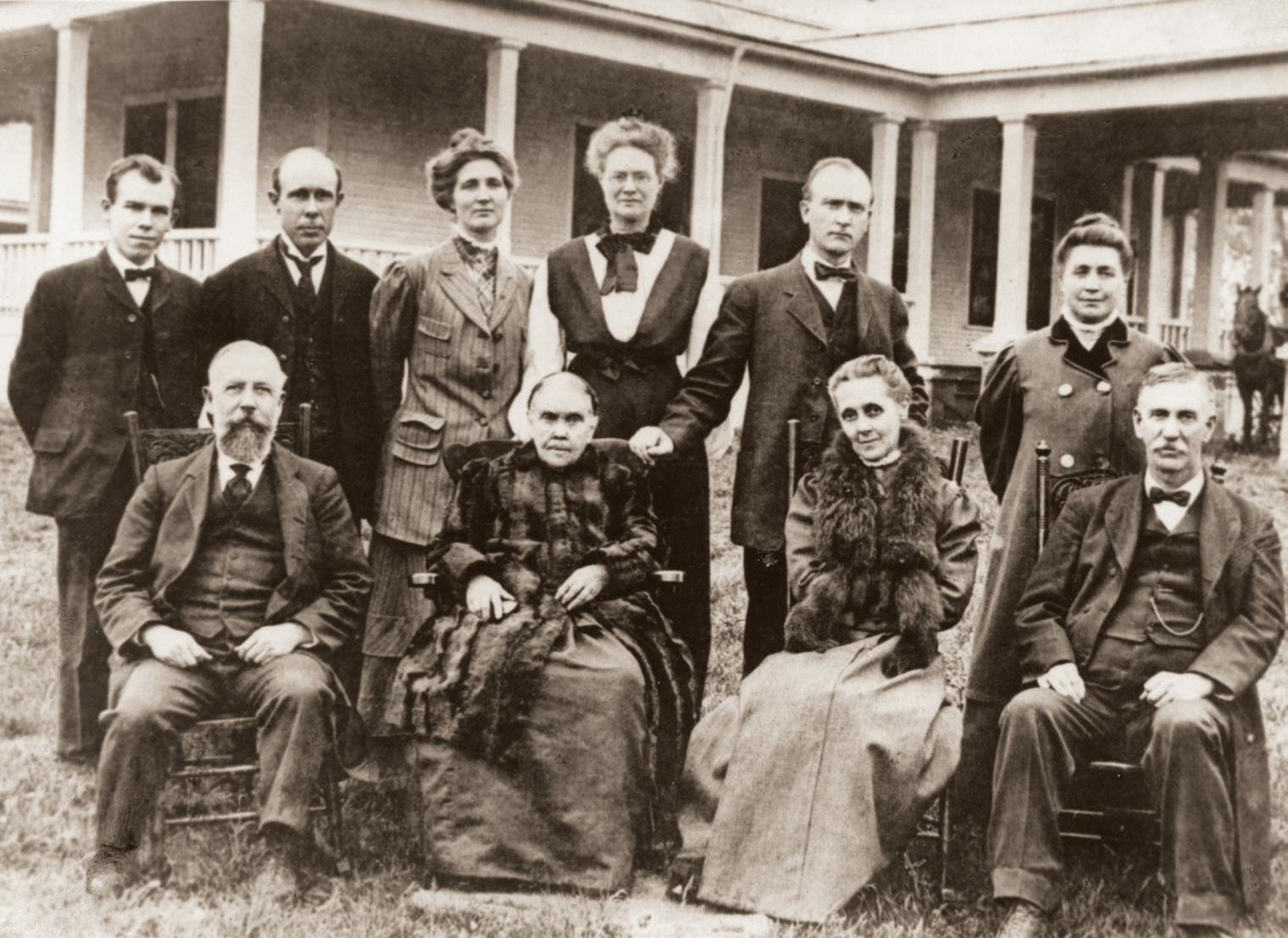
At a time when slavery was an open question for Americans, Mrs. White declared that Adventists holding proslavery views were anathema. It would have been possible to denounce slavery in the strong terms Mrs. White used and still have stopped short of being an abolitionist. In fact, Adventists were abolitionists at a time when most opponents of slavery were advocating other solutions. Some who attacked the existing system of slavery advocated dispersion of Blacks throughout the country. Others proposed separating American Blacks into "Africanized states" in the deep South.6 Until 1833, most opponents of slavery supported colonization of American Blacks in Africa, Central America, or the Caribbean Islands. At different times in its history, the American Colonization Society boasted among its officers such men as Secretary of the Treasury William H. Crawford, Speaker of the House of
Representatives Henry Clay, and former Presidents James Madison and James Monroe.7 President Lincoln called a group of free Blacks to the White House in August 1862 and urged them to support colonization. Right to the end of the war, he thought colonization would help relieve the racial problem in America.8 A further indication that abolition was not synonymous with antislavery sentiment was the fact that the official position of the Republican Party was not abolition of slavery but that it not be extended into new states.9
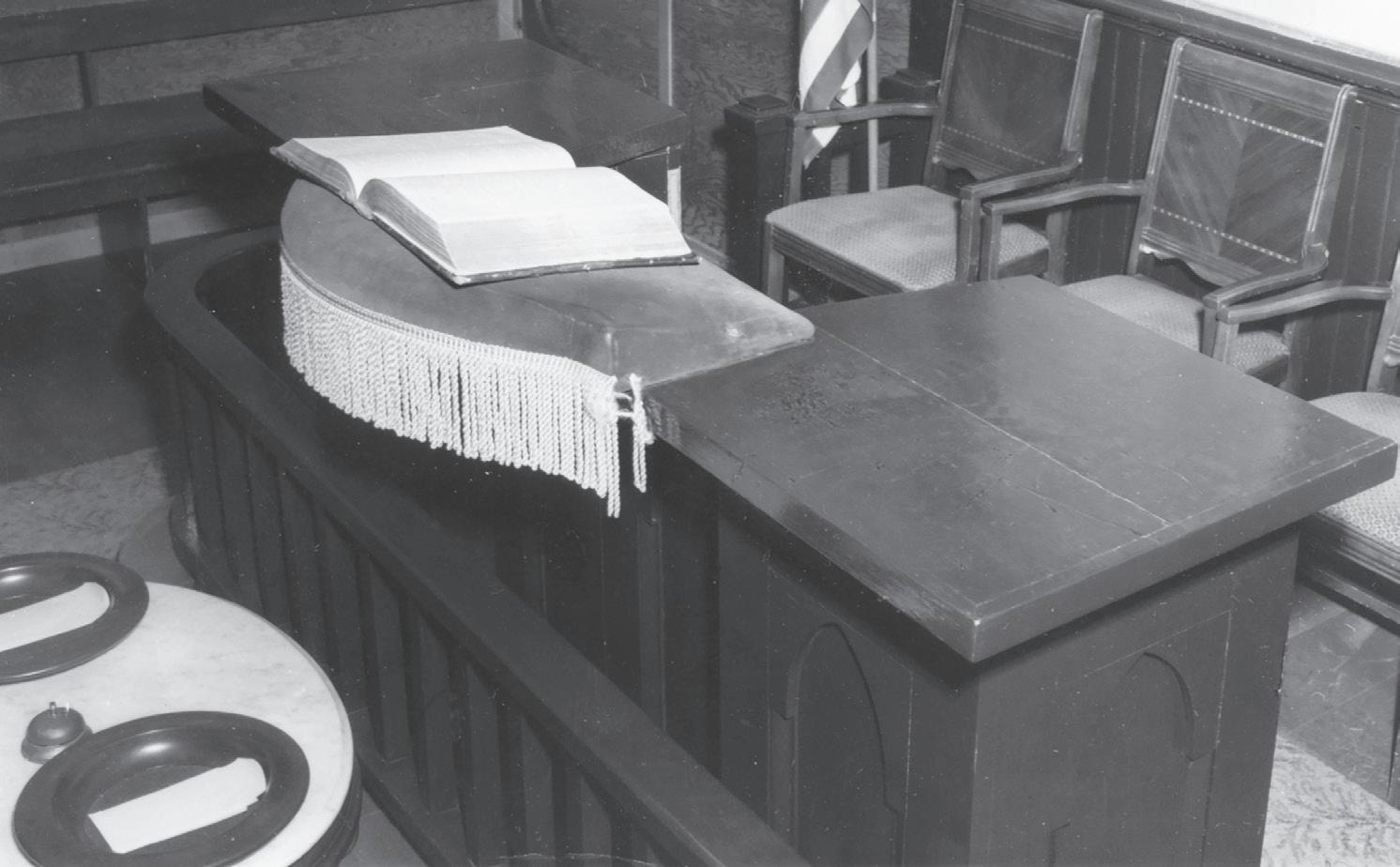
them. Years later she settled in Battle Creek. There she had Seventh-day Adventist friends, and early Battle Creek College students often visited her. At least one edition of her biography was printed by the Review and Herald for its author, Frances Titus.
Even in the North, abolitionists were considered extremists. A few days after Pennsylvania Hall, built especially for abolitionist meetings in Philadelphia, was first opened, a pro slavery mob burned it to the ground. William Lloyd Garrison, commemorated today by a statue in Boston, was mobbed by Bostonians trying to tar and feather him for abolitionist agitation. As one historian has said, "To be an abolitionist in Boston, Philadelphia, or Cincinnati meant courting social ostracism, business ruin, and physical assault.”10 North and South, abolitionists were considered almost as extreme as demonstrators in American cities today. “The abolitionist movement never became the major channel of Northern antislavery sentiment. It remained in 1860 what it had been in the l830's: the small but not still voice of radical reform.”11
Among the variety of antislavery groups, Adventists identified themselves with the radical, abolitionist minority. Sojourner Truth, one of the Black heroines of abolition, visited a Millerite camp meeting in 1843, though she did not agree with
Joseph Bates, the former sea captain who had so much to do with Adventists' accepting the Sabbath, first supported the American Colonization Society and later helped found the abolitionist society in his hometown.12
Even within this extreme reformist segment of American society, some were more radical than others, and Adventists stood with the most activist. "Abolitionists were also divided on the matter of devoting time and energy to assisting fugitive slaves."13 Prominent Adventists had no such qualms. John Preston Kellogg, the father of John Harvey Kellogg and W.K. Kellogg, was one of the incorporators of the Seventh-day Adventist publishing association and a member of the Seventh-day Adventist Church to the end of his life. He used his farm in Michigan to harbor slaves fleeing their former owners.14 John Byington, the first president of the General Conference of Seventh-day Adventists, had earlier left the Methodist Episcopal Church because it did not take a stand against slavery. At his farm in Buck's
Bridge, New York, he maintained a station of the Underground Railroad, illegally transporting fugitive slaves from the South to Canada.15
Anyone who thinks these men were aberrations with the Adventist Church should remember that Mrs. White herself said that “the law of our land requiring us to deliver a slave to his master, we are not to obey.”16 While even some of the abolitionists refused to go so far as breaking the fugitive slave law, Mrs. White advocated disobeying this federal statute. She did this on the basis that this law conflicted “with the word and law of God.”17 She may have had in mind Deuteronomy 23:15: "Thou shalt not deliver unto his master the servant which is escaped from his master unto thee" (KJV).
When the North elected Lincoln, the fugitive slave law was still the law of the land. In his first inaugural address Lincoln went out of his way to promise that he would enforce that law specifically. He also reminded the country that they had not voted for abolition. Quoting from his own campaign speech, he pledged anew that “I have no purpose, directly or indirectly, to interfere with the institution of slavery in the states where it exists. I believe I have no lawful right to do so, and I have no inclination to do so.”18
Even when war broke out, Lincoln refused to proclaim emancipation. In fact, he ordered Union officers to stop harboring fugitive “slaves escaping” to advancing Union armies. Abolition leaders such as Wendell Phillips, Henry Sumner, and William Garrison exploded into attacks on Lincoln and his administration.19
Mrs. White, too, complained that “thousands have been induced to enlist with the understanding that this war was to exterminate slavery; but now that they are fixed, they find that they have been deceived, that the object of this war is not to abolish slavery.”20
Not only had American citizens been alienated,
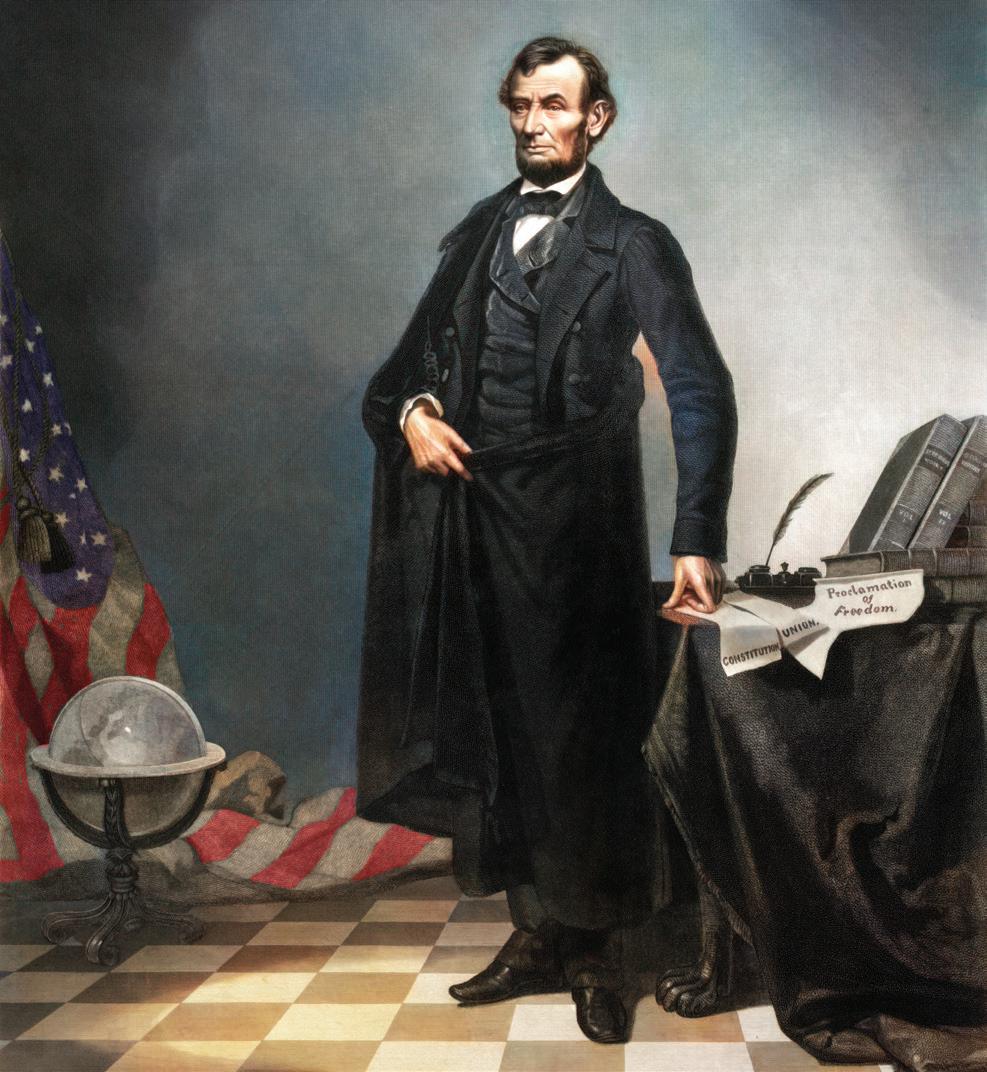
but potential allies as well. “I was shown that if the object of this war had been to exterminate slavery, then, if desired, England would have helped the North. But England fully understands the existing feelings in the Government, and that the war is not to do away with slavery, but merely to preserve the Union.”21 Failure of the North to declare emancipation of slaves its goal had not only led to the undermining of morale and loss of allies but even worse, to outright subversion. “There are commanding officers who are in sympathy with the rebels. While they are desirous of having the Union preserved, they despise those who are antislavery.... It seems impossible to have the war conducted successfully, for many in our own ranks are continually working to favor the South, and our armies have been repulsed and unmercifully slaughtered on account of the management of these proslavery men.”22
Mrs. White's statement could most likely have been applicable to General George B. McClellan, General-in-Chief of the Union Army, who was persistently attacked by abolitionists for not

strongly opposing slavery and for not executing the war more vigorously.23
Mrs. White rose to the heights of indignation when Northern leaders, indifferent to the cause of abolition, returned slaves to their former owners and simultaneously issued pious proclamations for national fasts and prayer. Such hypocrisy must be condemned.
I saw that these national fasts were an insult to Jehovah. He accepts of no such fasts....
Great men, professing to have human hearts, have seen the slaves almost naked and starving, and have abused them, and sent them back to their cruel masters and hopeless bondage.… They have deprived them of the liberty and free air which heaven has never denied them, and then left them to suffer for food and clothing. In view of all this, a national fast is proclaimed! Oh, what an insult to Jehovah!24
Clearly, Mrs. White stood with that abolitionist minority in the North, which condemned those who hesitated or equivocated on the emancipation issue.
Roy Branson was a Seventh-day Adventist theologian, social activist, ethicist, and educator. He was director
White family portrait (1864). Left to right: Ellen, Willie, James, Edson.
of the Center for Christian Bioethics at Loma Linda University Health when he passed away in 2015. This article appeared in the April 9, 1970, Review and Herald. Used with permission.
1Ellen G. White, Testimonies for the Church, vol. 7 (Mountain View, CA: Pacific Press Pub. Assn., 1902), p. 225.
2Ellen G. White, Testimonies for the Church, vol. 9 (Mountain View, CA: Pacific Press Pub. Assn., 1909), p. 214.
3White, Testimonies for the Church, vol. 9, p. 208.
4Ellen G. White, Testimonies for the Church, vol. 1 (Mountain View, CA: Pacific Press Pub. Assn., 1885), p. 359.
5White, Testimonies for the Church, vol. 1, p. 359.
6Robert F. Durden, "Ambiguities in the Antislavery Crusade of the Republican Party,'' in The Anti-Slavery Vanguard, ed. Martin B. Duberman (Princeton: Princeton University Press, 1965), pp. 375-376.
7P. J. Staudenraus, The African Colonization Movement, 1816-1865 (New York: Columbia University Press, 1961).
8John Hope Franklin, From Slavery to Freedom (New York: Knopf, 1956), p. 281.
9Durden, “Ambiguities,” p. 365.
10Frank Thistlethwaite, America and the Atlantic Community (New York: Harper and Row, 1963), p. 116.
11Martin Duberman, "Northern Response to Slavery," in The Anti-Slavery Vanguard, p. 395.
12Joseph Bates, The Autobiography of Elder Joseph Bates (Battle Creek, MI: Seventh-day Adventist Pub. Assn., 1868), pp. 232, 233, 236-238.
13Larry Gara, "Who Was an Abolitionist?" in The Anti-Slavery Vanguard, p. 39.
14Don F. Neufeld, ed., Seventh-day Adventist Encyclopedia (Washington, DC: Review and Herald Pub. Assn., 1966), pp. 650, 1060.
15Neufeld, SDA Encyclopedia, p. 181.
16White, Testimonies for the Church, vol. 1, p. 201.
17White, Testimonies for the Church, vol. 1, p. 201.
18Roy P. Basler, ed., The Collected Works of Abraham Lincoln, vol. 4 (New Brunswick, NJ: Rutgers University Press, 1953), p. 263.
19Franklin, From Slavery to Freedom, p. 273.
20White, Testimonies for the Church, vol. 1, p. 254.
21White, Testimonies for the Church, vol. 1, p. 258.
22White, Testimonies for the Church, vol. 1, pp. 255-256.
23J.G. Randall, Lincoln the President, vol. 2 (New York: Dodd, Mead & Company, 1945), pp. 108-125, especially pp. 123-124.
24White, Testimonies for the Church, vol. 1, p. 257.
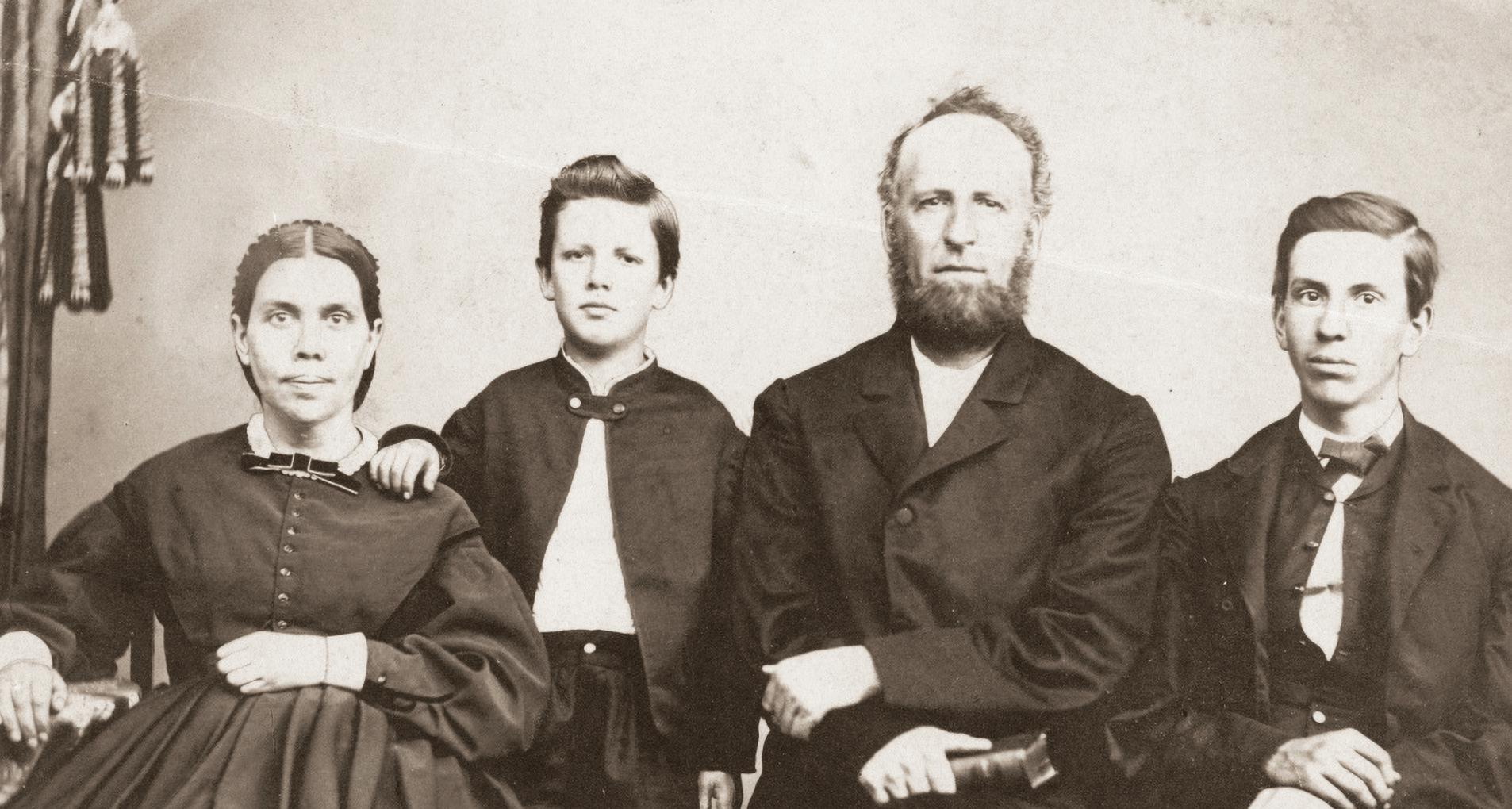

By Alberto Valenzuela
How is your hope for 2025? Can you become enthusiastic about the greeting, “Happy New Year”? Are you hopeful and confident about 2025, or is life so grim or blah that your attitude is, “It’s another year, so what”?
Look back for a minute. Was 2024 like you thought it would be? No doubt you had surprises—some were rather good but, man, were some of them bad! But you got through it, and here you are, looking fairly good.
What does 2025 hold for us? As we came to the close of 2024, were we told that 2025 would be a great year for our community, for our country, for the world?
On the contrary. We heard: more of the same; more shortages; more inflation; more charges and revelations of corruption; more anger, frustration, and fear. We heard such phrases as: “All the good ones are gone.” “Promises, promises.” We heard quotes, such as: “And upon the
earth distress of nations, with perplexity” (Luke 21:25, KJV). It reminds me of John Lennon’s words: “Just give me some truth!” The most hopeful phrase was probably “cautious optimism,” the hope that all the present troubles and uncertainties are necessary adjustments leading to a stable and secure future.
What does 2025 hold for you personally? It could be a graduation, a marriage, time in the hospital, a birth, a death, a promotion, bringing someone to know the Lord and His truth, a move to another city. These things happened to Adventists everywhere during 2024.
What do you need in order to face 2025 with confidence? Someone expressed his desires as follows:
I’d like to be certain of financial security, to know that my income will be adequate to meet any demands that are made on me. With shortages and rising costs, if I know I’ll have enough money to live and be able to add a little to my savings, then I can face 2025 with confidence.
I want health assurance. I worry about my health. If I know that I can maintain my health, then I can face 2025 with confidence.
I want physical security. I want to be at ease when I come and go to work, shop, or visit. I want to be at ease when I am in my home and when I drive out
on the streets. With this security I could face 2025 happily.
Talk to your employer and see whether he will guarantee you financial security for 2025. Will he?
Talk to the retailers and see whether they will guarantee that there will be no shortages of things you want. Will they?
Talk with your doctor and see whether he will assure you of good health for 2025. Will he?
Talk with your police chief and other city officials and see whether they will promise you physical security for 2025. Will they?
What if these people can’t or won’t promise you this security for 2025? Then whither will you turn? What will you do to face 2025 with confidence?
You may say, “I have the promises of political candidates. They say, ‘Elect me and I'll make things better.’”

Every candidate that has ever run for office has made such a claim. There have been a large number of people elected over the years. If each one had made good his promises, as someone has said, we should now be not more than one election away from paradise.
Does my confidence for 2025 come from circumstances or from God? If, when I have financial reverses, I fret against God; if, when my financial security is gone, my faith is gone; then my confidence does not come from God but from my money.
If, when my health is gone, I complain and murmur against God; if, when health is gone, my faith and courage are gone; then my confidence does not come from God but from good health.
If, when friends turn from me and I am slandered, I leave God’s church; if, when friends are gone, my faith and courage go; then my confidence does not come from God but from people. Confidence, strength, and courage for 2025 do not come from the circumstances of contemporary life. These things come from the living, eternal Father of us all.
“Be strong and of a good courage.…”
“Be thou strong and very courageous.…”
“Be strong and of a good courage” (Joshua 1:6, 7, 9, KJV).
This is not Joshua speaking to the people, but the Lord speaking to Joshua. The same Lord has the same strength and courage for us in 2025.
Faith translates the words of Joshua 1:5-9 as, “I will be with you in 2025." Faith accepts Exodus 33:14 as saying, “My presence shall be with you in 2025.” Faith hears Jesus say, “All power in heaven and earth is mine. Go and preach the gospel. I am with you even in 2025.” (See Matthew 28:18-20.)
We need to raise our eyes from the temporary things that are seen to the eternal unseen—to Jesus crowned with glory and honor, our Priest in the midst of His church. "Jesus Christ the same yesterday, and to day, and for ever” (Hebrews 13:8, KJV).
We need to set our affections on the things above and say, “I’ll forget my worry over whether I will have financial security, health security, physical security. My heavenly Father knows I need all these things. Lord Jesus, I want Your work to be finished. I want to share with others the hope You have given to me and that You renew day by day. I want others to have the strength and courage that come from knowing You and Your Word. I want others to know the comfort of the truth.”
Faith that appropriates strength and courage from God will sing the Doxology for 2025—not 12 months from now on December 31, but starting now, January 1, 2025.
Happy New Year, my dear fellow believer.
Alberto Valenzuela is associate director of communication and community engagement of the Pacific Union Conference and the Recorder editor.
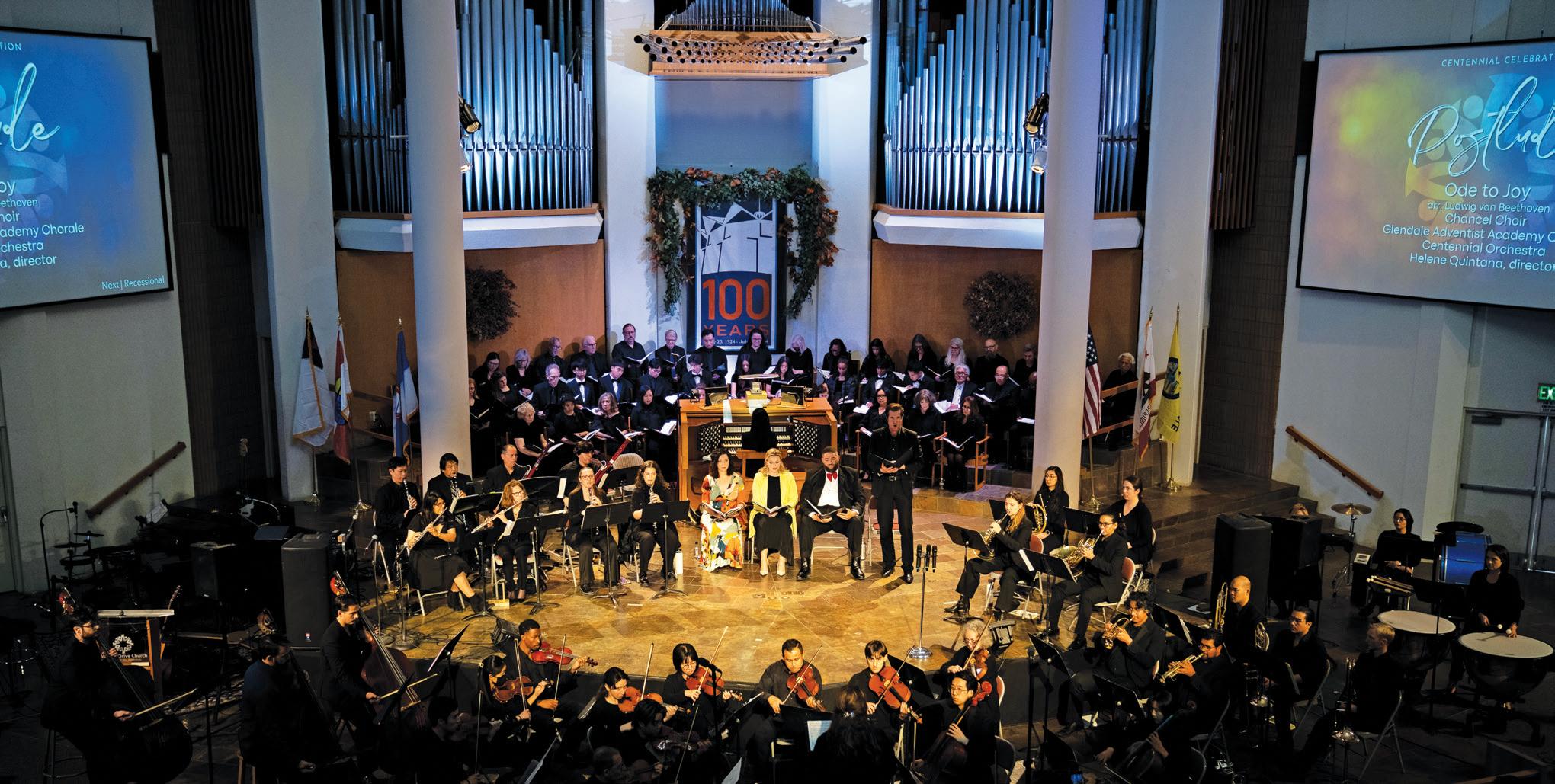
One hundred years is a remarkable milestone—whether it marks the health and vitality of a centenarian or the enduring legacy of institutions rooted in tradition and growth. For the Vallejo Drive church, its century-long journey reflects both—a vibrant testament to faith and community and its unique legacy of promoting both spiritual and physical well-being.
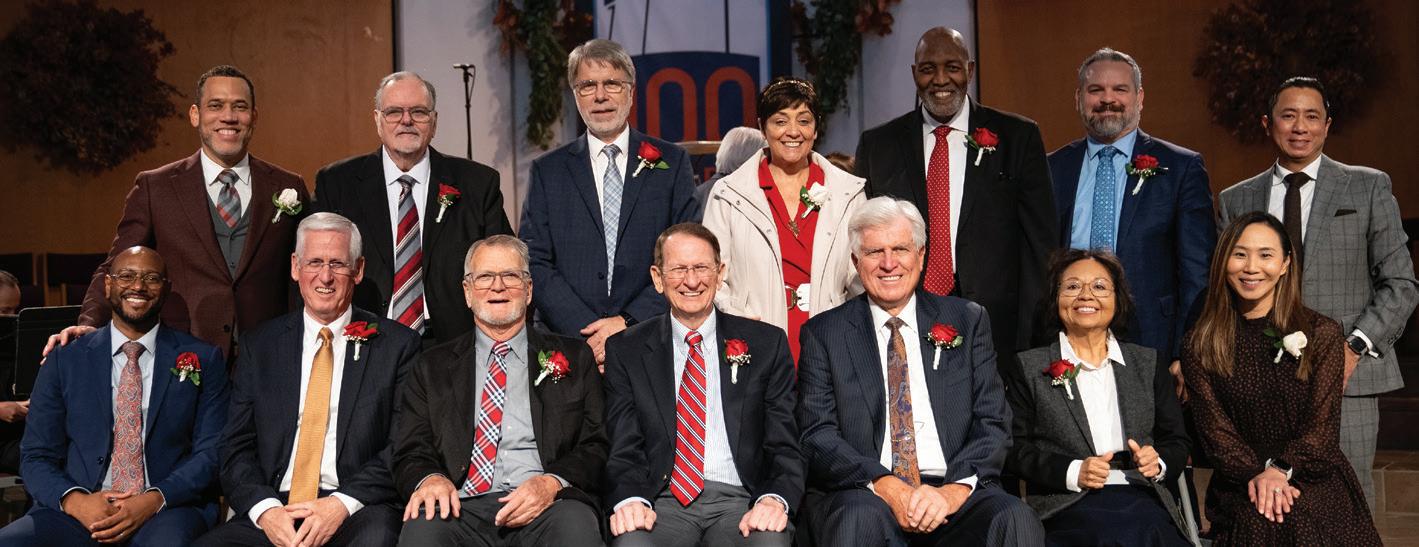
Organized in 1924 as the Glendale Sanitarium church, the congregation began with 80 members. Steady growth quickly followed—just four years later, a 600-seat sanctuary was built thanks to generous support from the Glendale Sanitarium, faithful members, and the Southern California Conference (SCC).
As the years went on and the church continued to
grow, a larger facility once again became necessary. In 1967, the congregation celebrated the dedication of a new church facility—debt-free after the 10-year, $1 million effort.
The church, known as Vallejo Drive church since 1964, has continued to thrive. Marking the official 100-year anniversary on July 23, 2024, the church hosted a large celebration this November, as former members and church leaders, community members, and more gathered to celebrate.
Members share favorite memories during an open mic portion of the afternoon program.
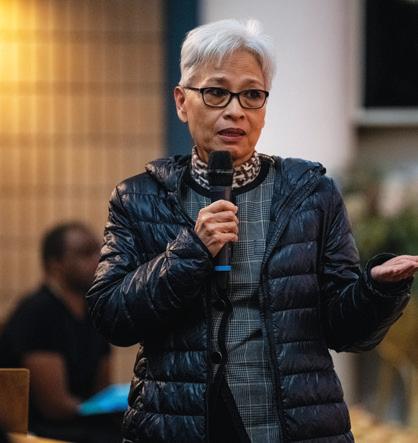
Elizabeth Talbot of Jesus 101, who recalls starting her ministry at Vallejo Drive church, shared a poignant message on Friday evening to kick off the festivities.
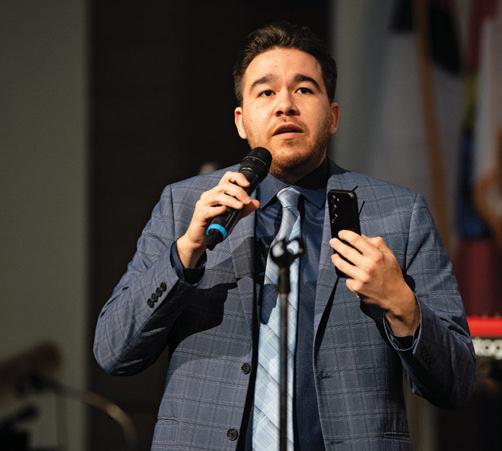
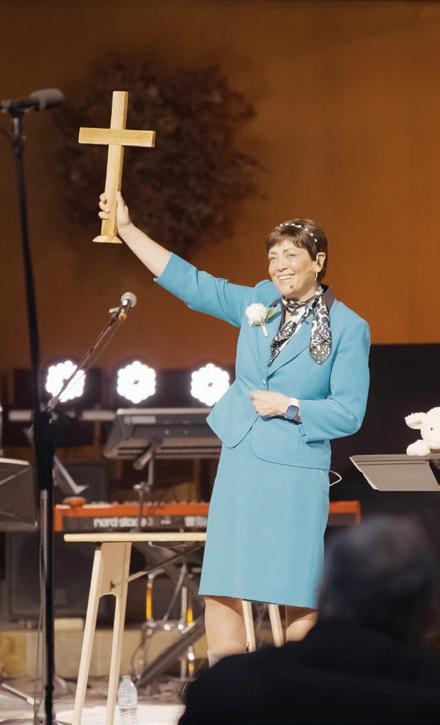
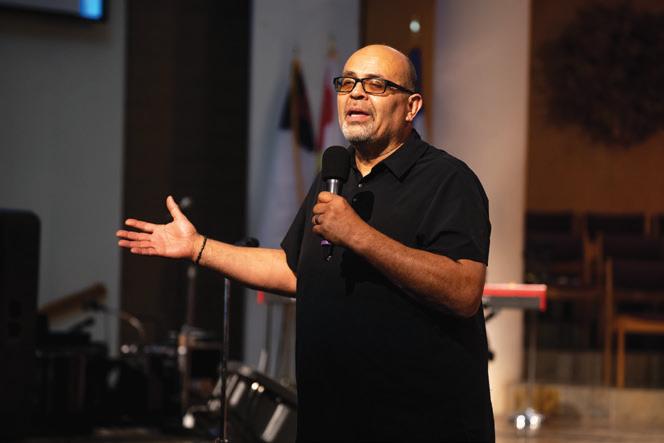
church discussed the lesson. As the divine worship hour commenced, the service was filled with vibrant music, from the orchestra to the choir.
Elizabeth Talbot, former pastor at Vallejo Drive and current speaker/ director for Jesus 101, shares the message on Friday night.
Focusing on Psalm 23, Talbot pinpointed the significance of David—a man who made many mistakes—as the author of this Psalm. “He was definitely not a man who had a perfect heart,” Talbot noted. “Why would God call him a man after His own heart? Well, I became convinced that it was because David needed so much the grace of God that he came to know more about God’s heart. He became a Ph.D. in grace.” She ended with an application of Psalm 23, encouraging listeners to make it personal. “There’s enough grace,” Talbot shared, “for every stage in our journeys.”
Sabbath morning began with an insightful panelstyle Sabbath School, where former pastors of the
From left to right: Aivars Ozolins (present), Peter Baptiste (2017-2019), Jim Clifford (1980-1982), Maria Ovando Gibson (2014-2017), Ben Guerrero (2018-2022), and Ole Olesen (1991-2000).
Ozolins moderates a panel with former Vallejo Drive church pastors for Sabbath School.
Former pastors in attendance were involved in various capacities throughout the event. “You know it’s a big Sabbath celebration when you have Lonnie Melashenko (associate pastor, 1970-1972) giving the children’s story,” current Senior Pastor Jonathan Henderson joked. “And I want you to know, he requested it!” James Kyle, interim senior pastor from 2018-2022, joined the praise team on the platform singing “We’ve Come This Far by Faith,” and Smuts van Rooyen, who served the church as the senior pastor from 1999-2009, shared a video greeting.
Seventh-day Adventist Church President Ted N.C. Wilson recognized the occasion with a video greeting, appreciating Vallejo Drive’s mission and encouraging viewers to continue in faithfulness. Leaders from the conference office also joined to celebrate the anniversary. “Reaching this significant milestone is a testament to God’s enduring grace and the dedication of members and leaders who have carried forward the mission of the church over the past century,” said SCC President John H. Cress of the centennial anniversary, reading from a letter
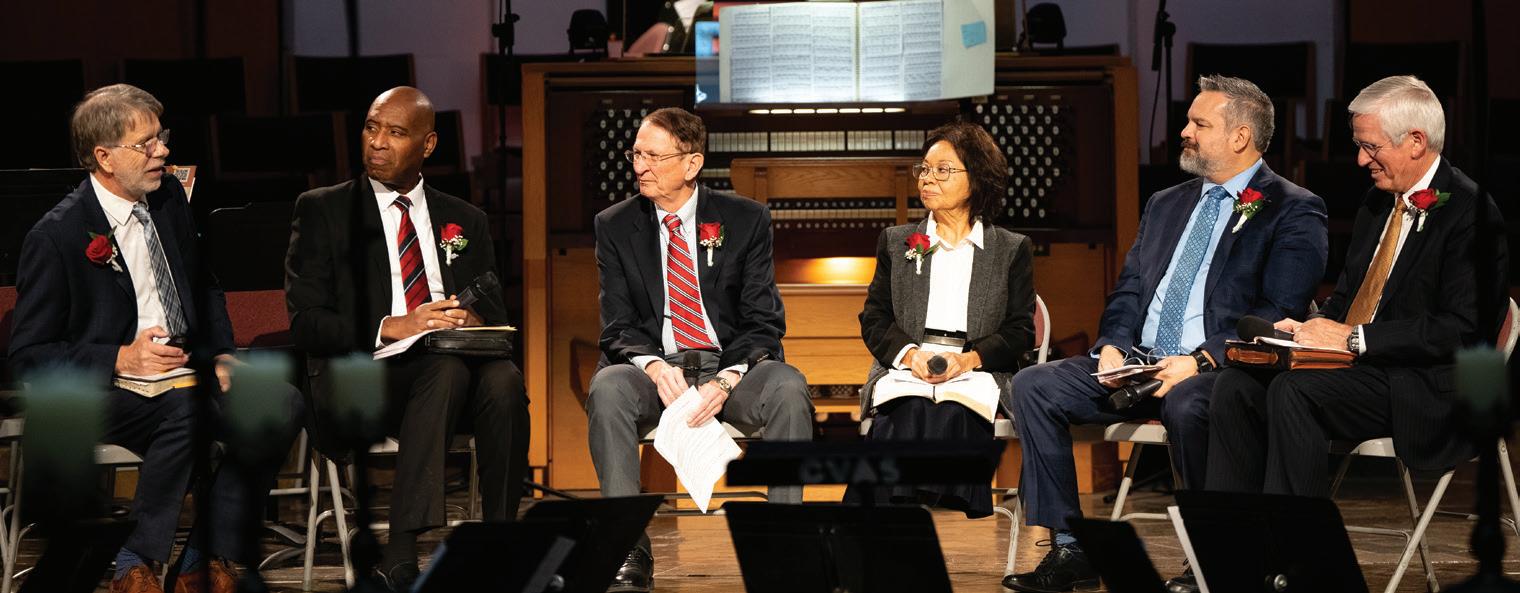

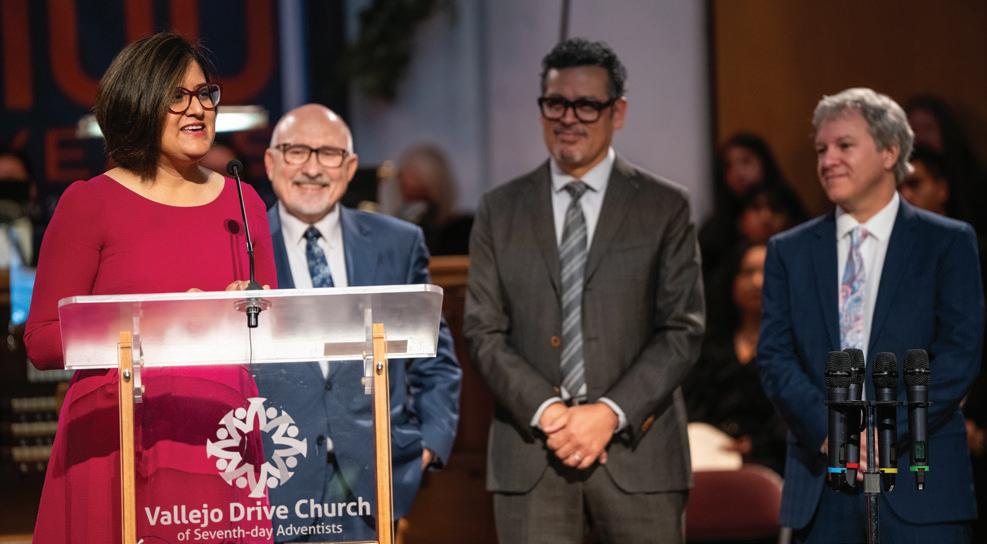
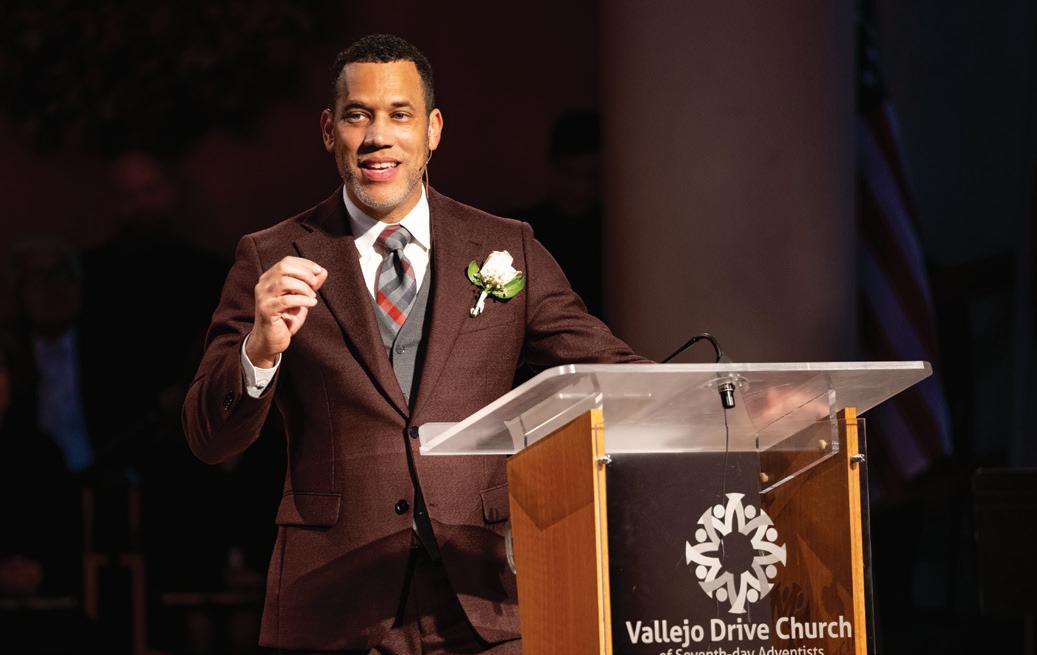
Henderson, Vallejo Drive church senior pastor, shares a message entitled “Further and Higher.”
to commemorate the occasion on behalf of the conference officers.
Henderson delivered the sermon with a focus on the story of Zacchaeus. “Zach for some reason knew that Jesus was safe enough for him to open his heart and home to,” Henderson said, pointing out how Zacchaeus gladly welcomed an unplanned visit from Jesus into his home. Henderson encouraged listeners to be a safe space to those around them, emphasized that Jesus is safe for us today, and committed to the church being a safe space.
The celebration concluded on Saturday evening around sunset with a moving concert by Jacqueline Jewel & Co. Jewel spoke about her roots in Glendale, from her parents getting married at Vallejo Drive to attending Glendale Adventist Elementary in her youth. She recalled thinking when she was invited to the celebration, “You know what, that would be so special to come back home. And it got me thinking, you always
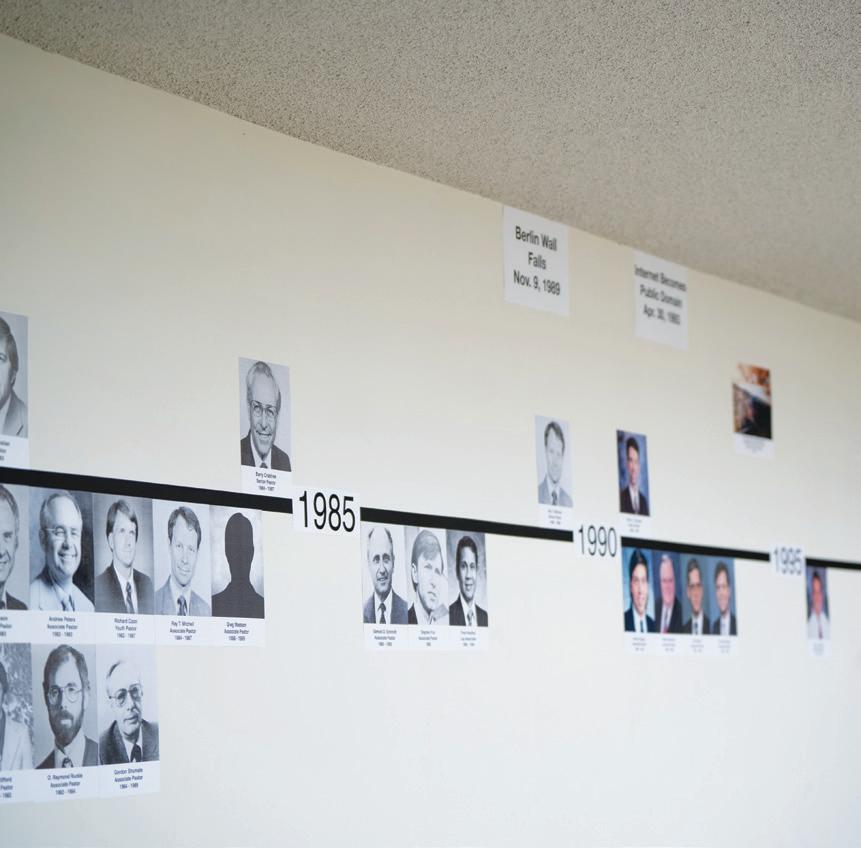
have to remember where you came from, where you are, and where you’re going, right?” Certainly this trajectory was evident throughout the weekend.
As the concert was winding down, Linda Biswas, associate pastor from 2019-2021, charged attendees to move forward energized for the next 100 years. “This is a church, friends,” Biswas said, “not the building, not the organ, not the incredible bathrooms that are coming, but you—you, friends, are a reminder of what happened over the last 100 years when 80 faithful people moved with this building to this location because God had something important that He needed to be done.”
“There was a work here that God knew this generation would do, so I have a question for you, church family,” she said. “What is it that God would have us here at Vallejo Drive do in this new century?”
By Lauren Lacson
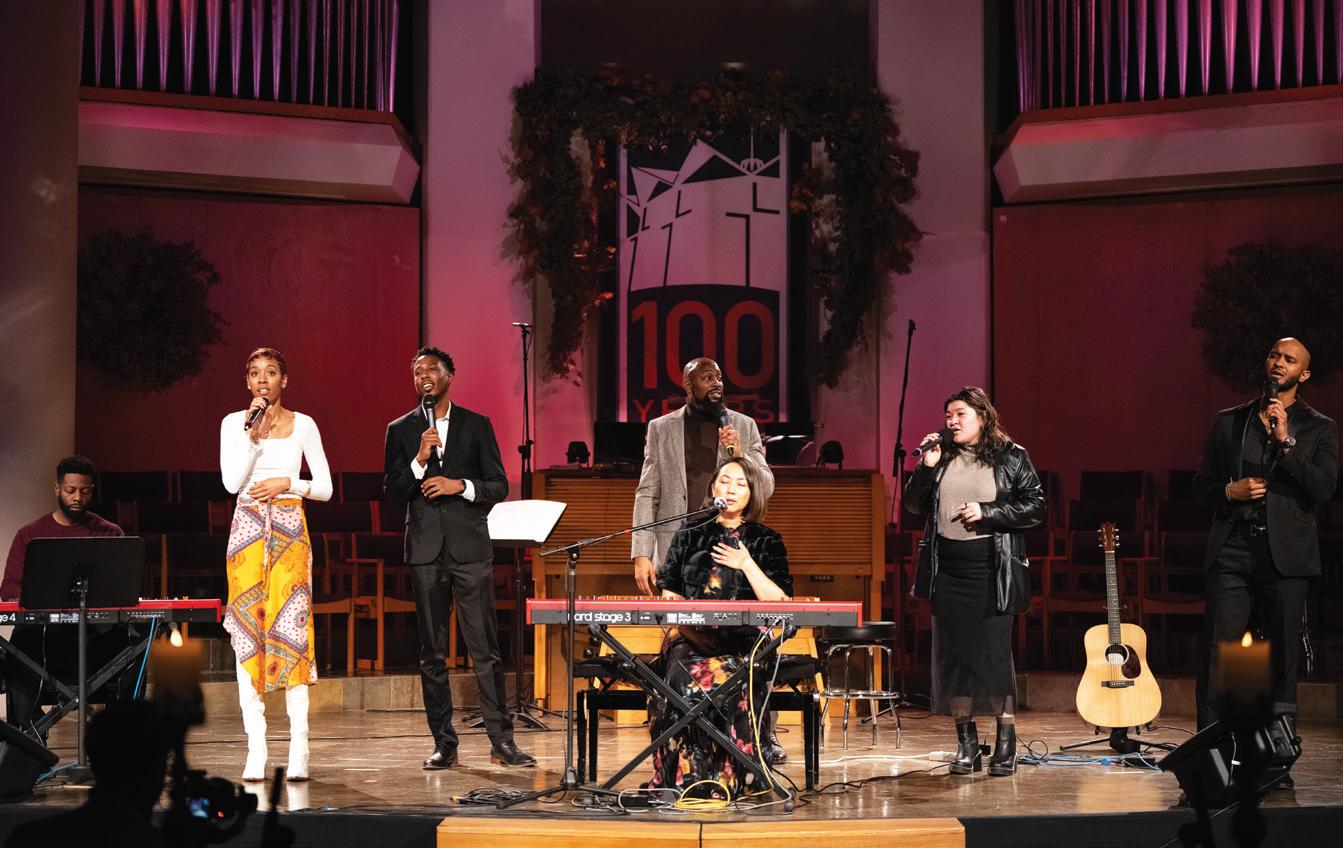
In response to the public interest generated by the film SABBATH, the Festival of SABBATH is a unique outreach that builds new relationships and awareness of the message of the Sabbath. SABBATH is a full-length documentary film produced by Martin Doblmeier and Journey Films that is currently airing on PBS. With more than 30 films to his credit, including three on Seventh-day Adventists, Martin Doblmeier is one of the most well-respected filmmakers in the country. For SABBATH, Doblmeier interviewed a number of scholars and religious leaders of several faith groups on the theme of Sabbath keeping, including a number of well-known Adventists. Released nationwide in May 2023, SABBATH explores an ancient practice that is a pillar of faith for many people, including Adventists.
Pioneered by the Pacific Union Conference, the Festival of SABBATH invites the public and congregations of other faiths to participate in the knowledge of the many benefits of keeping a day of rest, Sabbath. Elder Bradford C. Newton,
president of the Pacific Union Conference, recently expressed his enthusiasm about the project to the Union Executive Committee: “It has given our church a wonderful way to talk about the Sabbath and our own faith—not in an ecumenical way but as an engaging conversation about the benefits and significance of the God-given weekly rest cycle.”
Pilot projects in the development of the Festival of SABBATH have occurred in Takoma Park, Maryland; Orlando, Florida; and Pasco, Washington. In August 2023, the San Bernardino Community Seventh-day Adventist Church—in the Southeastern California Conference—celebrated the inaugural Festival of SABBATH in the Pacific Union Conference with a two-day event held in a large tent on the church grounds. The tent venue was a practical solution to challenges posed by ongoing renovations to the sanctuary, but the tent quickly became a meaningful aspect of the event, fostering an atmosphere of community and spiritual renewal.
A collaboration of the Pacific Union Conference
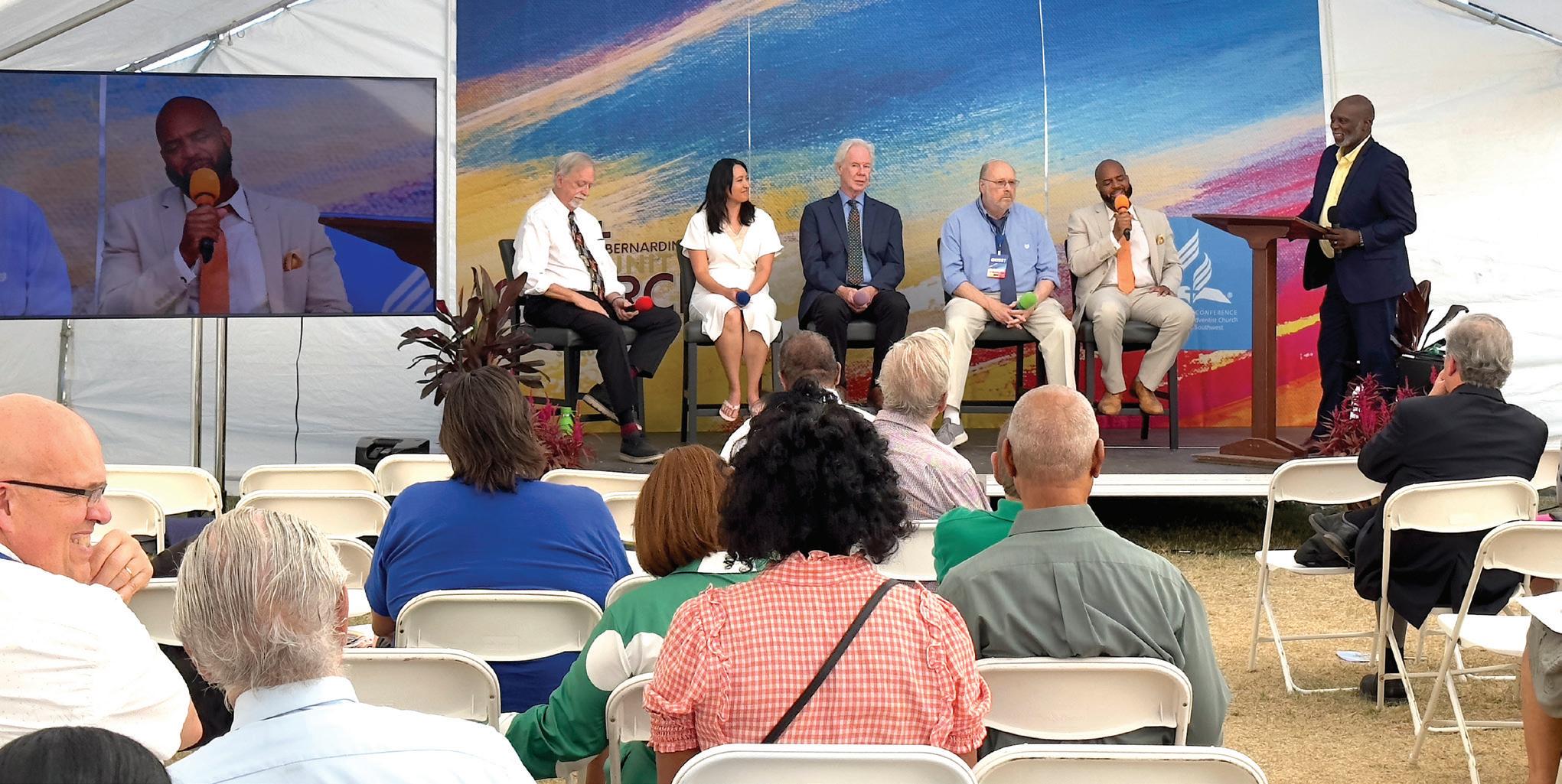
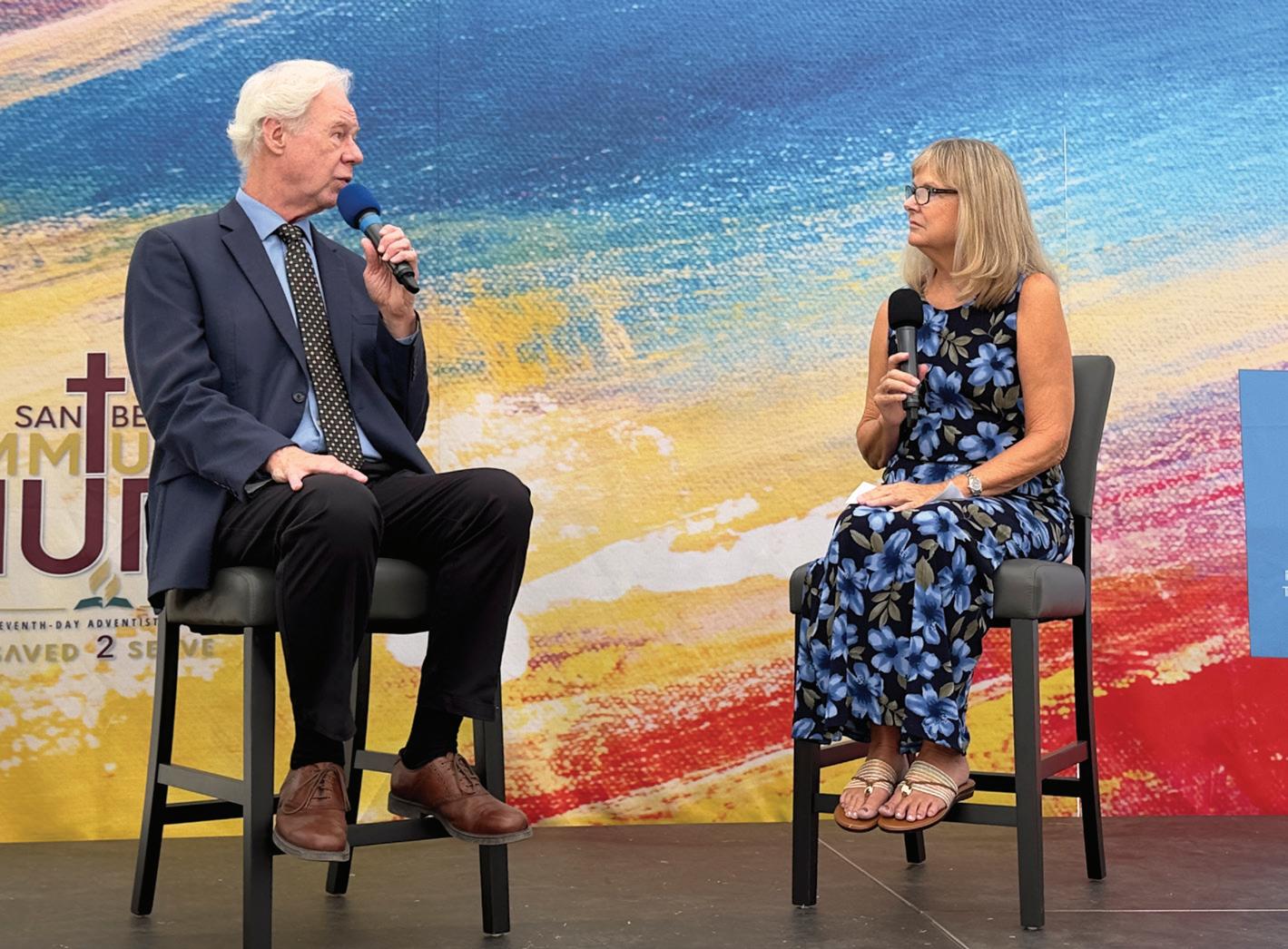
and the Southeastern California Conference, the festival brought together diverse voices to celebrate the Sabbath. Partnering with Journey Films, AdventSource, Andrews University's Center for Community Change, and the Versacare Foundation, the event aimed to rediscover the beauty of Sabbath rest in a modern world.
The highlight of the festival were unique short films drawn from the same sources as the SABBATH film that brought particular focus to themes
that are relevant to local communities, “We hope to show that Sabbath offers not only physical rest but also support for rest for mental and spiritual health,” shared Doblmeier during the event.
“Secondly, our environment is in chaos, driven by profit and convenience. I believe Seventh-day Adventists, through their connection to Sabbath, can become leaders in advocating for environmental care.”
The weekend opened with a ribbon-cutting ceremony for Lighted Garden Ministry, a community garden ministry that is hosted on the grounds of the San Bernardino Community church. “This project has been in development for a long time,” shared ministry organizer Dr. Kimberly C. Izvernari-Im of the Loma Linda Korean church. “We struggled to find a location, but God knew this is where we needed to be.”
In the opening meeting of the festival, Rabbi Arthur Rosenberg, Palliative Continued on page 65
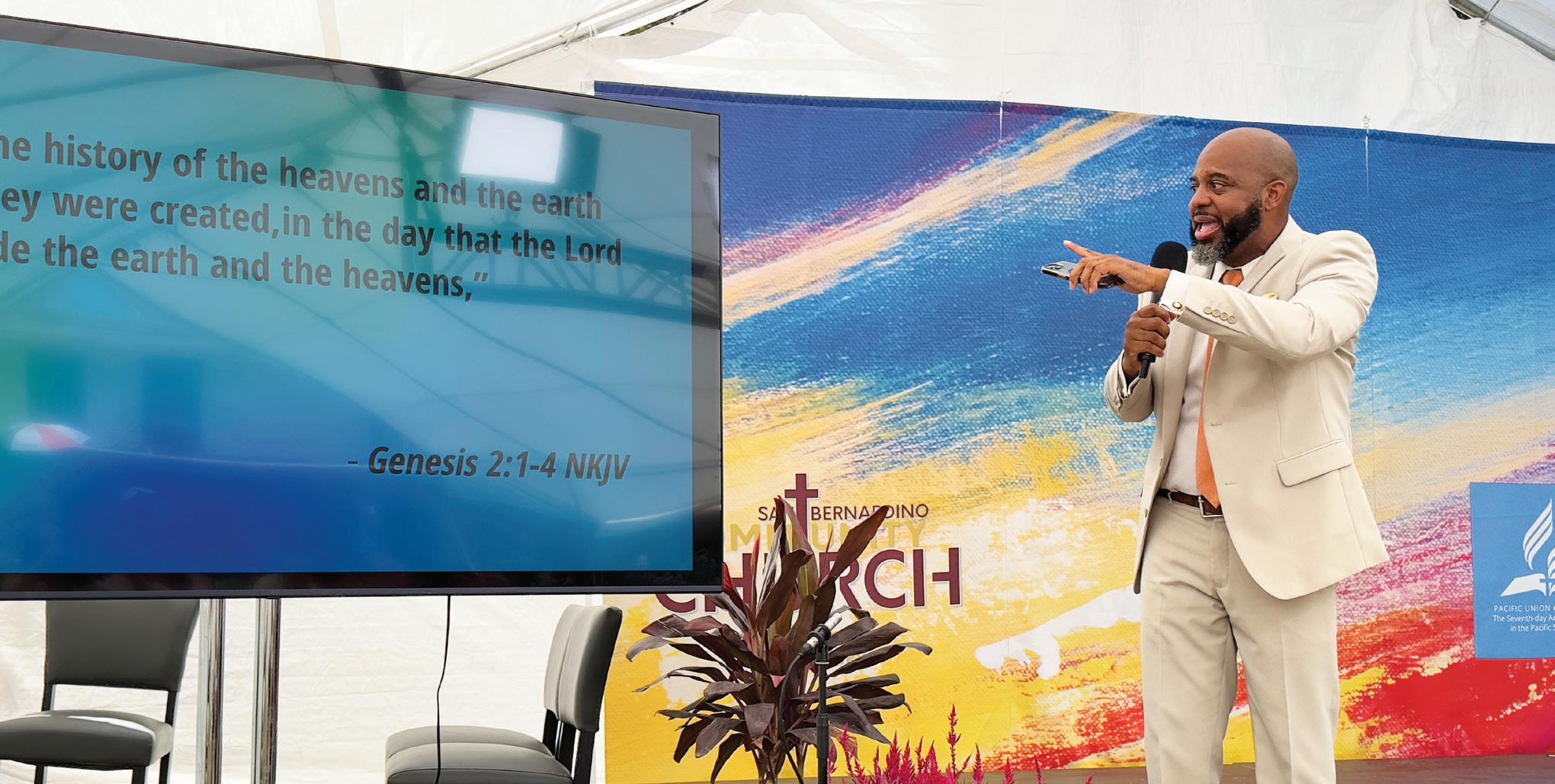
On Sunday, November 3, nearly 1,000 people gathered on the athletic field at Thunderbird Adventist Academy to participate in the annual Arizona Conference Adventurer Fun Day. With 600 registrants and their accompanying family members, the large crowd played games, joined in activities, and shared good food.
A highlight of every year is the club parade. This year, as part of the Olympics theme, each club chose a different country to portray with their “floats” and
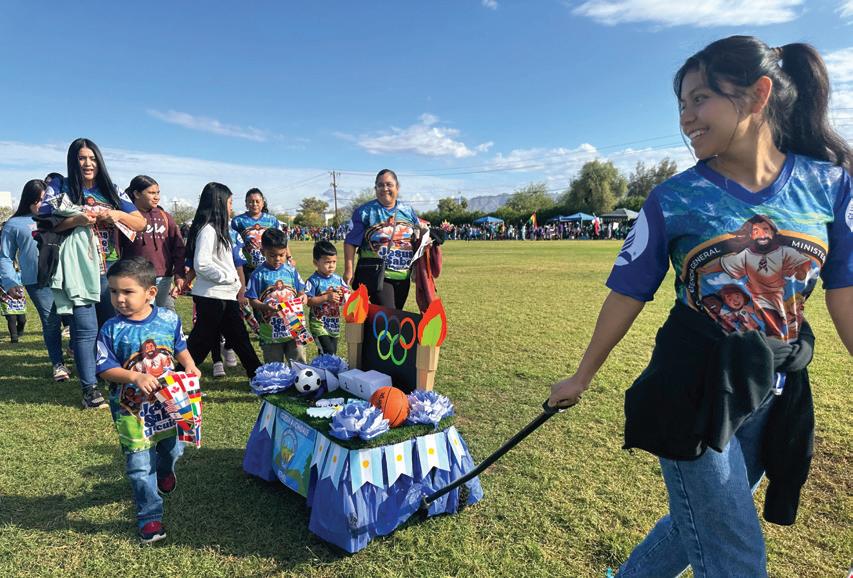
costumes, creating a parade of nations. The day kicked off with an opening ceremony led by Arizona Conference Youth Director Manny Cruz, which included Adventurers reciting the Adventurer Pledge in English and Spanish.
These events would not have been possible without a slew of parent and family volunteers. Each club created an activity, and volunteers manned those events as each club rotated through its station. Adventurer Fun Day provided excitement and reinforced the values of faith, fellowship, and service central to the Adventurer Club program.
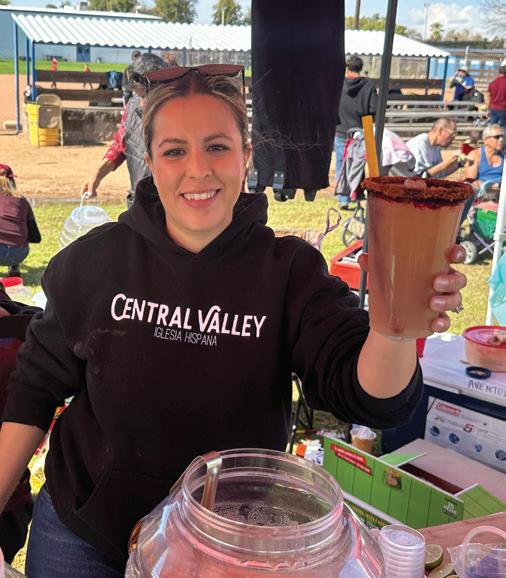
Dreaming Big” was the theme for the 44th Annual Arizona Conference Black Ministries Convocation on November 8 and 9. Dr. Jesse Wilson was the featured speaker. The event brought together members from various congregations in Tucson and Phoenix. Arizona Conference Assistant to the President for Black Ministries Jonathan Smith and his team worked hard to create an event addressing attendees' spiritual, emotional, and practical needs. Friday evening opened with dynamic praise and worship featuring Nancy Smith. The soulful music set the stage for Wilson’s message, inviting the attendees to become dreamers. He identified three attributes of dreamers. “Dreamers
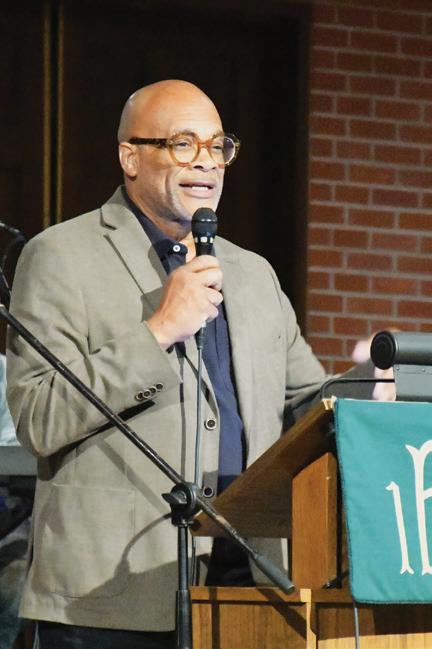
Dr. Jesse Wilson encourages attendees to dream big.
By Jeff Rogers
FAR LEFT: The Avondale Spanish Adventurer Club, with their Argentina-themed float, participates in the parade of nations. LEFT: Food sales are a big part of the Adventurer Fun Day.
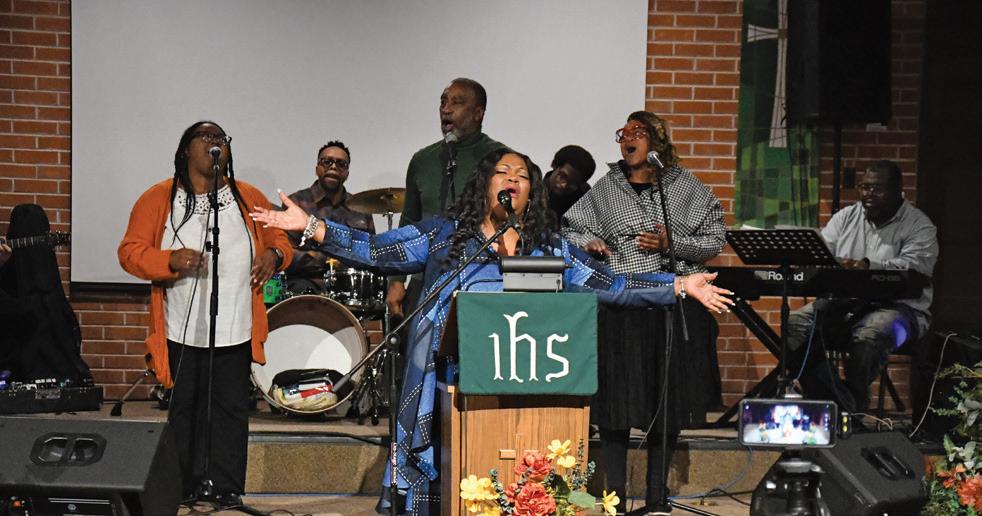
Friday evening program during the Black Ministries Convocation.
have a vision from God,” Wilson said. “Dreamers are committed to God, and dreamers allow their life to be directed by God.”
Impactful messages, heartfelt prayers, and uplifting music blessed the weekend's participants. The event culminated in a delicious fellowship meal catered by Chevol and Raynah Morris. Attendees lingered throughout the afternoon, enjoying the food and fellowship.
By Jeff Rogers
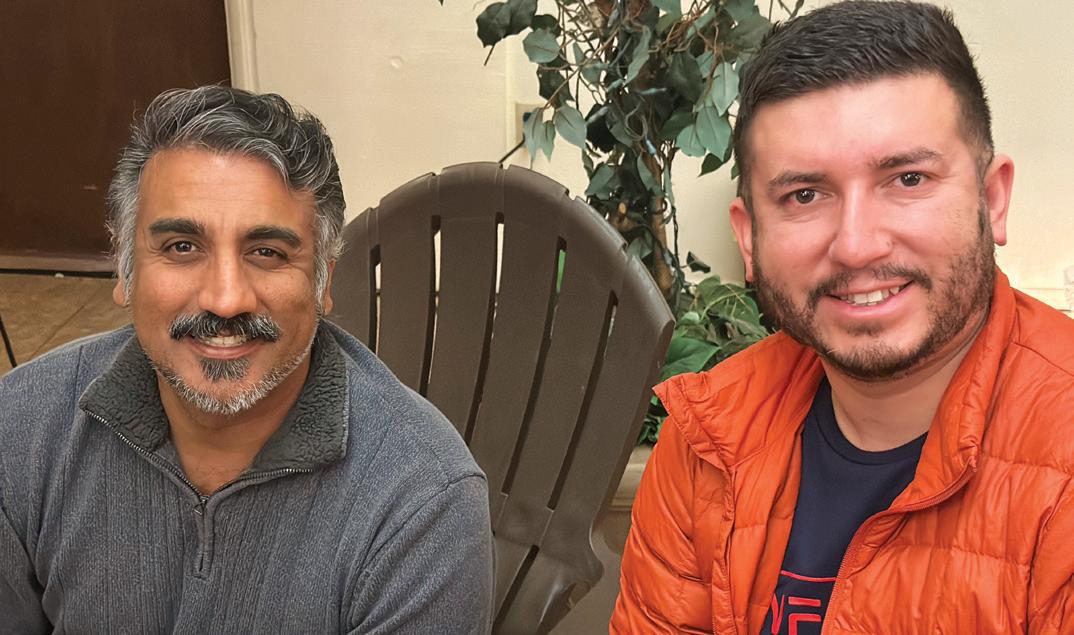
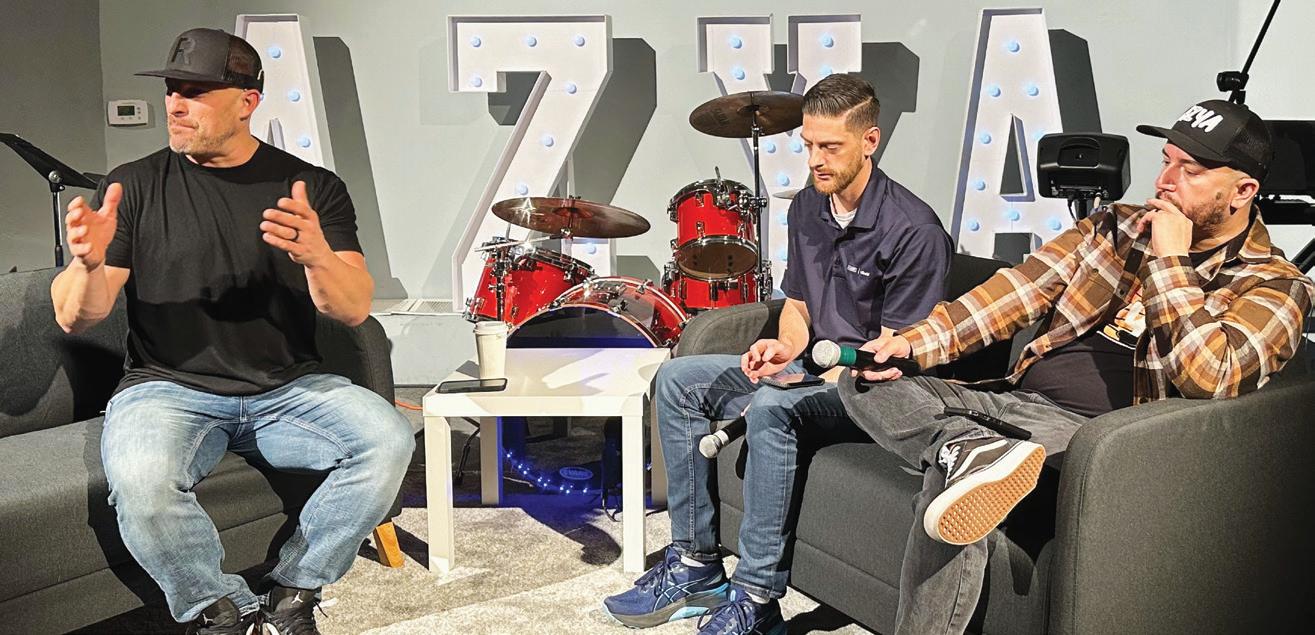
Arizona Young Adult Ministries, known by the acronym AZYA, has spawned a resurgence in young adult activity across Arizona.
November was a particularly busy month, with both a retreat at Camp Yavapines at the beginning and the Pacific Union Young Adult Life Tour making a stop in Phoenix to close out the month.
Approximately 100 young adults from around the Arizona Conference territory gathered at Camp Yavapines for a transformative retreat with the theme “Infusion 2024,” featuring guest speaker Pastor Anil Kanda. The retreat provided participants with opportunities for spiritual growth, meaningful connections, and moments of rest and reflection amidst nature’s beauty. With a focus on 2 Corinthians 5:17, a key emphasis of the weekend was on how to infuse Jesus into lives.
Retreat planners intentionally created spaces for young adults to network and connect. Lili Corrales works as the administrative assistant in the Young Adult Ministries Department at the Arizona Conference and is a young adult herself. She has seen the benefits of these intentional moments. “I am seeing more young adults from the English and Spanish-speaking churches connecting,” she said. “It is not just the English churches and not just the Spanish churches. It is the Brazilian churches, the Fil-Am churches, and the Black churches. We want to get everyone connected.”
The retreat's success underscored the importance of creating spaces where young adults can connect, grow, and recharge. The Young Adult Ministries department, under the leadership of Pastor Mike Soto, immediately geared up for the Young Adult Tour, featuring Pastor Ben Lundquist, which took place at the Camelback church in Phoenix on November 22 and 23. Lundquist’s messages focused on finding your
calling and purpose and on how to be a Christian in an ever-changing world. The Q&A sessions following the presentations featured questions from the more than 100 attendees that reflected the uncertainty of living in today’s world.
“I have seen a few people who have left the church come back,” Corrales commented. “The community has been growing. This is bringing them out of the woodwork, bringing them together.”
For many young adults, the retreat and the Young Adult Life Tour events were more than just a weekend away; they were impactful moments of growth and connection. These intentional events encouraging young adult networking have now provided a platform for organic growth in local churches. As young adults return to their home churches, they are spearheading efforts to increase connection with peers in their own community.
By Jeff Rogers
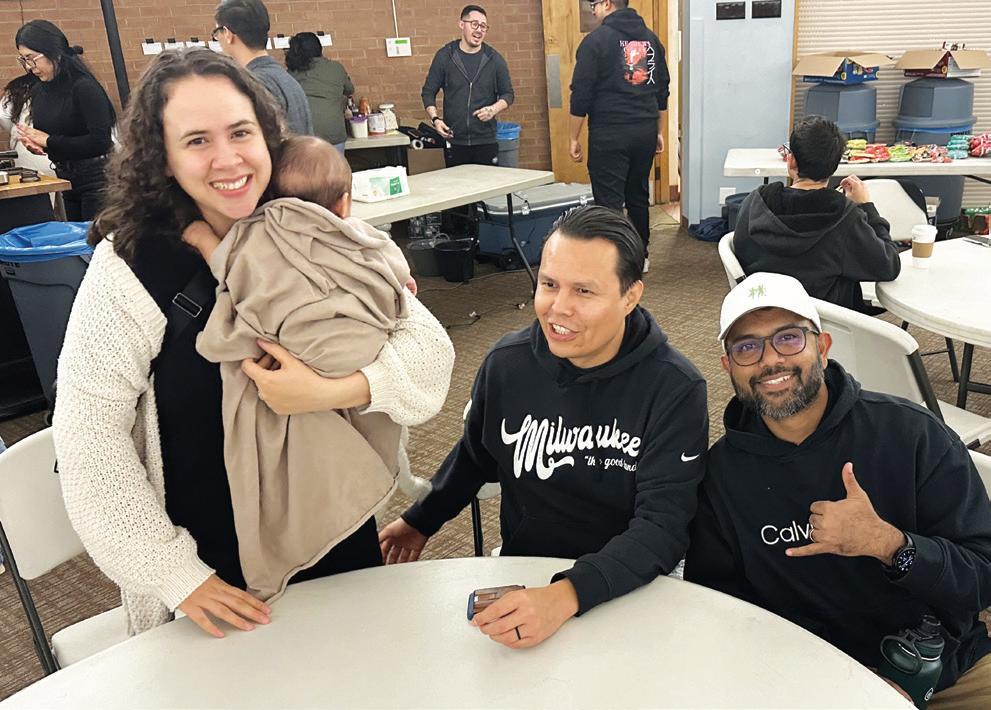
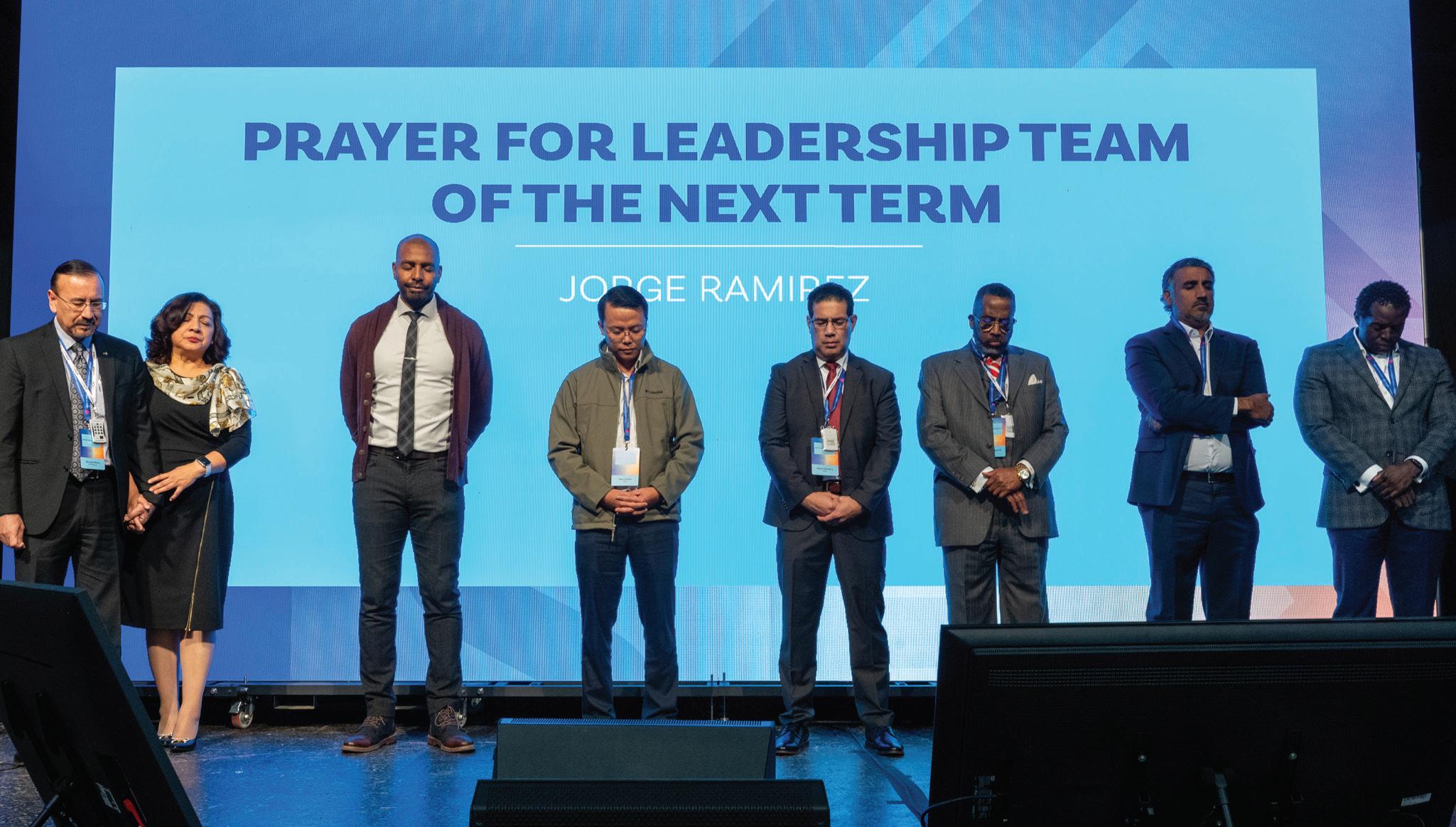
On Sunday, Nov. 24, 2024, Central California Conference (CCC) delegates gathered at Fresno Adventist Academy for the 35th Constituency Session. During this significant meeting, delegates voted to elect a new leadership team and committees tasked with guiding the conference in its mission to share the gospel throughout Central California.
The session began with the sounding of the shofar, inviting attendees into a spirit of prayer and reflection. Sandra Roberts, executive secretary of the Pacific Union Conference, led a heartfelt prayer emphasizing unity among the delegates.
Jorge Ramirez, undersecretary of the North American Division, delivered an inspiring devotional. He shared his personal journey from Catholicism to Adventism, highlighting the transformative persistence of a devoted woman who introduced him to Christ. Ramirez urged attendees to value their own faith journeys and recommit to the church's mission.
Delegates came well-prepared, having reviewed pre-session materials and video reports in advance. During the session, they also received live presentations from the conference’s executive officers and the General Conference Auditing Service (GCAS). Following a question-and-answer session, delegates voted to approve these reports.
The afternoon session reopened with a prayer by Leon Brown, executive vice president of the Pacific Union Conference, asking for the presence of the Holy Spirit and divine guidance in the upcoming decisions.
The organizing and nominating committees then presented their recommendations to the delegates. The nominating committee, chaired by Pacific Union Conference President Bradford Newton and reported by its secretary, Sarai Huerta, proposed a slate of leaders for the upcoming term.
The following individuals were elected to serve:
• President: Ricardo Viloria
• Executive Secretary: David Dean
• Treasurer: Referred to the new Executive Committee
• Vice President for Ministries: Anil Kanda
• Associate Executive Secretary: José Batiste Directors of Ethnic Ministries:
• Asian Pacific Ministries: Toan Quach
• Black Ministries: Alonzo Wagner III
• Hispanic Ministries: Edwin Mendoza
In accordance with the Conference Bylaws, the term for the new leadership team begins 60 days after the session, which is January 23, 2025.
Additionally, delegates appointed members to the Executive Committee and the Bylaws Committee,
ensuring a collaborative and thoughtful approach to shaping the conference’s decisions and direction. Each of these individuals and committee members was prayerfully selected through the collective deliberation and decision of the delegation. Their election reflects a shared vision of unity in Christ and a commitment to advancing the everlasting gospel.
President-elect Viloria expressed gratitude to outgoing president Dan Serns and his wife, Lois, for their dedication to church planting, member mobilization, and soul winning. As Serns transitions to a new role with the North Pacific Union, Viloria pledged to seek God's guidance and foster collaboration in advancing the church's mission.
In his final charge, Serns emphasized the importance of unity amid diversity. He urged the conference to adopt the "Upreach, Inreach, Outreach"
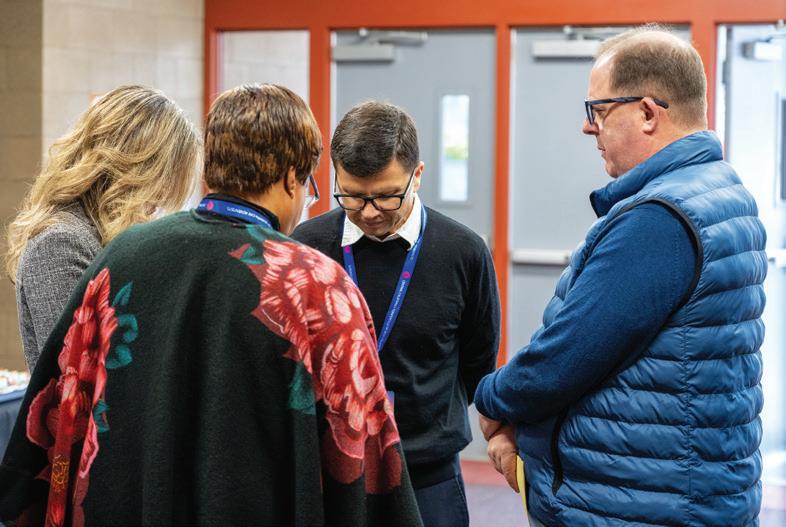
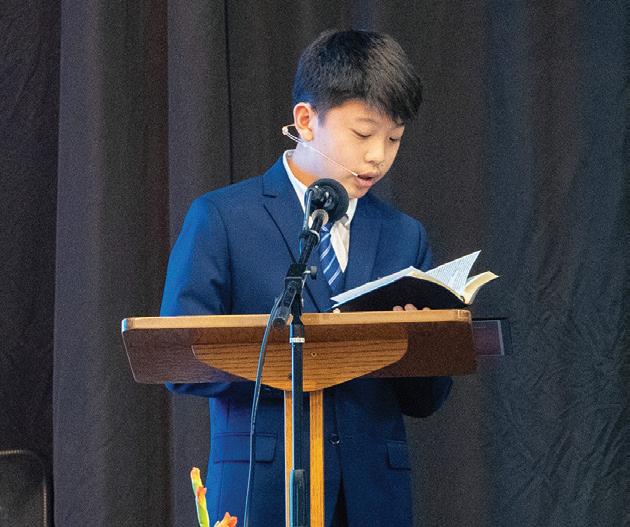
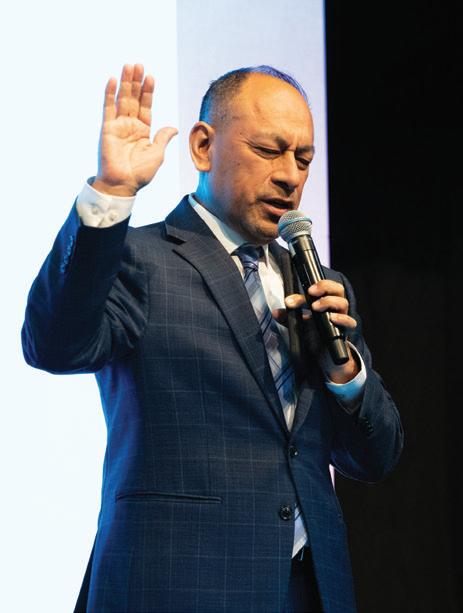
model—deepening personal connections with Christ (Upreach), nurturing unity within the church family (Inreach), and living lives of service and connection with others (Outreach).
Closing and call to prayer
The meeting concluded with a prayer offered by Stephen Mayer, treasurer of the Pacific Union Conference, who invoked God's blessing on the newly elected leaders and the church's ongoing mission.
We invite you to join us in prayer for these leaders and committee members as they step into their roles, serving and guiding the Central California Conference forward in its mission. With faith and unity, the conference looks forward to a future of spiritual growth, effective ministry, and the fulfillment of its gospel mission.
By Justin Kim
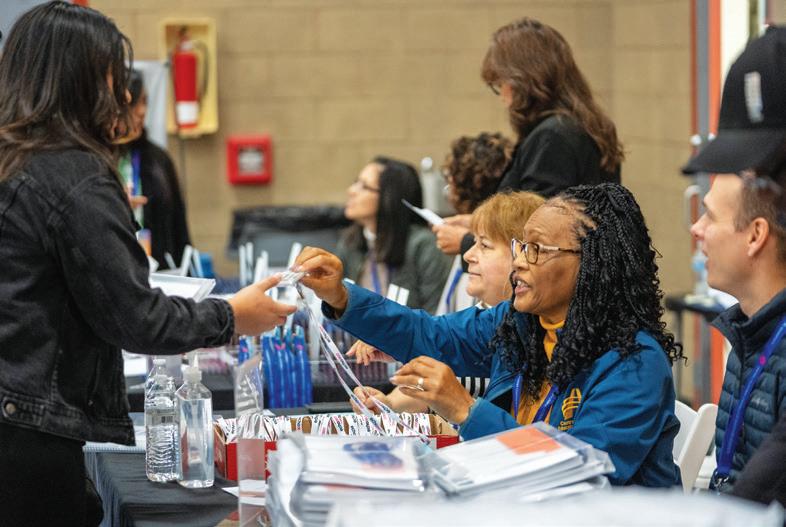
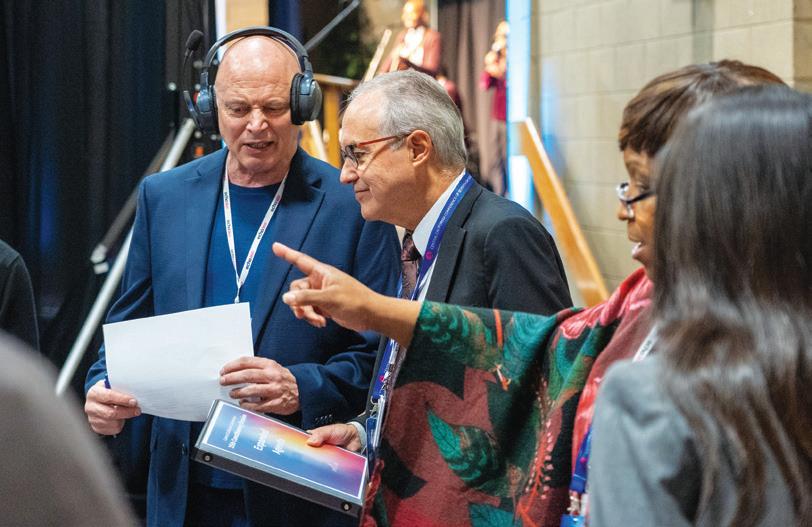
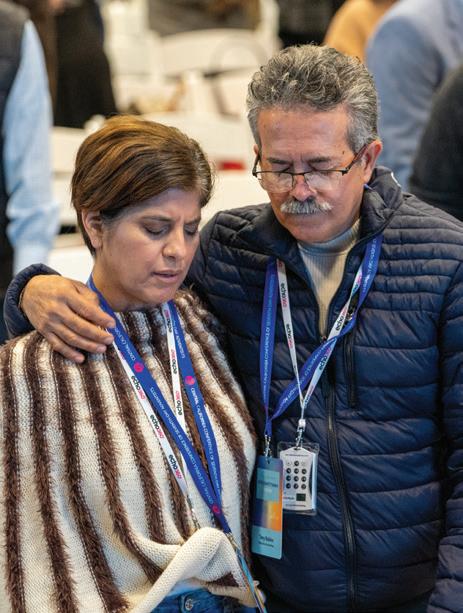
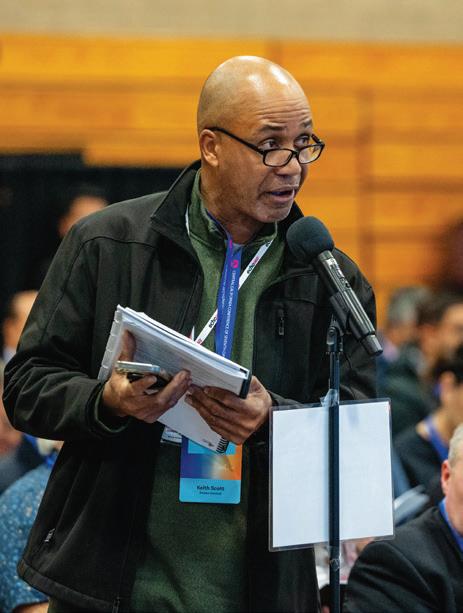
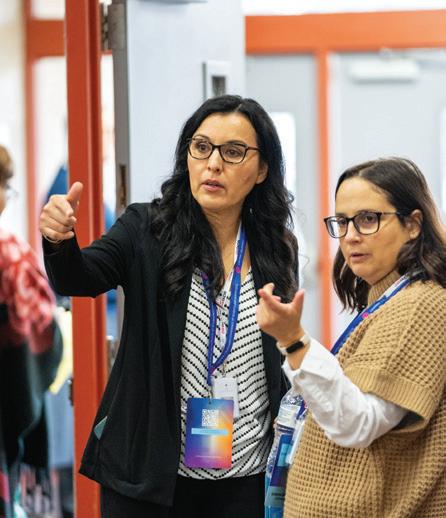
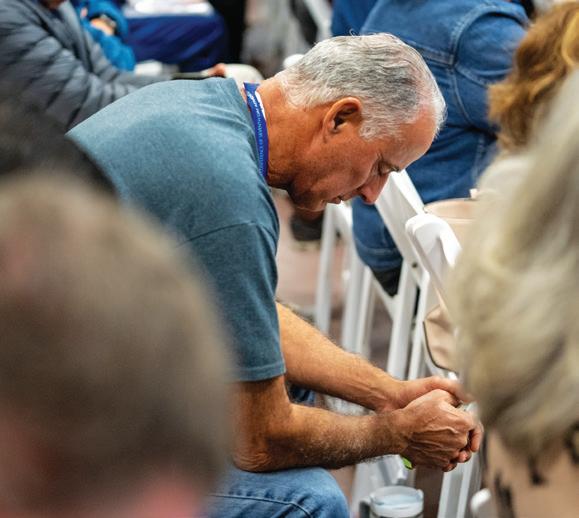
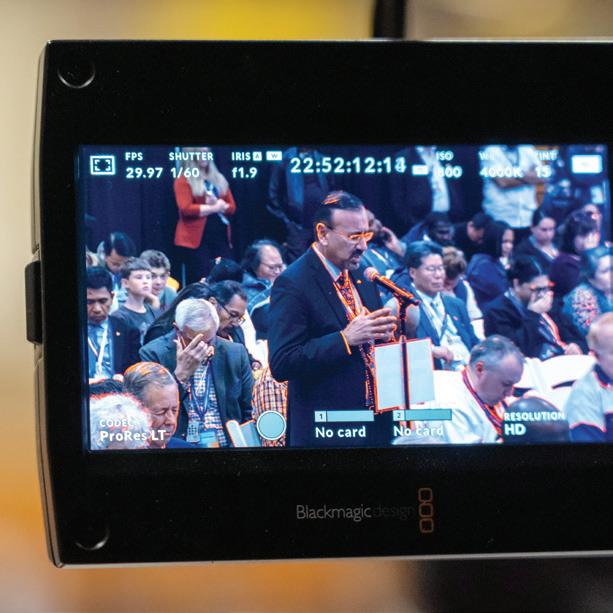
The Central California Conference welcomes Pastor Ricardo Viloria as its new president-elect. In this interview, Pastor Viloria shares his journey of faith, his vision for the future, and his goals to advance the church’s mission.
Let's talk about your journey in the Seventh-day Adventist Church.
I was born into a Catholic family. When I was 10, my parents divorced, which was a difficult time for our family. Amid that crisis, my mother and I were invited to join a small group led by a lay leader from the Seventh-day Adventist Church. We found comfort and inspiration in learning about Jesus and His promise of the Second Coming. As a child, I was deeply impressed by the slides they projected on the wall, illustrating these teachings. My mother, an educator by profession, was so inspired that she began teaching the Bible to others. She started her own small group, and I assisted her as we helped plant new churches. I also joined the Pathfinder Club, where I learned to play the trumpet and became the lead trumpeter for the club band. The Pathfinder director became more than just a guide to me; he was a mentor and spiritual father figure to me, especially during the difficult time following my parents' divorce.
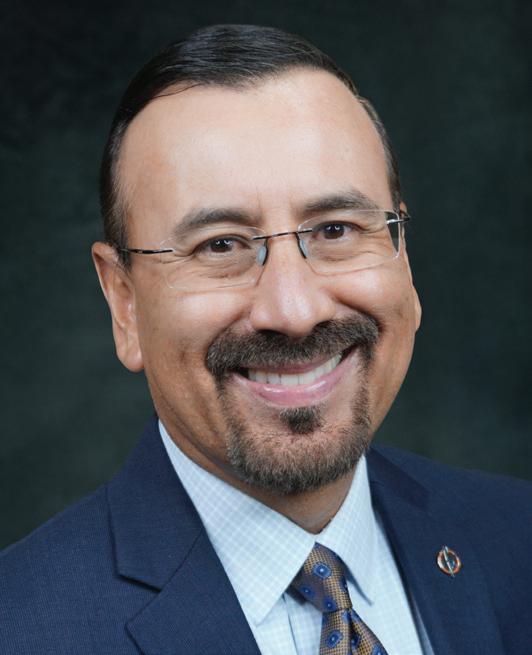
career. However, after much prayer and discussion with my mother, I couldn't shake the feeling that I was being called to pastoral ministry.
I later attended a retreat where the preacher's message resonated deeply with me, strengthening my conviction to pursue theology. I shared my feelings with the conference president, who told me that a scholarship had unexpectedly become available due to the previous recipient being unable to accept it. What normally would have taken at least 30 days—obtaining a passport and visa— miraculously came together in just two days, paving the way for me to enroll in theology school.
The church elders offered to cover my travel expenses. Witnessing God's hand so clearly in these opportunities convinced me to leave everything behind to pursue theology. This journey not only strengthened my belief in the power of prayer but also shaped me into a pastor who profoundly values prayer as the cornerstone of ministry.
What is your vision for the Central California Conference over the next five years?
Jesus has given us the great commission. To advance this mission together, we will focus on three key areas:
One day, I was invited to preach at the church as a Pathfinder. After the service, the elders approached me—not to correct me, as I had feared, but to encourage me to consider studying to become a pastor. At the time, I had a scholarship to attend the best university in the country for a completely different
1. Prayer: We will prioritize prayer, seeking God's guidance in every plan and decision. Through personal experience, I have witnessed that wonderful things happen when we earnestly seek God's will.
2. Collaboration: We need to build consensus and restore open channels of communication between the church and the conference. Listening to our members is not just important—it is essential. I plan to visit our
We will prioritize prayer, seeking God's guidance in every plan and decision. Through personal experience, I have witnessed that wonderful things happen when we earnestly seek God's will.
schools and churches, not only for worship services but to join in fellowship during potlucks and engage in meaningful conversations with church members. This will allow me to listen to their thoughts, answer their questions, and build stronger relationships. By staying present and available to the field, we can address concerns collaboratively and effectively.
3. Action: After praying and collaborating, we must act. Challenges must be addressed proactively and decisively to move the mission forward.
We face different challenges. By focusing on prayer, collaboration, and action, I believe we can overcome these obstacles. Fostering strong relationships will be key to restoring trust and resources, enabling us to support our pastors, churches, and schools.
Do you have a final message for the Central California Conference members?
We are living in the last days of earth's history, and there's an urgent need to complete our mission. I
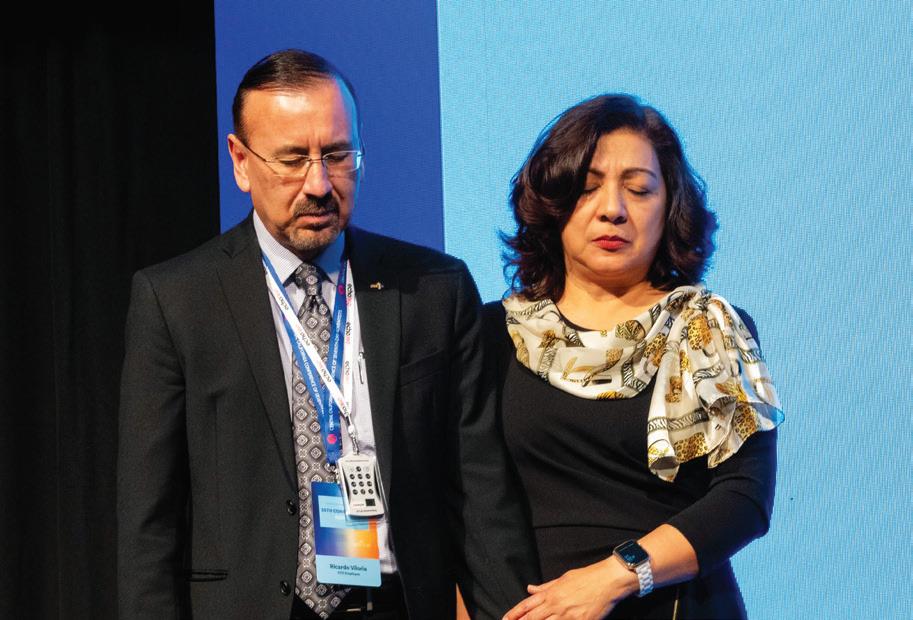
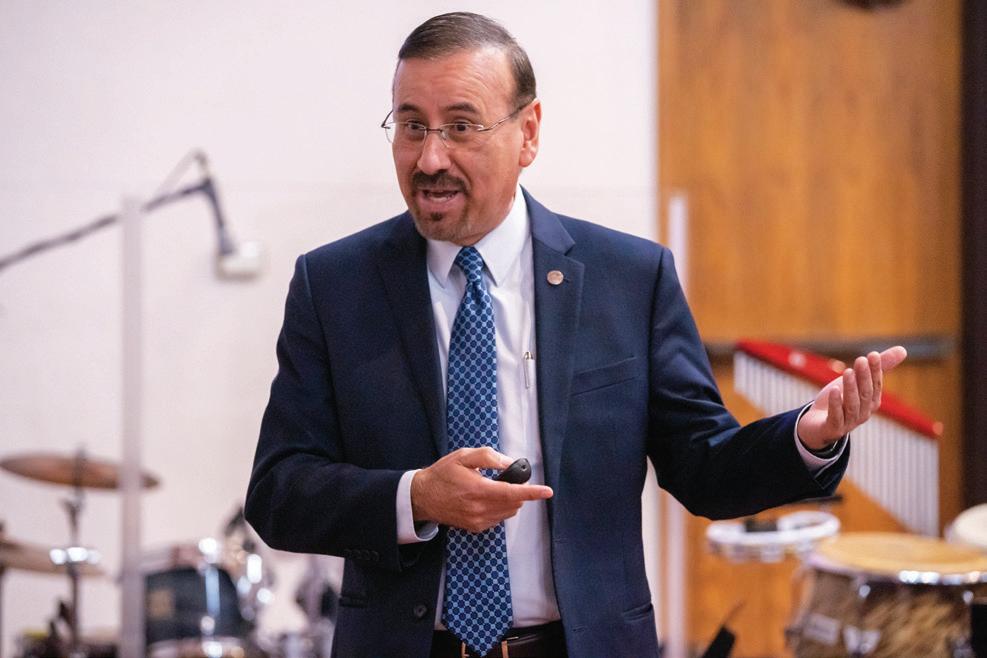
encourage everyone to:
1. Be aware of the times: Recognize that Jesus is coming soon and we must be prepared.
2. Walk closely with the Master: Develop a strong relationship with Jesus through prayer and daily studying of the Bible. True discipleship requires consistent commitment.
3. Focus on the mission: Stay dedicated to fulfilling our mission so we can go home when the work is done.
My wife, Daisy, and I are praying for each of you. We love you and wish you a Happy New Year. May God bless you abundantly in 2025.
By Justin Kim
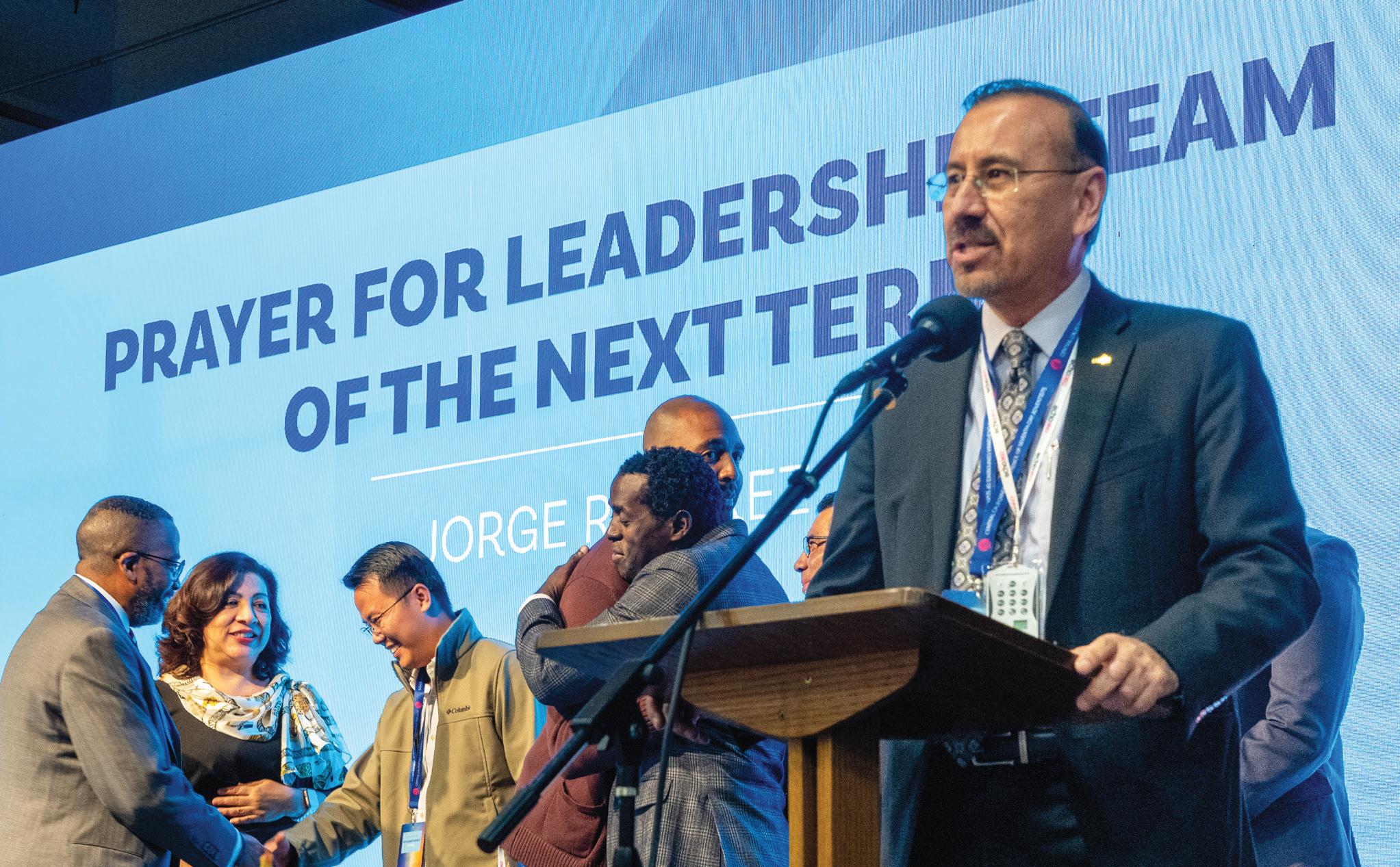
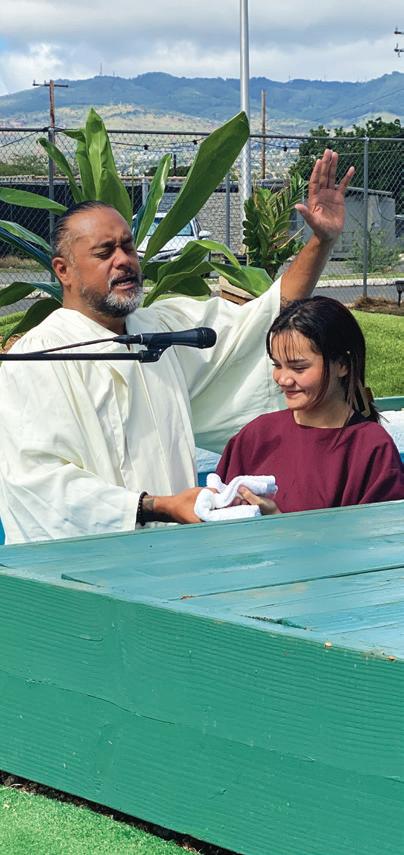

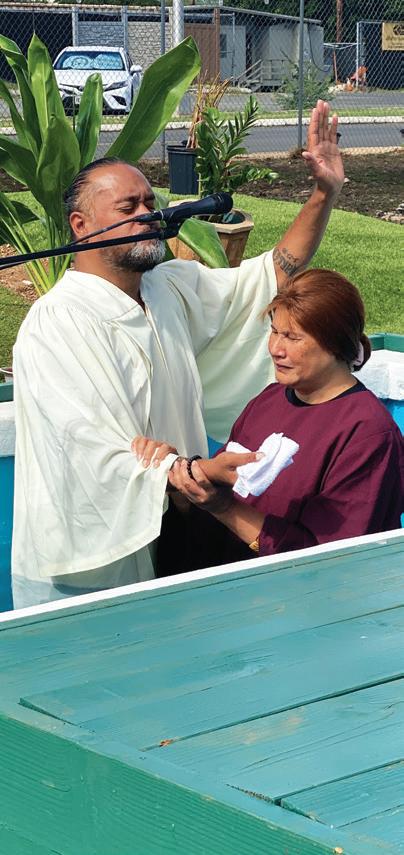
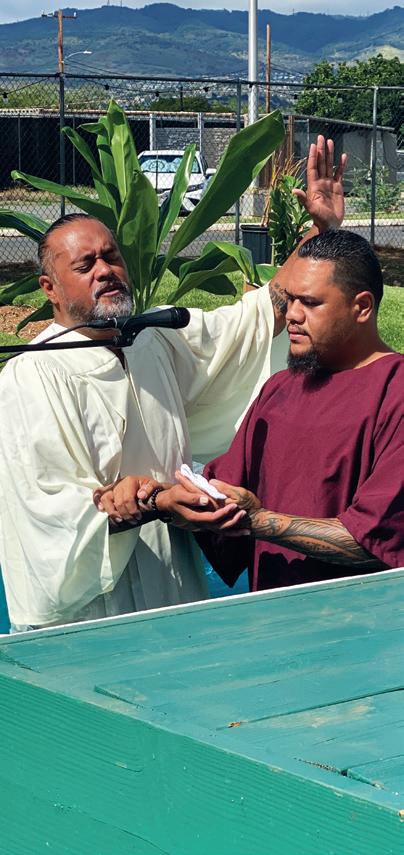
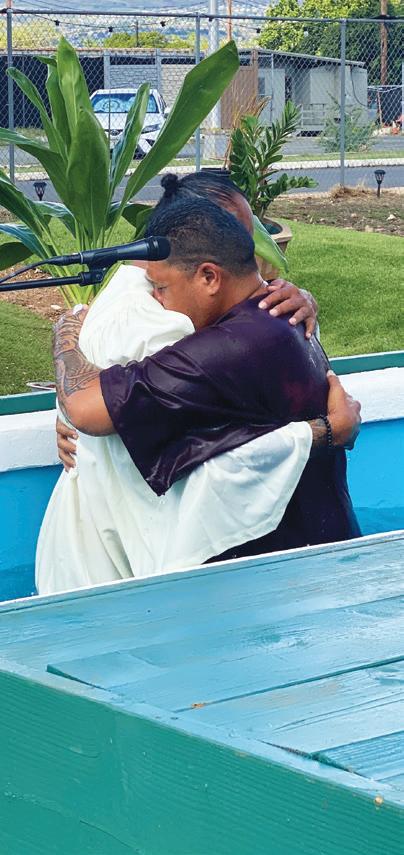
On an island where youth are searching for belonging and purpose, Pastor Meshach Soli’s youth and young adult revival series, The Way Home, emerged as a beacon of hope. Held at the Kapolei Samoa-Tonga church in collaboration with Waianae and Wahiawa churches, this event not only fostered spiritual growth but also strengthened community bonds. The collaboration extended to sister churches across O’ahu, including the Samoa-Tokelau and Honolulu Central churches, culminating in five baptismal candidates taking a profound step of faith. The Way Home left an enduring mark on everyone involved.
The spirit of collaboration One of the defining features of The Way Home was its spirit of collaboration. Differences were set aside to focus on what unites us: a shared faith and mission to save souls. From planning committees to worship teams, every aspect of the revival reflected a collective effort.
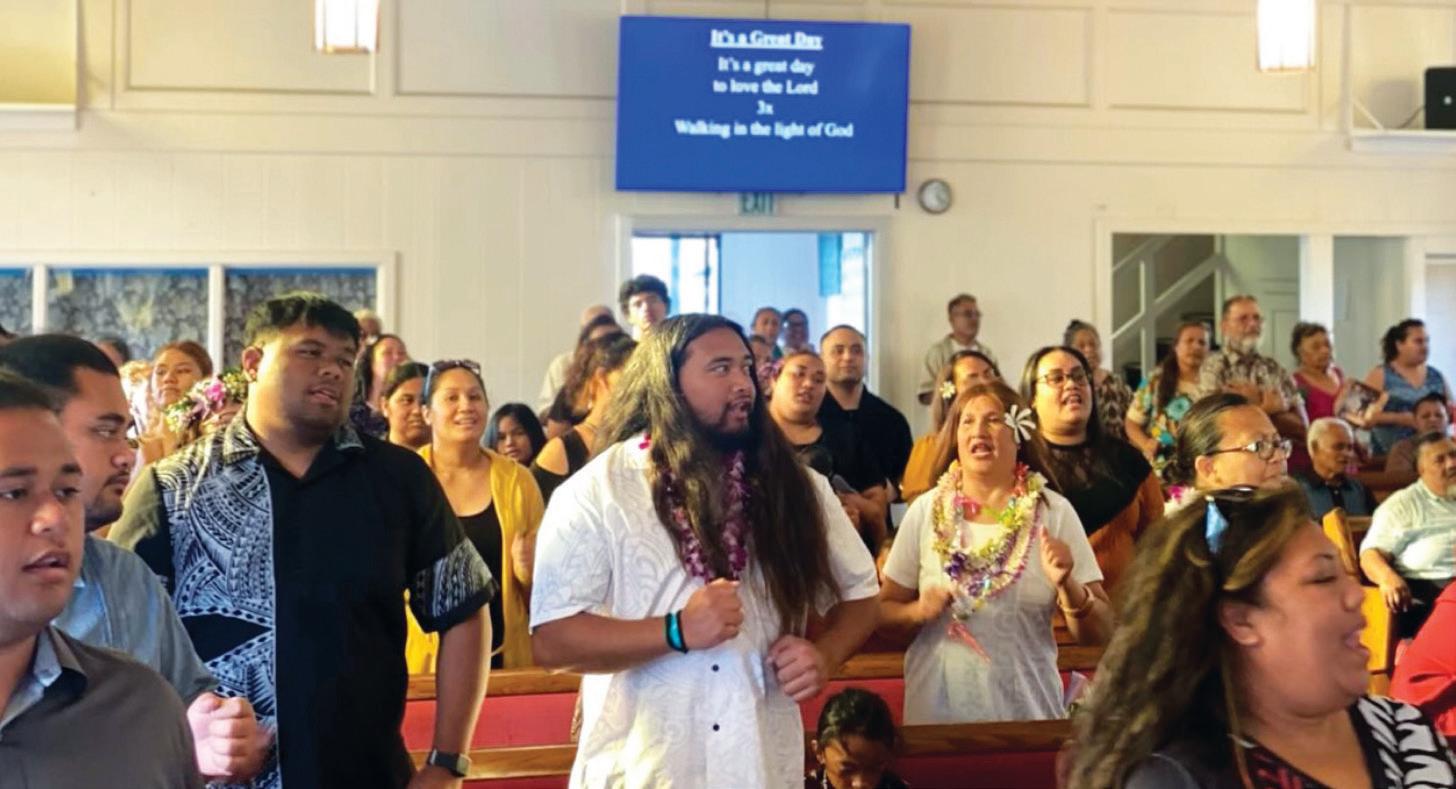
On Tuesday, November 5, Pastor Soli emphasized patience in his message, drawing from his personal experiences. He shared stories of his own struggles and how God’s faithfulness has brought him through, pouring goodness into his life. “When you pray for patience,” he reminded his listeners, “God’s not just going to give you patience—He’s going to place people in your life to test and refine you.” This message resonated deeply with many, reminding us of the transformative power of perseverance in faith. Those who participated saw that God’s presence was evident throughout. His goodness and mercy never failed. Heaven’s gates opened wide, and blessings poured over everyone in attendance.
Welcoming new hearts: The journey of our baptismal candidates
A particularly moving moment of the revival was the baptism of five individuals: Taleni and Judy Peko Asuega, Merina Maleloi, Talya Tatupu, and Journey. Each felt God’s call upon their hearts, recounting how He had worked through their lives and loved ones to bring them to this life-changing decision.
Taleni and his wife, Judy, shared their testimony, recommitting to turn their lives back to serving the Lord. They, along with the other newly baptized members, stood as a testament to the power of restoration, revival, and healing. “God’s timing is always perfect!” they declared, reminding us that every step of faith is beautifully orchestrated by Him.
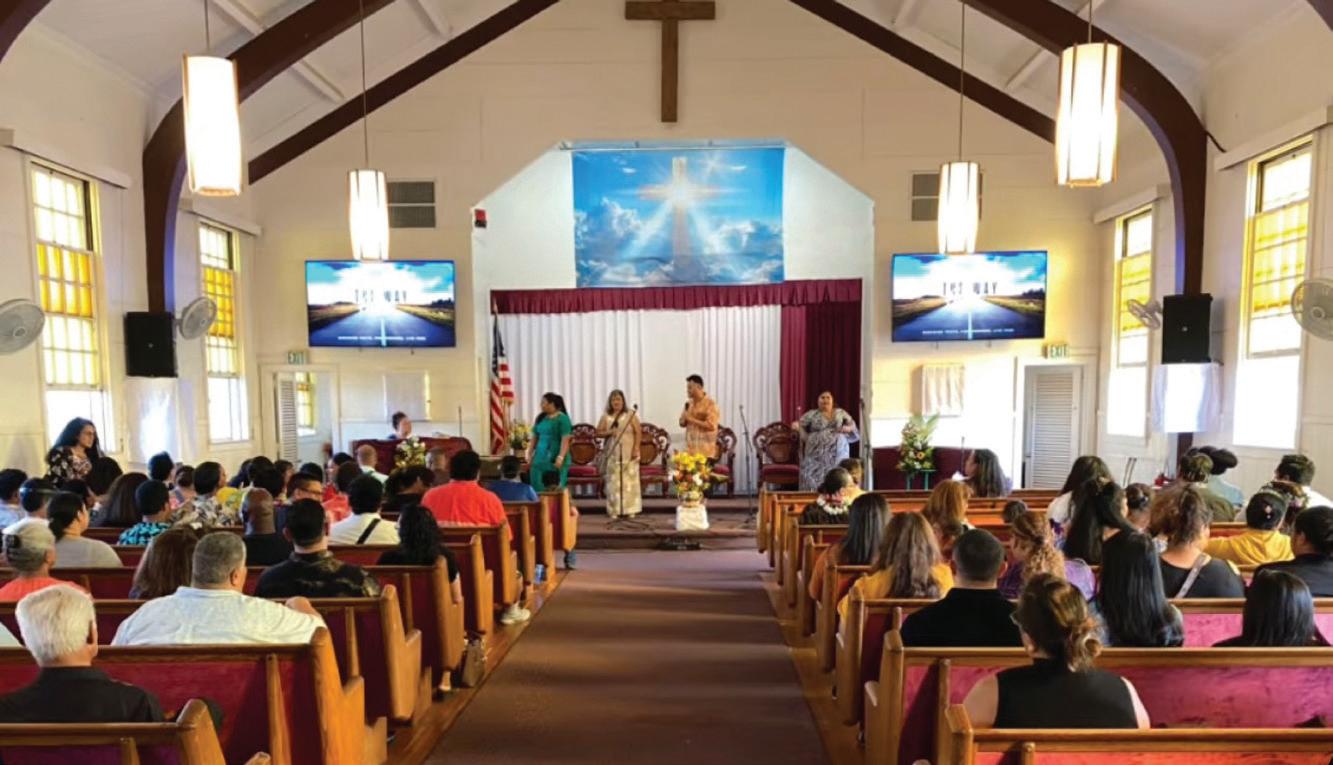
Herald, Samoa-Tokelau youth and young adults, and the Pepa family for joining us in this celebration of faith and music.
home
Voices of faith: A musical celebration of new life in Christ
Another high point of the week was the closing music festival—a celebration of unity and gratitude. Under the guidance of Landen Muasau from Kapolei Samoa-Tonga church, a mass choir of youth, ranging from age five to young adults, brought worship to life. Ellen G. White once wrote, “God is worshiped with song and music in the courts above, and as we express our gratitude we are approximating to the worship of heavenly hosts” (Steps to Christ, p. 104). Throughout the festival, this sentiment felt tangible. The music brought back cherished memories while creating newfound joy for everyone in attendance.
We are especially grateful to the Samoan Gospel
Looking back on this remarkable week, we are filled with hope for more events like The Way Home—events overflowing with laughter, joy, and, most importantly, soul-saving moments. Working alongside Wahiawa and Waianae churches has been a blessing, and we are deeply grateful to Pastors Ron Taylor and Siaosi Tolai for their prayers and support.
A heartfelt thank you goes to Pastor Meshach Soli and his family for answering the call and joining us here. The love and dedication they poured into this revival were truly transformative.
Praise God for His blessings, for uniting us as one family in Christ, and for guiding every step of the way home.
By Amber-Salamasina Ierome Seui
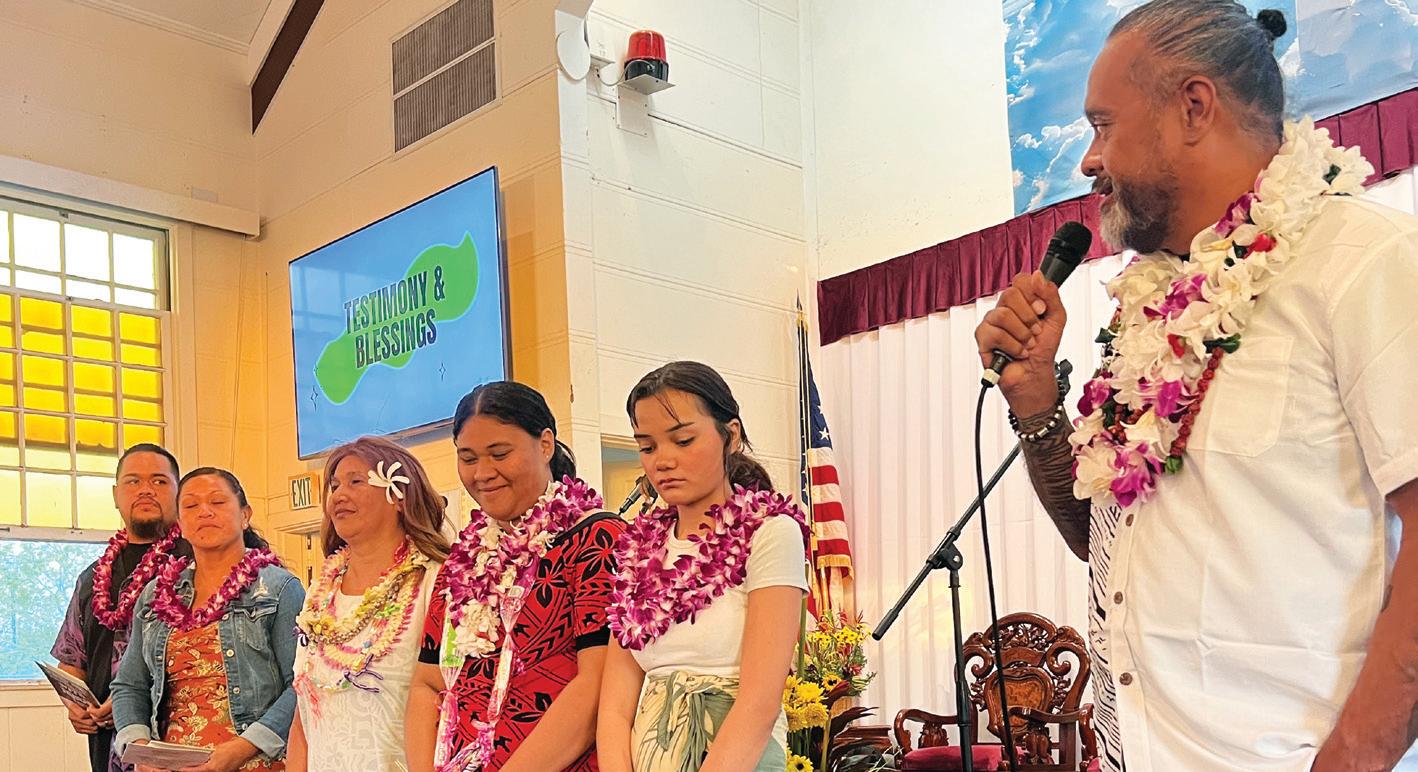
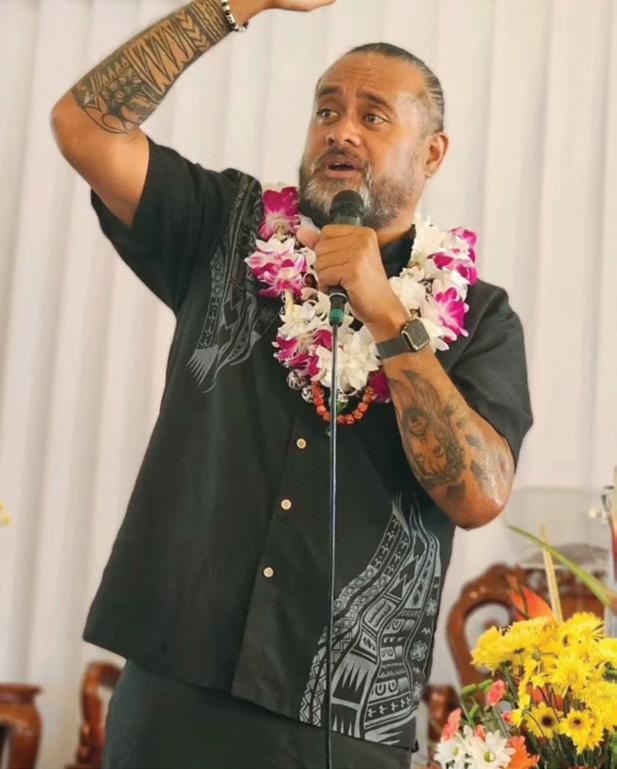
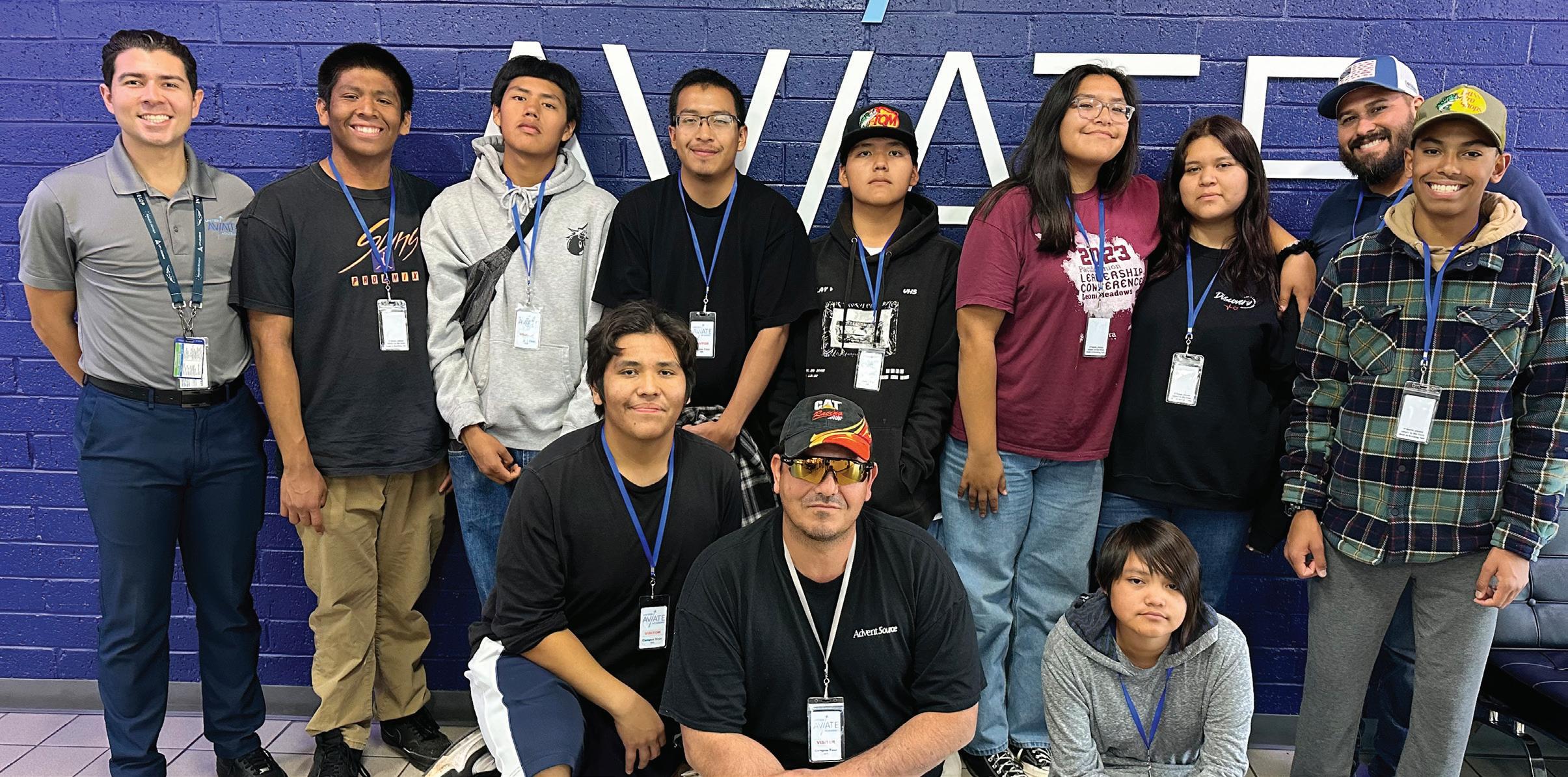

At Holbrook Indian School (HIS), we assist our students, specifically our juniors and seniors, in learning about the resources and opportunities available to them after they graduate and leave HIS. Due to the fact that a majority of our students are first-generation graduates, the idea of leaving HIS can be very intimidating. This is why we created the College and Trade Prep Program (CTPP).
CTPP involves campus visits to various colleges and universities in the area as well as inviting Adventist colleges from out of state to visit HIS and talk about their school and reasons why it would be good for our students to attend. Our students have appreciated

learning about the resources each school has to offer and receiving assistance in learning how to fill out applications and become familiar with campus life.
This year, our MAPS coordinator, Ulysses Campos, is making efforts to highlight the trades. In November, Mr. Campos, along with nine juniors and seniors, participated in the AZ Construction Career Days, located at the Papago Park Military Reservation in Phoenix, and visited the United Aviate Academy in Goodyear, AZ.
At the Construction Fair, our students had the opportunity to meet and talk with various tradesmen and women and engaged with a myriad of trade booths. From contractors and framing to heavy machinery, painters, electricians, pipe fitters, HVAC,

underwater welding (performed by apprentice welders), virtual simulation of a car assembly line, Army National Guard Bomb Squad, and carpentry— our juniors and seniors experienced a hands-on taste of what it would be like to work in each field. This is a great opportunity, because not everyone is made for the traditional college classroom.
The group also visited the United Aviate Academy (UAA), which is the flight school belonging to United Airlines. CEO Michael Hales, a retired military helicopter pilot, went above and beyond to invite our students to visit UAA. Upon arrival, our students and chaperones were treated like VIPs. The room was decorated for a party, and there were certified UAA personnel present who welcomed our group warmly and shared their stories as to why they chose to attend UAA. A couple of the female pilots had originally worked as flight attendants, but they decided that they would rather fly the plane.
Our students had the experience of a lifetime. After receiving safety instructions, each one had the opportunity to go up in a Cirrus aircraft, which is considered a high performance plane. With the help of an instructor, they were allowed to perform takeoff and landing, fly the plane, talk with ground control, and experience a G-force turn. All nine students participated in this once-in-alifetime chance. Afterward, they went through the routine post-flight debrief that all pilots go through while earning their wings.
Another great opportunity available through UAA is aircraft mechanic work. Upon talking with one young mechanic, aged 22, it was discovered that he earns upwards of $75,000 per year without overtime. With overtime, he could earn up to $125,000 per year. Pilots, specifically captains, can earn up to $6,000 per flight.
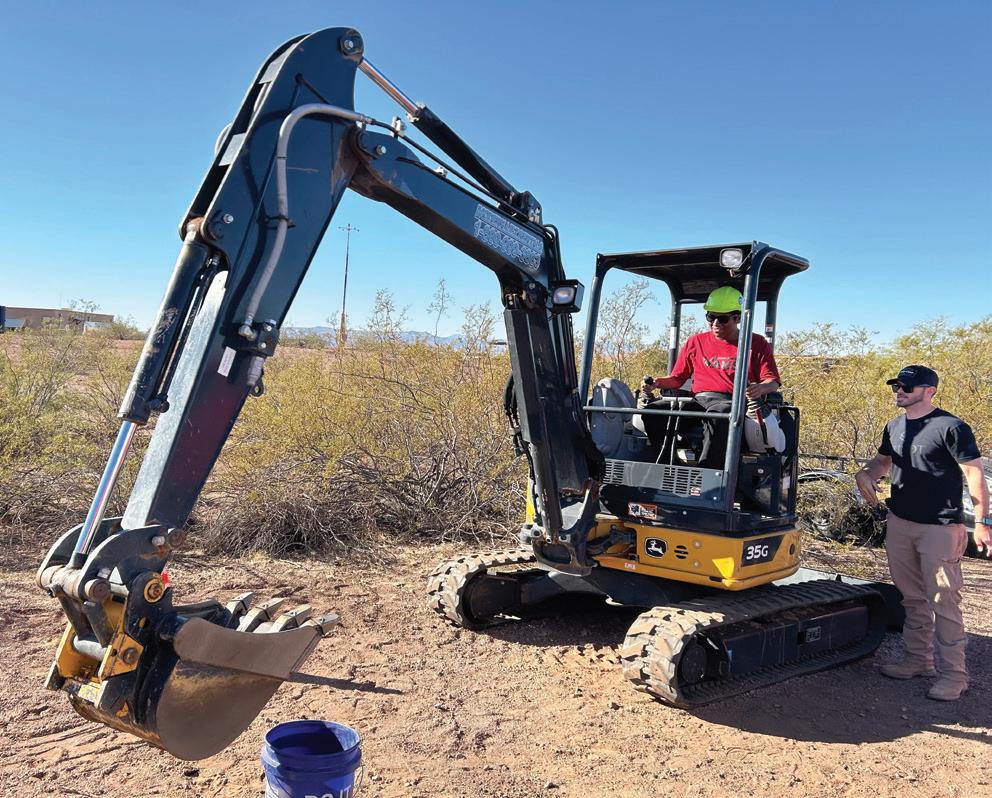
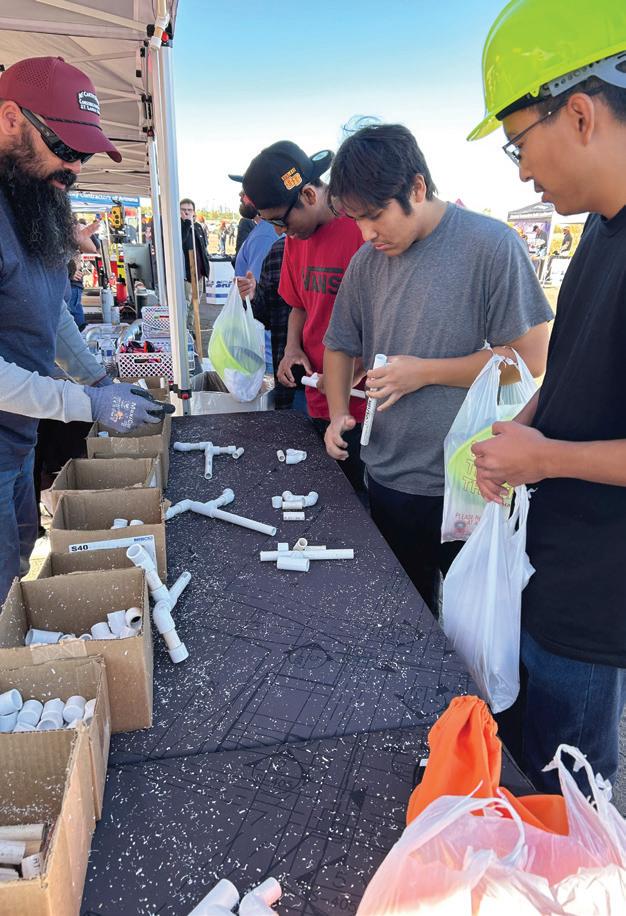
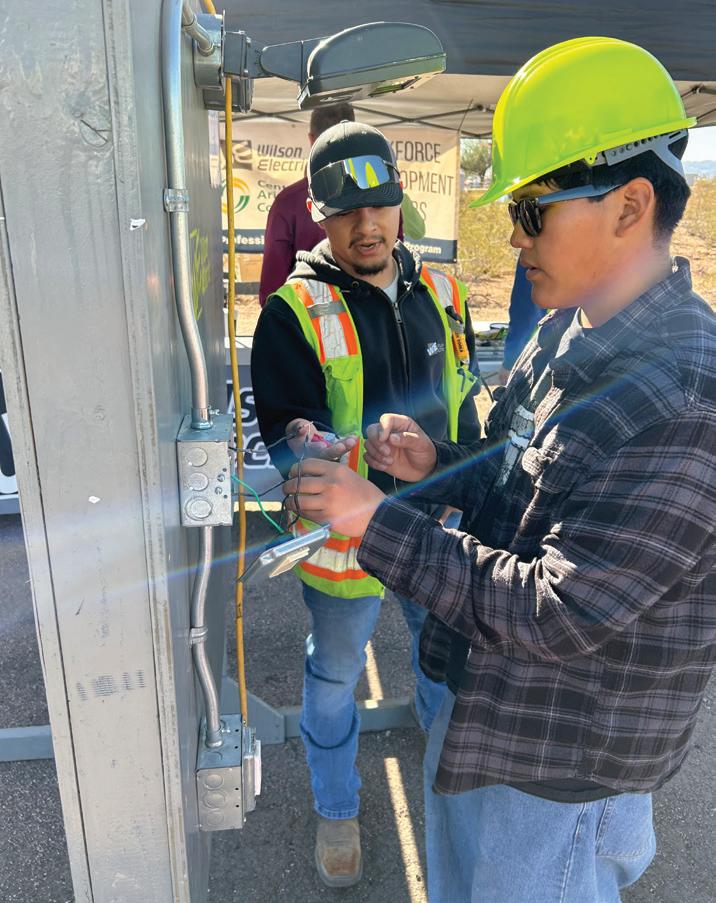
“Let no one despise your youth, but be an example to the believers in word, in conduct, in love, in spirit, in faith, in purity” (1 Timothy 4:12, NKJV). With the right opportunities and proper support, our young people can go far beyond where their limited resources might take them. And it is because of our generous friends of HIS that we are able to provide these once-in-a-lifetime opportunities to youth who would otherwise never come close to these unforgettable experiences. God has a purpose for each one of our students, and He will use them to finish the work He started. We are grateful to be part of their journey.
By Kimberly Cruz
Holbrook Indian School (HIS) is a first- through twelfth-grade boarding academy operated by the Pacific Union Conference of the Seventh-day Adventist Church. HIS also manages a firstthrough eighth-grade day school on the Navajo reservation in Chinle, Arizona. Eighty-seven percent of funding comes from individuals who have a desire to support Native American ministries and Christian education. Your generosity makes a difference in the lives of our students, their families, and the communities they serve. Thank you for your support.
P.O. Box 910 • Holbrook, Arizona 86025-0910 (928) 524-6845 (Ext. 109) • Development@hissda.org HolbrookIndianSchool.org
Ready to make a change for 2025? Here’s a secret: Ambivalence is a normal part of the change process.
Ambivalence is the “state of having mixed feelings or contradictory ideas about something.”1 When we struggle with a behavior, we may want to change; we may think about changing; we may promise to change. Then we find ourselves in the same behavior at the end of the day.
Change is not a linear process. It is often a messy, zigzagging ordeal. However, there are distinct stages, behaviors, and activities that mark change, such as:
Precontemplation: We have no idea we have a problem. Our behavior has not caused us to consider the need for change.
Contemplation: We are beginning to think a behavior might be problematic. People in our lives mention the behavior to us, but we are not ready to do anything about it.
Preparation: We conduct research to see what resources are available, and we explore budgeting options.
Action: In the case of the gym, for example, we’re signed up and going. Maybe we’ve even researched personal trainers.
Maintenance: We finally hit our stride and the new behavior feels like second nature. This is when new habits become integrated into our being.
It takes at least three weeks to create a new habit, but it takes much longer for new patterns to become ingrained. We are constantly wiring our brains with the thoughts we think, the music we listen to, the route we drive to work, the news we watch. When we create positive change, we re-wire our brains.
This process is like walking on a path in nature. Bad habits are a path we’ve taken for so long we don’t even think about it. The habit has become an automatic process, and we find ourselves in the same spot, with the same reaction or the same behavior, over and over. We wonder how we got here again.
Creating healthy behaviors means forging a new path. At first, we have to break branches and hack away debris as we trudge along. As time goes by, the new path becomes more open. It begins to feel familiar and more comfortable. The sun breaks through, and after a while the new behavior becomes automatic as well.
Occasionally we are reminded of the previous path as we pass opportunities to slide back into old behavior, but that old path no longer feels comfortable. It has become overgrown from lack of use. The new path is now second nature. We have learned to achieve and maintain long-term positive growth.
If you fall off the New Year’s resolution path, don’t worry. Ambivalence is a normal part of the process. Recommit to starting over. Tell yourself: The opposite of success is not failure; failure is a steppingstone that leads us to achieving our goals. Where there is no failure, it means we’ve simply quit trying.
By Hailey Blair 1Oxford Languages dictionary on Google.

Through the insights of archaeologists and scholars from around the United States and Jordan, La Sierra University’s 16th Annual Archaeology Discovery Weekend delved deep into the stories of Jordan’s famed cultural heritage site, Petra.
Organized by La Sierra’s Center for Near Eastern Archaeology (CNEA), the event held in midNovember included a Kids’ Dig that let children get their hands dirty while learning the core principles of archaeological excavation. A slate of family activities in CNEA’s archaeology lab offered pottery reconstruction and a Petra photo op with a green screen, among other things.
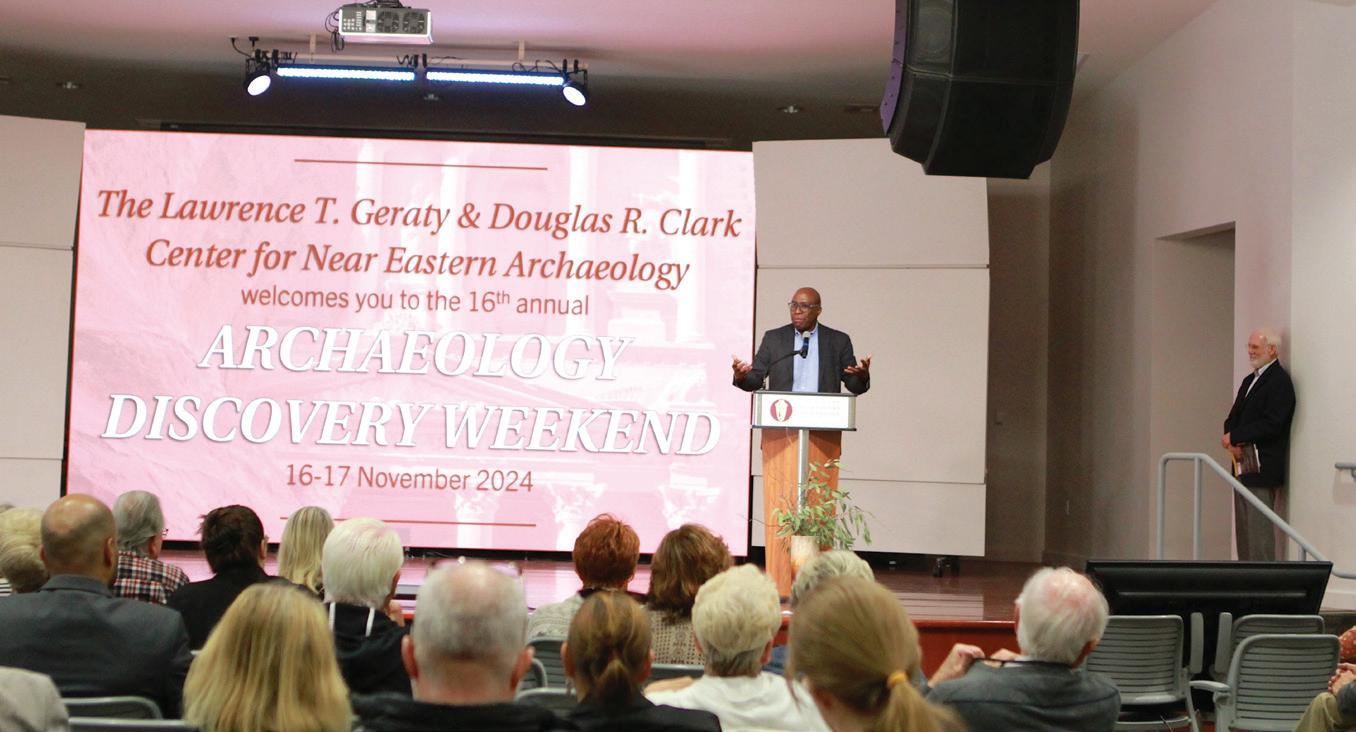
In-person and online attendees of centerpiece multi-media lectures at the Zapara School of Business’s Troesh Conference Center were transported back in time more than 3,000 years to survey the society of the ancient Nabataeans.
Six of archaeology’s foremost scholars opened windows into the ancient and mesmerizing world of Petra, which is an UNESCO World Heritage Site in southern Jordan and one of the New Seven Wonders of the World. Carved into pink sandstone cliffs and engineered with water channeling systems, this magnificent realm was once the kingdom of the Nabataeans who settled the area around 300 B.C. It is now a popular tourist destination and a backdrop for Hollywood movies.
La Sierra University President Christon Arthur opened the weekend’s events, noting, “At La Sierra we embrace the enduring questions such as ‘Who am I? What is my place in the world? How am I connected to other civilizations?’ Sometimes we emphasize our diversity, which is important, but I hope we pause long enough to emphasize our common human ancestry, our common human history,” he said.
The lecture lineup began with a video presentation
created for Archaeology Discovery Weekend by Dr. Fadi Bala’awi, director general of the Jordan Department of Antiquities and secretary general of the Jordan Ministry of Tourism. He provided insights into the country’s efforts in historic preservation and its vital links to cultural tourism.
Presentations included insights from Dr. Leigh-Ann Bedal, an associate professor at Penn State Erie, into the Nabataean’s development of a pool and garden complex near Petra’s Great Temple, as well as from La Sierra University archaeologist Dr. Kent Bramlett into the historical context surrounding the Nabataean’s golden age and the impact of Alexander III of Macedon, known later as Alexander the Great.
During a Saturday evening reception, President Arthur and CNEA Director Doug Clark received gifts of framed mosaic artworks from Mohammad Khlaif Albreizat, finance committee chair of the Madaba Governorate Council, Madaba, Jordan. The community is home to some of the world’s most ancient and beautiful mosaic creations. Clark is leading an international team that over the past seven years has initiated the development of the Madaba Regional Archaeological Museum for the Governorate of Madaba.
By Darla Martin Tucker
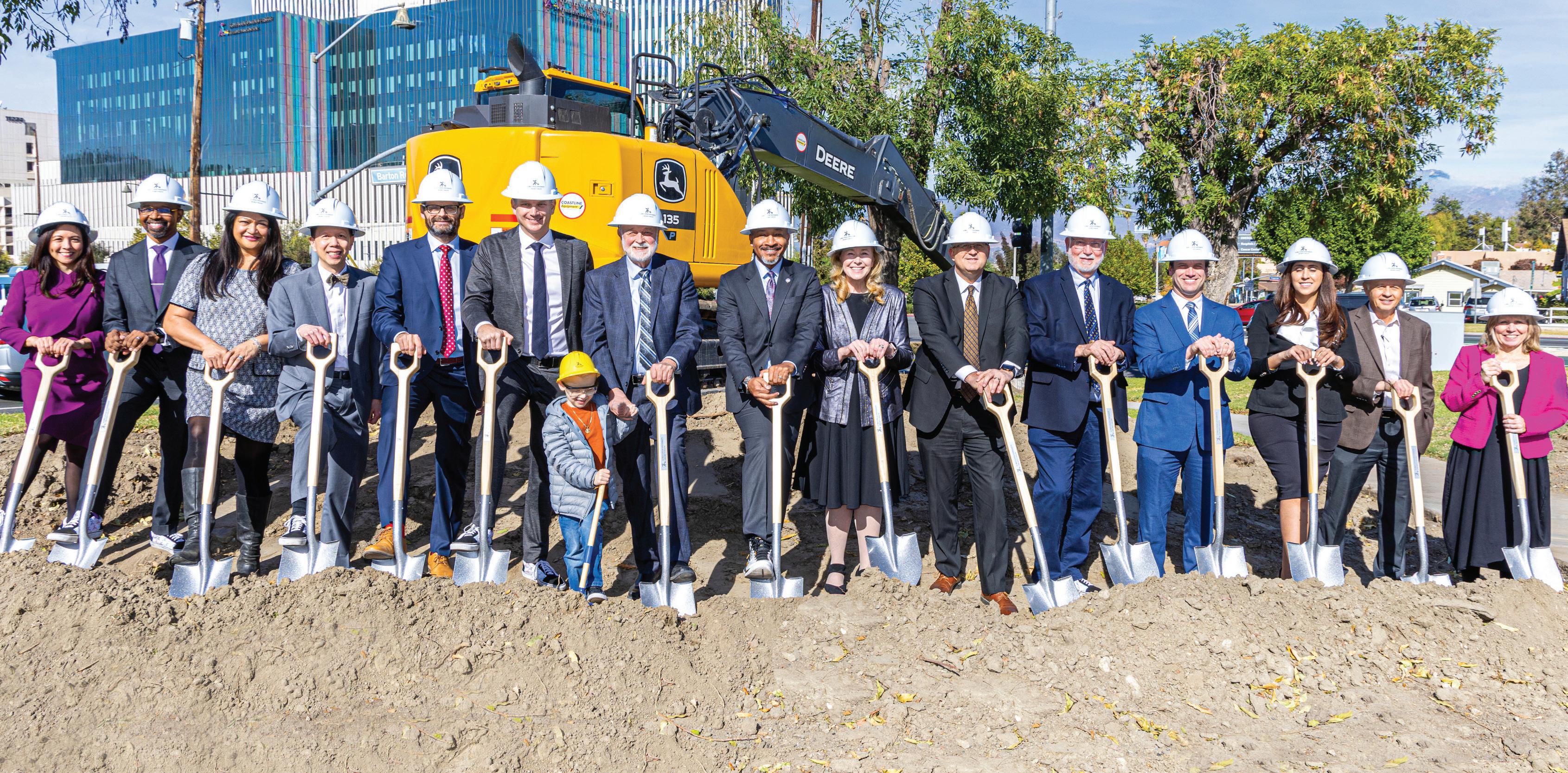
Loma Linda University Children’s Health (LLUCH) hosted a groundbreaking ceremony on Nov. 19 for its new Specialty Clinics building, a facility that will streamline access to comprehensive pediatric care and consolidate a wide range of specialized services under one roof.
The new five-story, 105,000-square-ft. building will house a wide range of services, including orthopedic surgery, high-risk infant care, cardiology, speech therapy, and more. The facility, slated to open in 2026, will be at the southeast corner of the Barton Rd. and Anderson St. intersection in Loma Linda. LLUCH's specialty clinics are currently spread across various locations.
The event welcomed about 300 attendees—including hospital leaders, healthcare providers, community officials, and families—to celebrate this significant milestone in pediatric healthcare.
Richard Hart, MD, DrPH, president of Loma Linda University Health, highlighted the significance of this project during the ceremony.
"This community-centered building represents a significant milestone in our ongoing commitment to providing unparalleled care for the children and
See the latest news and Health & Wellness stories from Loma Linda University Health at news.llu.edu.
families in our community," said Hart. "Having this dedicated building in such a convenient location is vital to the health and well-being of our community's most vulnerable children."
Since opening its doors in 1993, LLU Children's Hospital has been the only dedicated pediatric hospital in the region, serving 1.2 million children annually.
The event also featured Bryson Morris, a 5-yearold patient who recently received a heart transplant after waiting in the hospital for more than six months. A heartfelt video played during the ceremony and provided attendees with a glimpse into his family's journey in caring for a child with a chronic illness.
Peter Baker, senior vice president and administrator of LLUCH, reflected on the hospital's mission and the resilience of its patients. "Each child who will come through these doors is an inspiration. Their positivity and light motivate us to provide the best care possible, offering hope and support to their families," Baker said.
The Specialty Clinics building also represents the collective generosity of the community. Hart expressed gratitude for the foundation board members, guilds, community members, elected officials, and corporate champions who have supported the hospital's mission through the Stronger Together campaign.
"This building, and all it represents, stands as a testament to your compassion, advocacy, and commitment," Hart said.
By Linda Ha
Pacific Union College’s theology and education departments are witnessing a marked increase in enrollment, reflecting a growing student interest in these fields and the college’s commitment to academic excellence and hands-on experience.
This quarter, the theology department welcomed seven new students, bringing their enrollment to 18 compared to last year’s 11. Similarly, the education department has experienced a surge, with their total program enrollment reaching nearly 60.
Both departments’ chairs expressed excitement and positivity for the rising enrollment numbers.
Jim Wibberding, theology professor and department chair, pointed out that if this trend continues, the theology department could easily have 25 students in two years.
In the education department, the number of students in their Introduction to Teaching class doubled this quarter, versus their typical enrollment, with 17 new teacher candidates joining the class. Jean Buller, education professor and department chair, said the spike will continue with even more freshmen enrolled in the upcoming winter quarter.
Buller and Wibberding attribute similar factors to the growth of both the theology and education departments: a growing need in the fields, the high caliber of professors and academics at PUC, hands-on experience with major assignments, and the availability of scholarships and financial support.
According to Buller, PUC’s education department stands out by placing students in fieldwork throughout every academic year, rather than placing students in teaching assignments right before graduation.
“Our students also learn from professors who all stay current in their professional practice,” Buller explained. “They’re not just talking about the craft; they continue to hone their craft.”
Buller said that with the current teacher shortage,
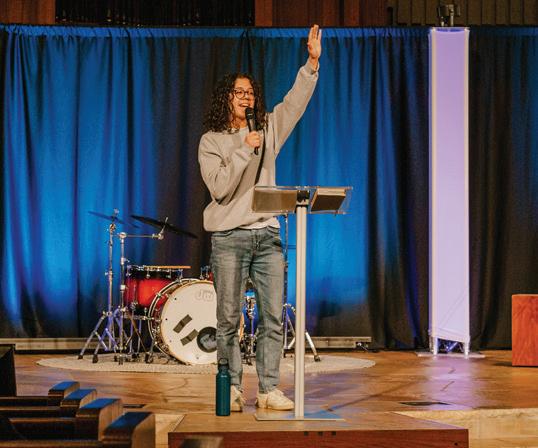
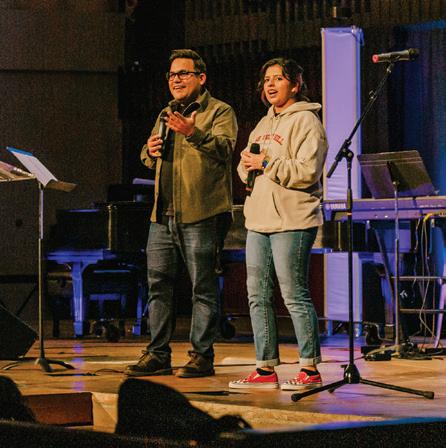
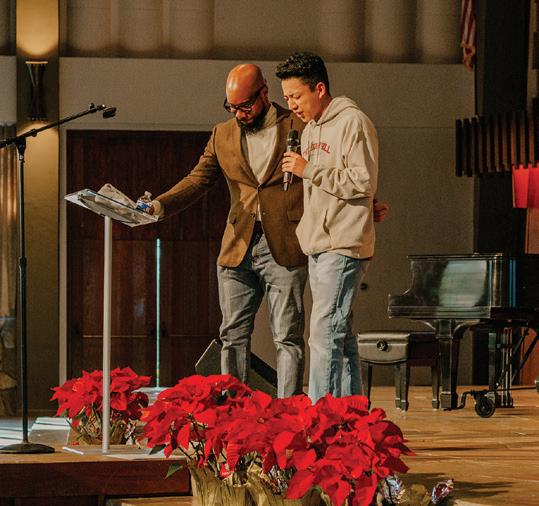
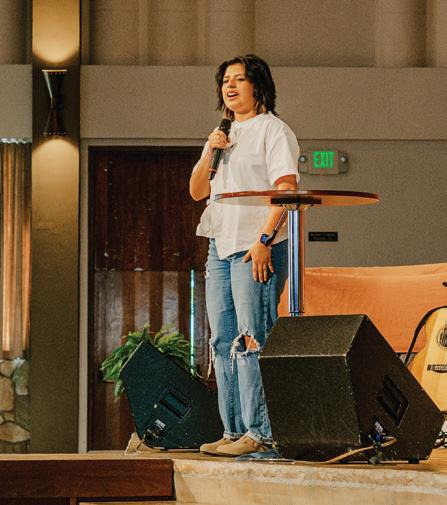
students are assured they will receive multiple job offers upon completing their education credentials.
Scholarships also help pave the way for students to enroll in these department programs. Teacher candidates can access scholarships for those above a qualifying GPA every quarter, with additional financial support available to Adventist students looking to teach in denominational schools. For both education and theology students, two students per year can be chosen to receive $20,000 from the Growing Young Leaders Scholarship.
The Pacific Union Conference’s goal with the Growing Young Leaders Scholarship is to provide a pathway to employment for future pastors and teachers with mentorship training and job placement opportunities within the Pacific Union. This program is designed to be a partnership between the conference, the union, and the college to provide a scholarship for all four years of education so that these students have a straightforward pathway and less debt as they enter the ministry. PUC is grateful for this scholarship, as it has helped tremendously with growing the theology and education departments.
On the theology side, Wibberding credits PUC with having “a solid foundation of academically profound professors who are deeply committed to God, our Seventh-day Adventist faith, and the students we serve” while also remaining agile through a significant expansion of real-world ministry opportunities.
“They get at least three years of hands-on ministry experience,” Wibberding said. “That makes our program stand out, and leaders in the field have begun to notice the level of quality leadership PUC graduates provide as a result.”
Interested students in either field are encouraged to explore PUC as an option for their education.
By Sheann Brandon
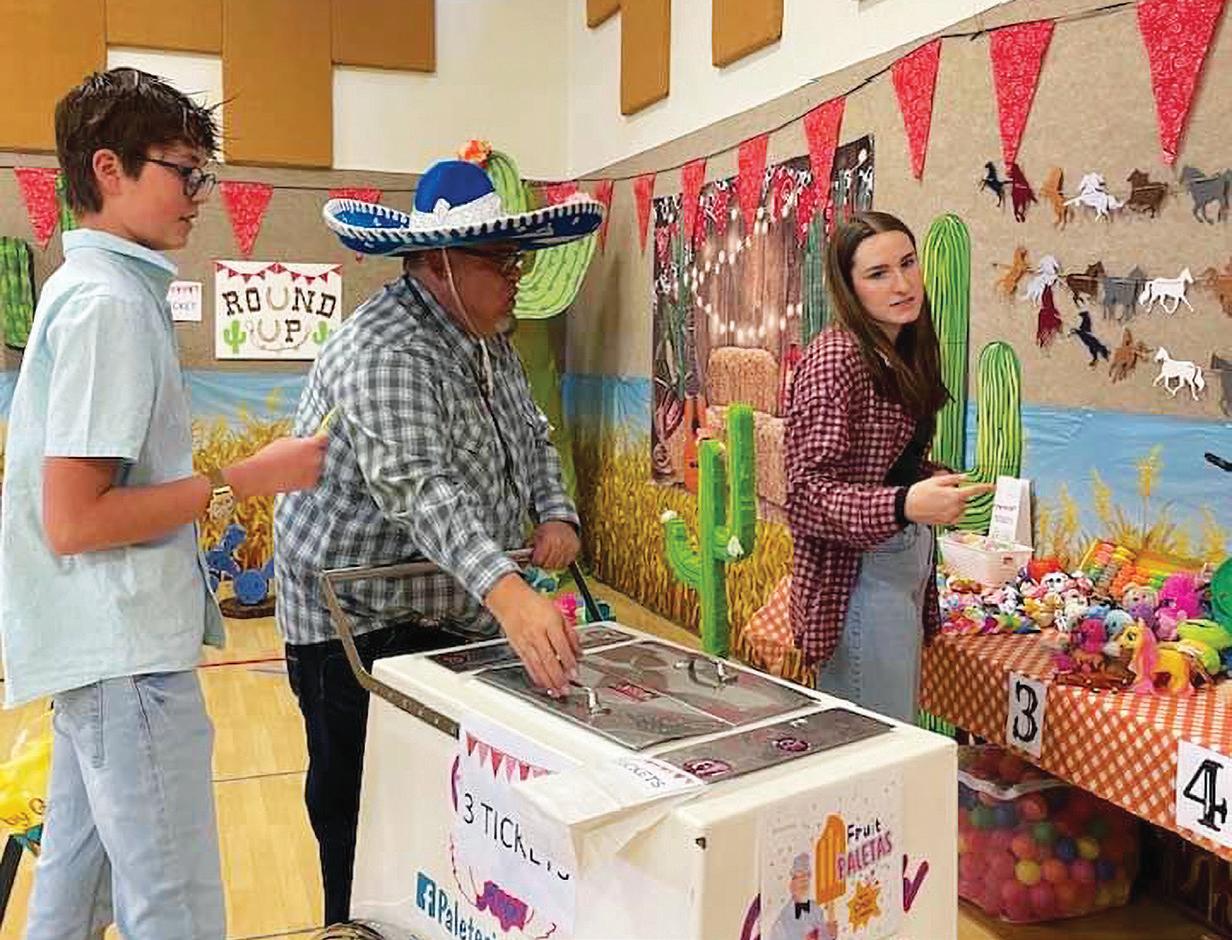
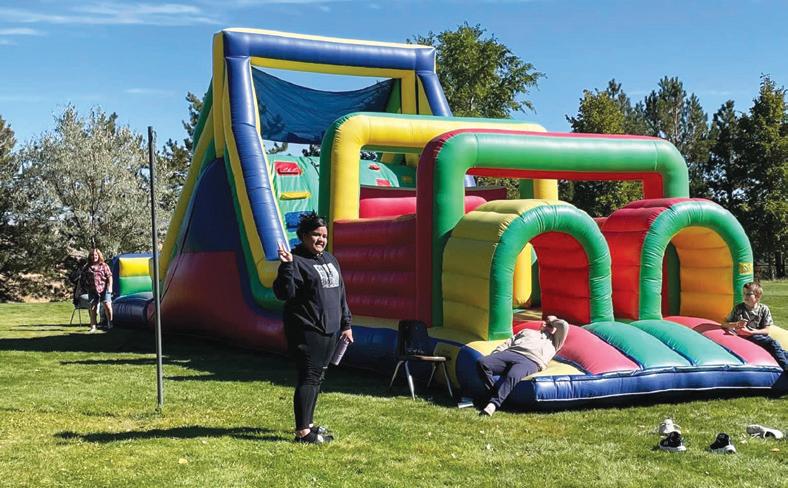
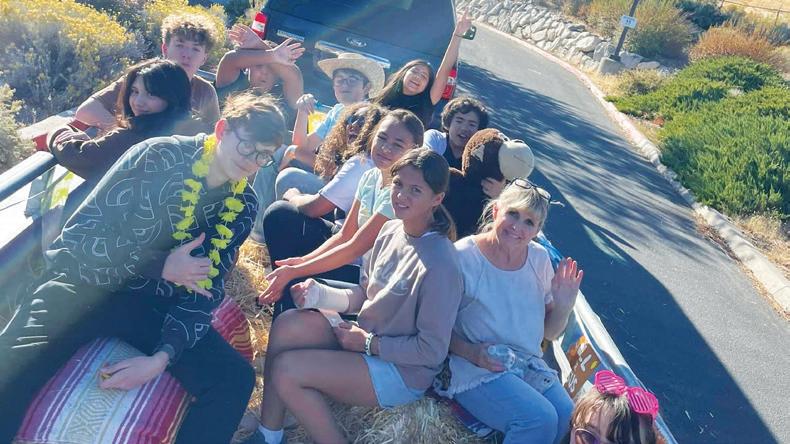
Carlos Camacho, president of the Nevada-Utah Conference, lends his support with a cart full of paletas as a part of the fundraising effort. TOP RIGHT: Nancy Valele keeps the fun safe and organized as she monitors the children at the bounce house. BELOW RIGHT: The hayride is one of the most loved activities during the Fall Festival.
Every year, the Reno and Sparks, Nevada, church communities come together for the much-anticipated Fall Festival hosted by Riverview Christian Academy. This event provides an opportunity to support the school while creating a family-oriented space for fellowship and fun. This year’s festival offered an exciting mix of activities for all ages, including a hayride, face painting, and a lively bounce house. Children’s cheers were heard all over the school’s gymnasium as they won prizes at the games, while their imaginations ran wild at the pumpkin decorating station. Each corner of the event was filled with energy, bringing smiles to attendees, young and old.
Tracy Pieters, the organizer of the annual festival, expressed her gratitude for the outpouring of support. “I’m so thankful to everyone that came out and to all the volunteers that helped make this possible. Thank you for donating, giving, and serving. All the support truly touched my heart,” she said.
While the festival’s primary purpose is to uplift the school and its students, it also serves as a beautiful way to bring families and friends together. One of the attending children summed up her day, saying, “I had so much fun, and it was a beautiful day. We can’t wait
to come back next year!”
This year’s Fall Festival, once again, showed why it remains a beloved tradition at Riverview Christian Academy. With its emphasis on community, generosity, and joy, the event beautifully reflected the spirit of togetherness and faith that comes from being part of the body of Christ.
The Academy extends its deepest thanks to all who participated and looks forward to more opportunities to celebrate with the community in the future.
By Neat Randriamialison
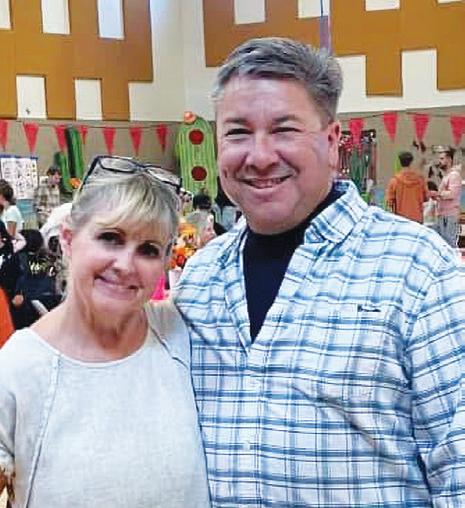

October was a busy yet exciting time for the Sparks church. In early October, member Tracy Pieters received an article from her nephew about a church in Roan Mountain, Tennessee, that had been flooded by Hurricane Helene. The Tennessee church was searching for a donor to provide 30 Bibles. Coincidentally, or providentially, the Sparks church was unpacking boxes that had been stored since their own recent flood recovery. One of these boxes contained brand-new, unused Bibles. Tracy Pieters and Judy Phelps packed up those Bibles and sent them to the church in Tennessee, which had suffered a great loss.
From October 12-19, 2024, Sparks church, under the leadership of Elder Richardo Major and his team, hosted a revival series titled “Choices, Choices, Choices.” Pastor David Hall was the speaker, with guest musician and singer Deanna Brewer. With the help of modern technology and livestream, the presentations reached over 1,000 people during the series, and it was clear that the Lord was truly at work.
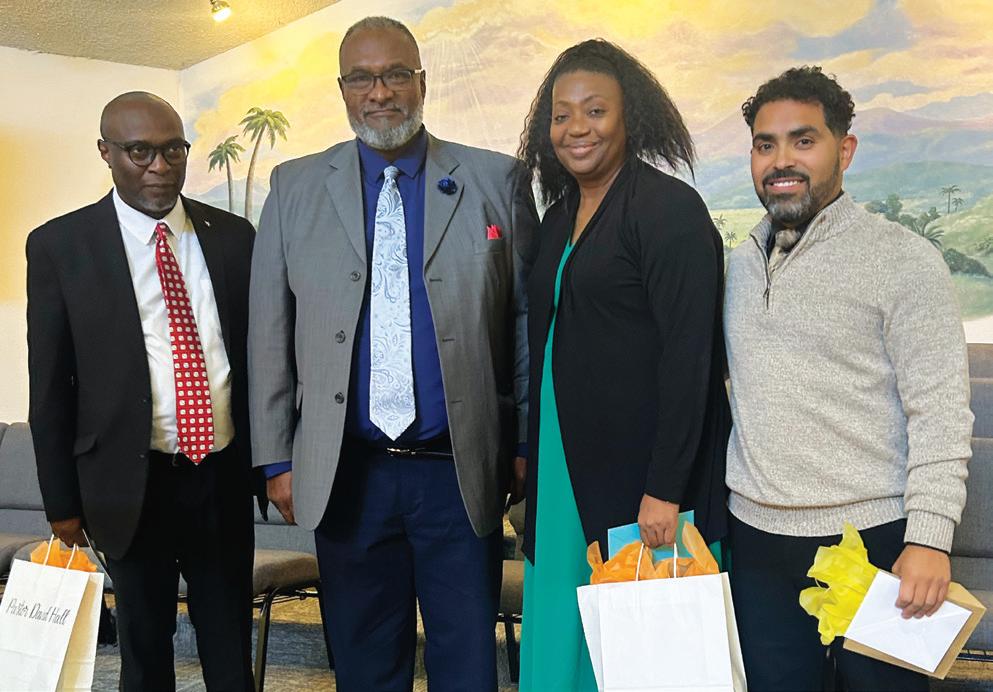

Children
Running concurrently with the revival was a children’s program called C.R.E.A.T.I.O.N Kids, led by Elder Manuel Ortiz. Over
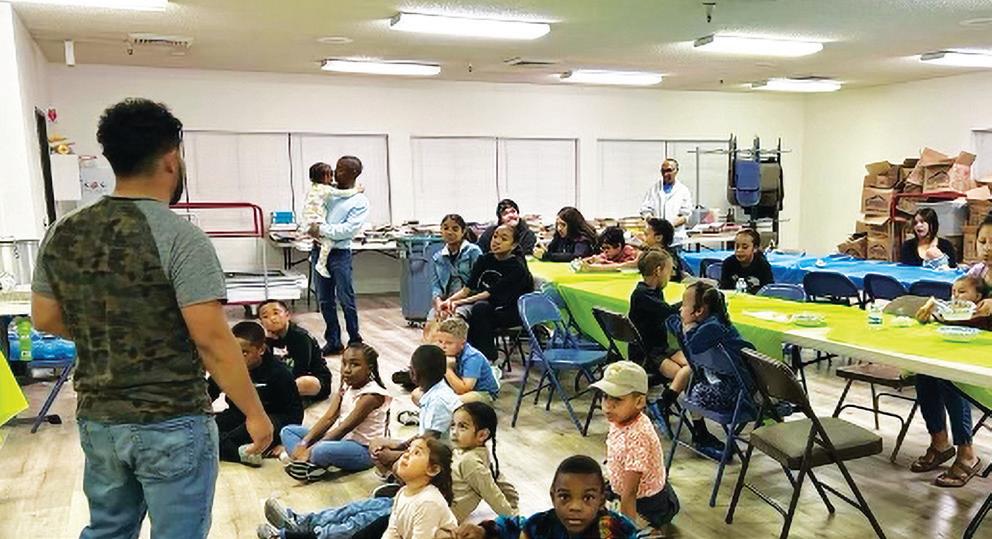
20 children, ages 4-12, attended the program, where they enjoyed Bible stories presented through a puppet ministry, along with crafts, games, and snacks. Manuel’s team did an outstanding job of creating a memorable experience for the kids.
On October 26, 2024, Sparks church wrapped up the month with an Adventurer Club induction service. Over 20 children received their patches, pins, scarves, and sashes. The Adventurers led the entire church service, demonstrating their dedication and skills under the guidance of Ofa Manu and her volunteer team. Children are the lifeline of our church, and we see that God has great plans for Sparks church.
By Nancy Albin
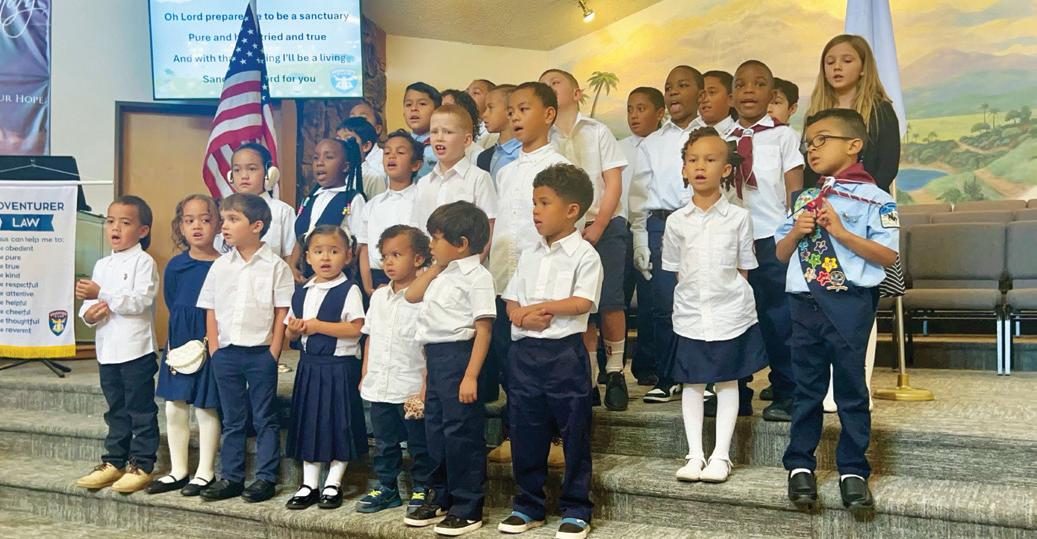
Siena, a seventh-grader struggling in public school, longed for a more supportive environment. Her parents began exploring healthier schooling options and were impressed by the program at Pleasant Hill Adventist Academy (PHAA). Though not religious, her father had started contemplating a higher power, while her mother was seeking a safe, nurturing school for her daughter.
Enrolling Siena at PHAA exceeded all expectations. By the end of the first semester, Siena’s academic performance had soared, and she developed a deep interest in God and His Word. She attended weekly Bible studies and Sabbath services and volunteered in the children’s department. Her joy and connection
with her peers grew as she joined the praise team and Friday night youth group.
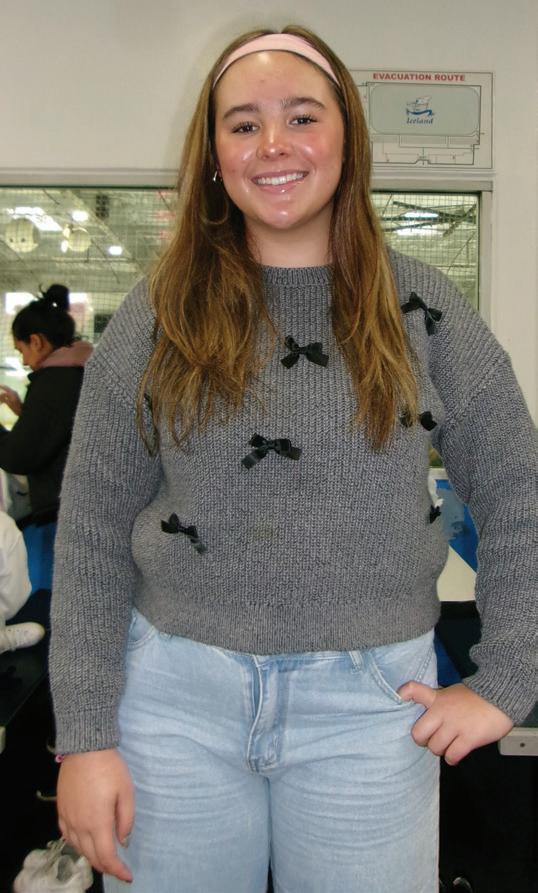
Inspired by Siena’s transformation, her parents began attending church and witnessed her commitment to be baptized. Siena boldly shared her love for God, later becoming a featured chapel speaker, sharing her testimony with passion and clarity.
This journey didn’t just change Siena—it transformed her entire family. Today, her family are active Pleasant Hill church and school community members. Their story is a testament to the profound impact of Christian education, which extends beyond individual students to transform whole families.
By Ken Miller
On October 5, the Buena Tierra and Oakland Spanish churches teamed up with 106 volunteers to provide their community with free healthcare.
Thanks to a generous donation, the Northern California Conference (NCC) Health Ministries Department, in collaboration with the churches, supported this outreach event that touched the lives of over 150 individuals, providing essential eye care, dental care, and mental health support. Volunteers also provided haircuts for 40 people, recognizing the
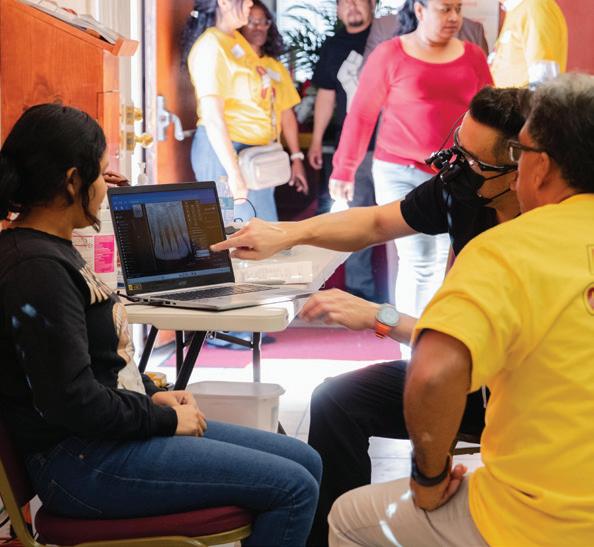
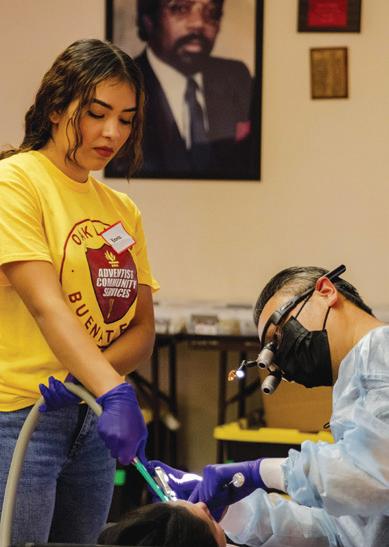
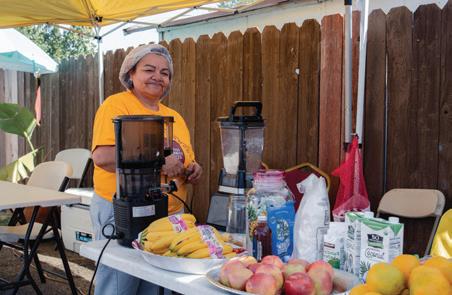
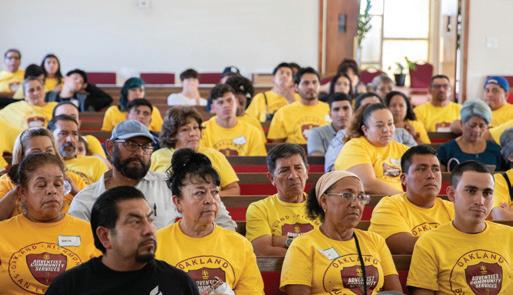
dignity and confidence that comes from feeling good about oneself.
Luis Manrique, pastor of the Oakland Spanish church, expressed his enthusiasm about the outreach event, noting that 34 additional people received immigration advice and another 14 requested Bible studies. He remarked, “This was a very impactful and relevant outreach for our community, and its effects will yield many for the kingdom.”
Manrique added, “We thank God for the collaborative efforts of the Oakland Spanish and Buena Tierra churches in reaching out to the community. We are also grateful for the support from NCC and the dedication of each volunteer.”
By Ken Miller
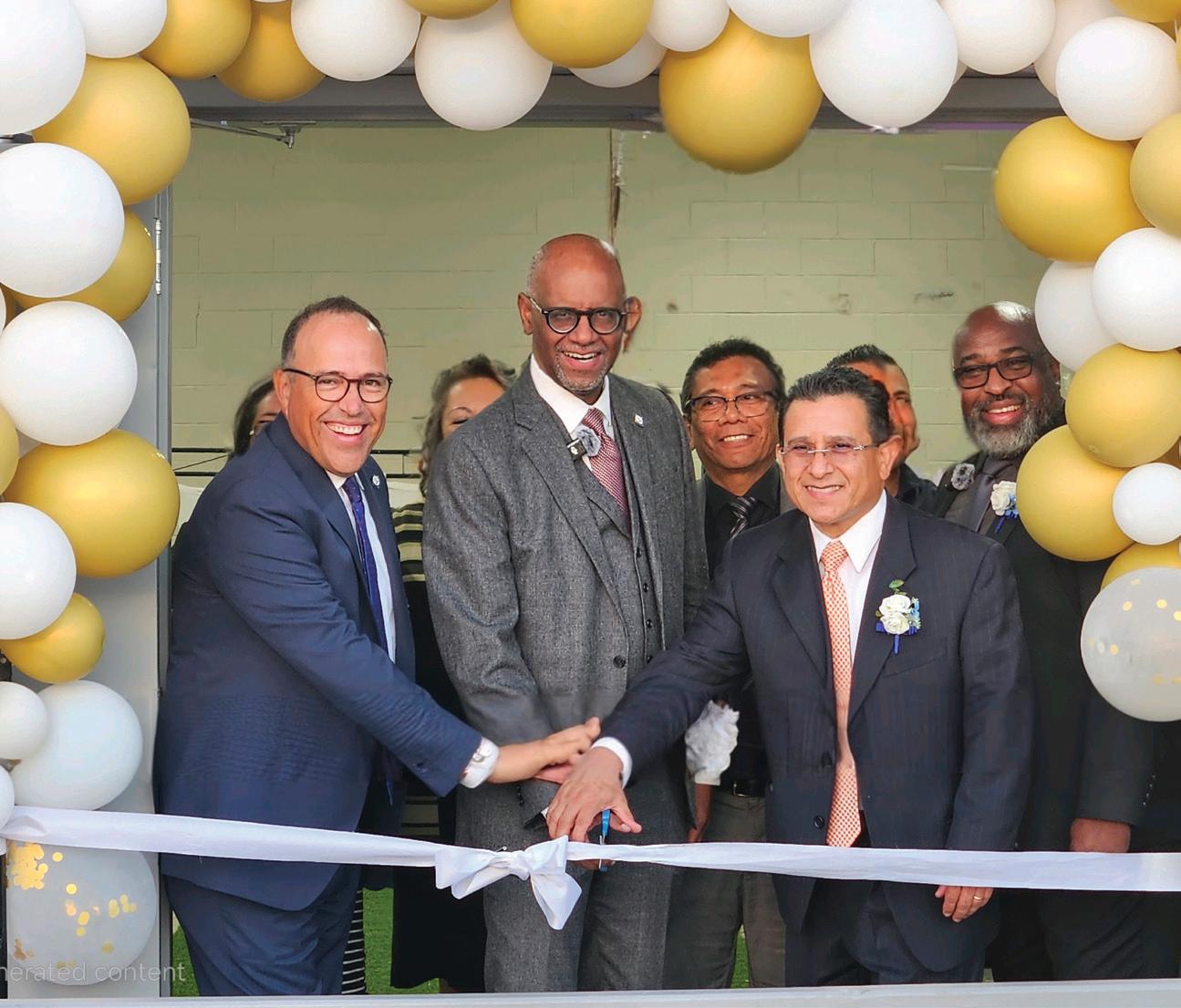
In October, a five-year dream was realized as the Hayward Spanish church unveiled its unique Center of Hope. Led by Stennett Nash, pastor, and supported by Daniel Javes, Miriam Solman, Mary Len, Raquel Javes, and numerous dedicated volunteers, this vision was brought to life with generous funding from the Northern California Conference. The Center of Hope marks a significant expansion in how this faith community serves and uplifts Hayward and surrounding neighborhoods.
Nash expressed his commitment to the mission: “The Center of Hope is not just a program. It is part of our church. This will be a center of support, guidance, and connection until Jesus comes. Our purpose is to offer a place where people find real hope, practical resources, and the love of Christ in every interaction.”
The Center of Hope is dedicated to enhancing the community's health, well-being, and prosperity. The food bank is a vital resource, providing support to families in need. In addition, the Center will launch health outreach initiatives that leverage the area's natural environment, including guided walks, cooking classes, and health fairs. Furthermore, the Center plans Adult English Literacy and English as a Second Language classes to equip participants with the skills necessary to secure and maintain meaningful employment.
Youth education is also a priority, with after-school tutoring for schoolage children and teens, fostering academic growth and self-confidence.
Additionally, the Center will build a digital library for educational and personal development resources. Legal assistance and referrals to partner nonprofits will round out the Center’s offerings, ensuring comprehensive support for individuals and families.
During the dedication, Marc Woodson, NCC president, shared his enthusiasm, stating, “One of our strategic anchors at NCC is community relevance, and the Center of Hope will be a transformative blessing for the Hayward community. This center mirrors the compassionate work of Jesus and allows us to be His hands and feet in the world.”
The Center of Hope stands as a living testament to the power of unity, compassion, and faith. Through ongoing support and the unwavering dedication of its leaders and volunteers, the Hayward Spanish church is shining a light on what it means to serve selflessly and transform lives, one neighbor at a time.
By Ken Miller
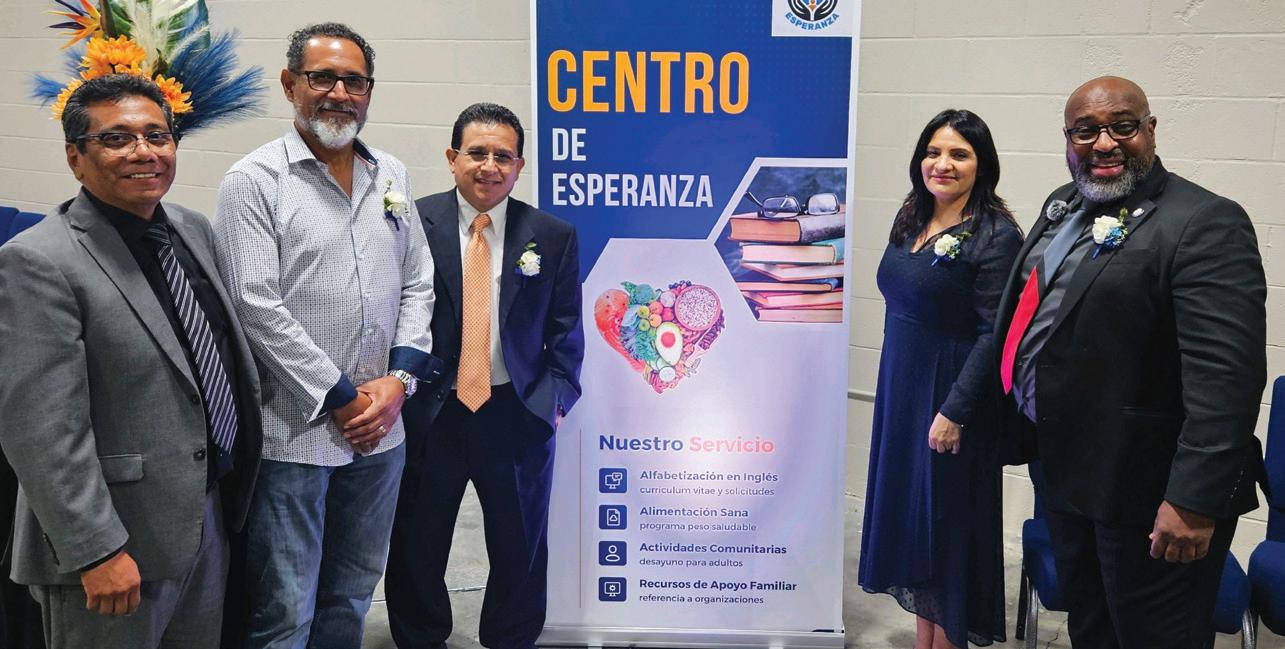

On November 16, sixty members from local churches gathered at the Roseville church for the inaugural Ending Homelessness Summit.
The Northern California Conference (NCC) aims to reach “functional zero” for at least one unhoused population group in a community where an NCC church or school is located by 2032. Functional zero occurs when homelessness is rare, brief, and non-recurring. This summit equipped attendees to establish homelessness task forces within their churches and schools.
Presenters from the NCC Council on Homelessness outlined the Ending Homelessness Initiative, explained functional zero, and provided theological and practical frameworks for addressing homelessness. Joelle Chinnock, NCC’s Ending Homelessness Initiative coordinator, emphasized the importance of partnerships, highlighting a successful affordable housing project developed by Path of Life Ministries in Riverside.
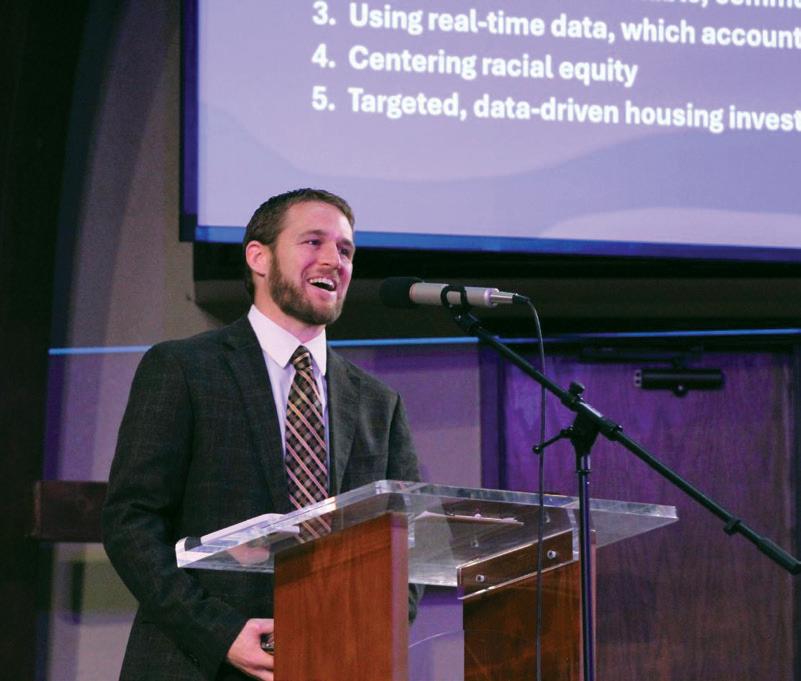
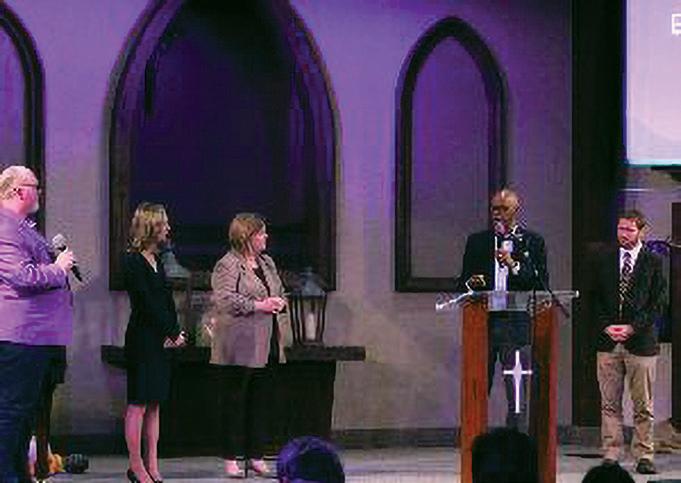
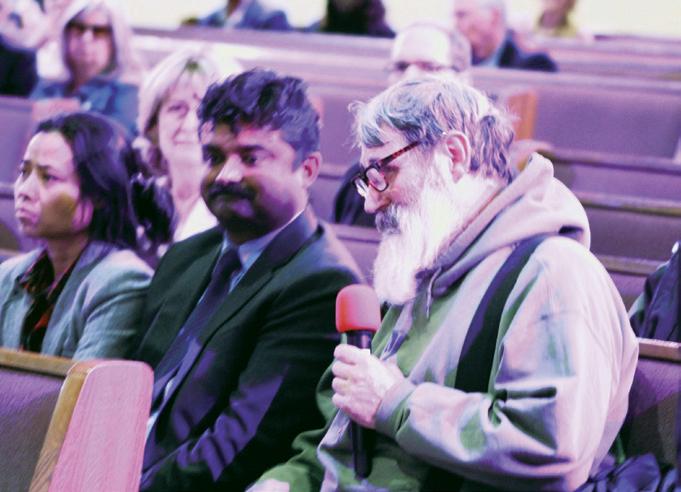
This summit launched a united effort to end homelessness, showcasing the NCC’s commitment to being agents of hope and healing. As NCC President Marc Woodson said, "The call to end homelessness reflects Christ's mission to serve the most vulnerable among us. Through faith, collaboration, and action, we can bring hope and lasting change to our communities, fulfilling our commitment to love our neighbors as ourselves."
By Ken Miller

Notice is hereby given that a non-election regular session of the Northern California Conference of Seventh-day Adventists is called to convene at the Granite Bay Hilltop church in Granite Bay, California, on Sunday, May 18, 2025, at 9:00 a.m.
The purpose of this meeting is to receive from the officers and department directors, or other agents of the conference, reports pertaining to the work carried on within its territory since the last conference session and to transact any other business that may properly come before the delegates in session.
Each church is entitled to one delegate for the organization and one additional delegate for each 100 members or major fraction thereof.
Marc K. Woodson, President I Jose J. Marin, Executive Secretary Constituency Session Notice
Over 100 young adults gathered in Tahoe this September, seeking to connect with God, build friendships, and experience the beauty of creation.
Daniel Garza, former district pastor of Woodland and Vacaville churches and chair of NCC Young Adult Ministries, highlighted the event’s significance: “This age group can often feel disconnected after leaving college and entering the workforce. Events like this engage them socially, mentor them spiritually, and help them stay rooted in their faith and connected to a church family.”
Many attendees were non-Adventists from the Sacramento and Bay areas, drawn by friendships built at previous gatherings and through social media. One single mother, seeking to heal her strained relationship with her son, began attending a Bible study through
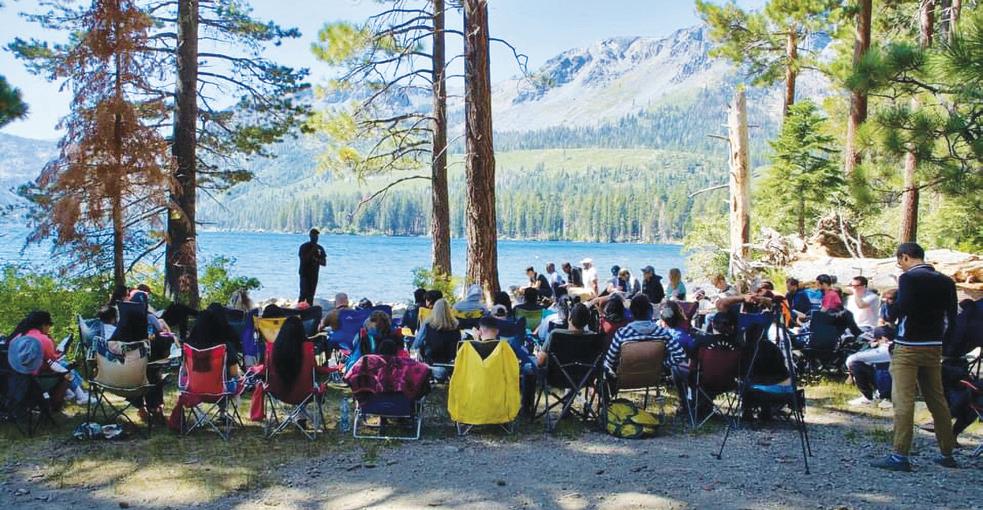
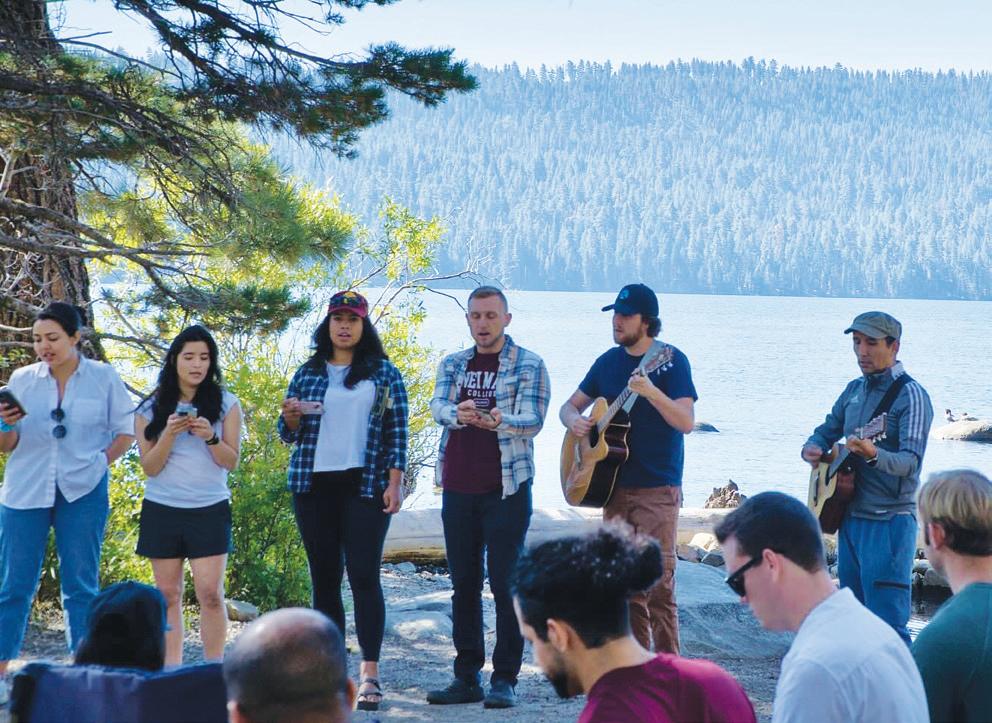
connections made in this young adult network. Both were profoundly impacted by the messages at the Tahoe retreat and chose to take a beautiful step of faith, requesting baptism in the lake.
Garza noted how events like AdvenTed, Food Truck Mania, and the Tahoe retreat build momentum for meaningful relationships. “Friendship evangelism is at the heart of what we do,” he said. “Through these connections, we can reach, nurture, and empower young people to live for Jesus.”
By Ken Miller
In September, Douglas Barahona was ordained at the Chico church. Born in El Salvador, Barahona’s family immigrated to the United States in the 1990s. Douglas admitted that while the family settled in Tacoma, Washington, “I started making many poor choices, but with the guidance of many positive groups and people in my life, I eventually decided to pursue a degree in religion at Union College.”
Joining the NCC in 2017 at the Ukiah church, he joyfully worked planning youth ministry events and mission trips, keeping area youth engaged with Jesus. In 2020, he attended Andrews University, earning his Master of Divinity degree. Subsequently, he returned to the NCC as the associate pastor of the Chico church, where he is passionate about bringing the joy found in serving others.
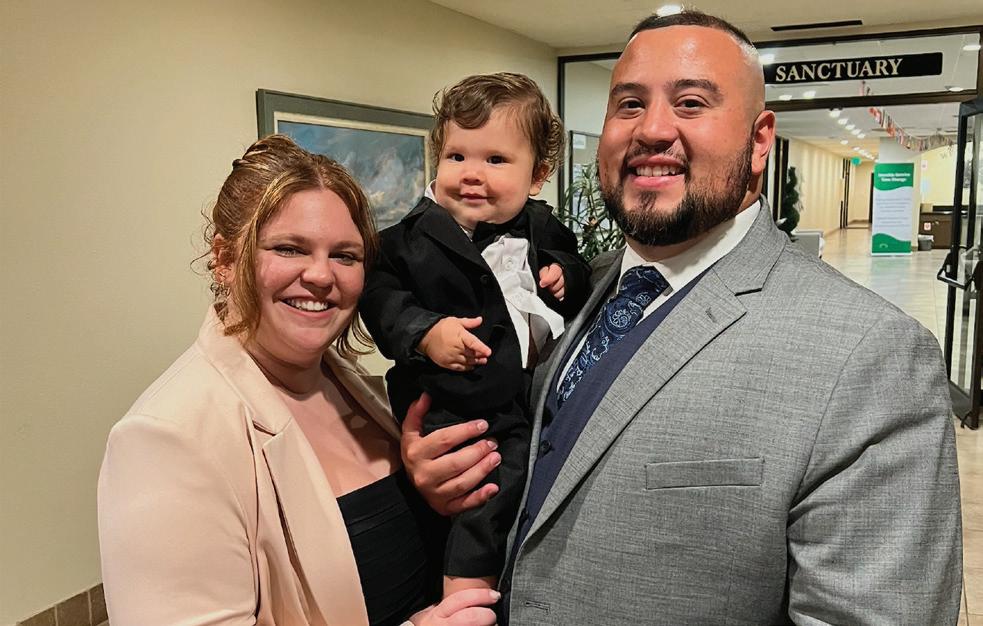
Douglas shares his life with Natalie, his wife of eight years, and they enjoy raising their son, Luka, age two.
By Ken Miller
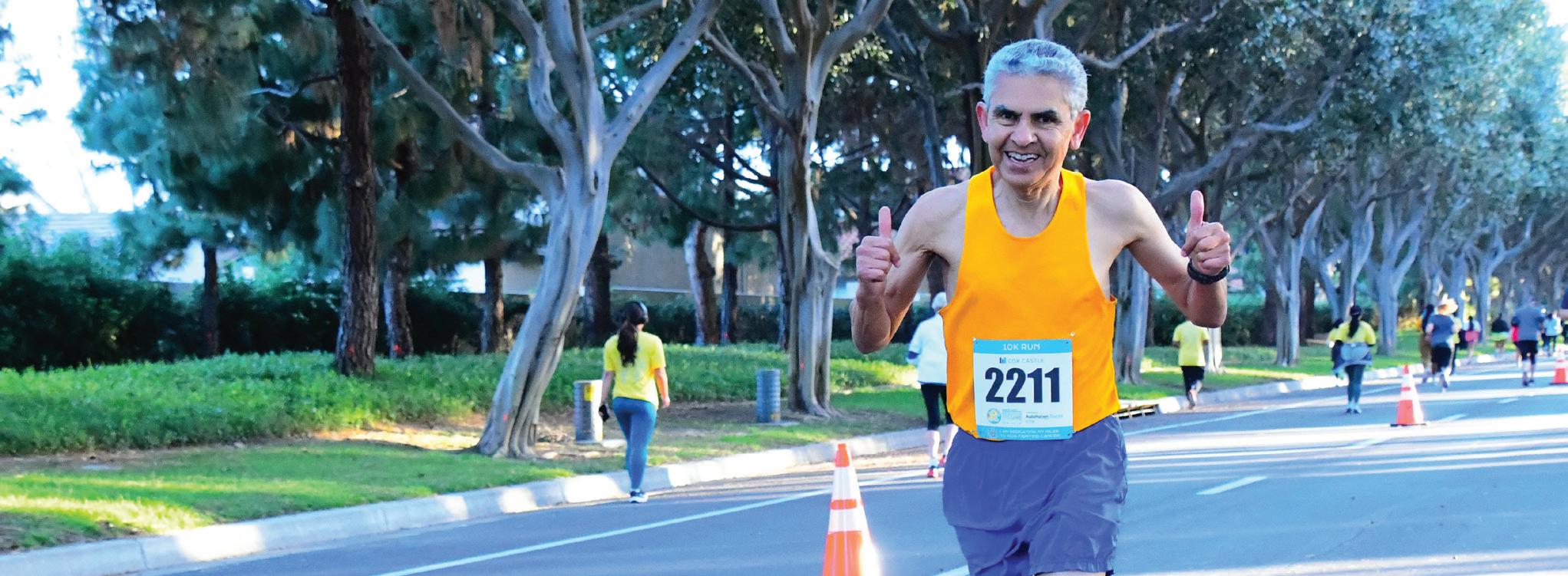
In the heart of Beaumont, a new initiative is jogging its way into the hearts of local residents—a running club spearheaded by Ron Du Preez, pastor of Beaumont church. Known for combining his athletic passion with his community-driven spirit, Du Preez has sparked a movement toward healthier living and community camaraderie.
Currently unnamed and in the process of discussion, the club’s inception is rooted in cultivating relationships and wellness across the community. Du Preez, who also serves as a chaplain at San Gorgonio Hospital, is an avid runner who shares his passion about health to inspire others.
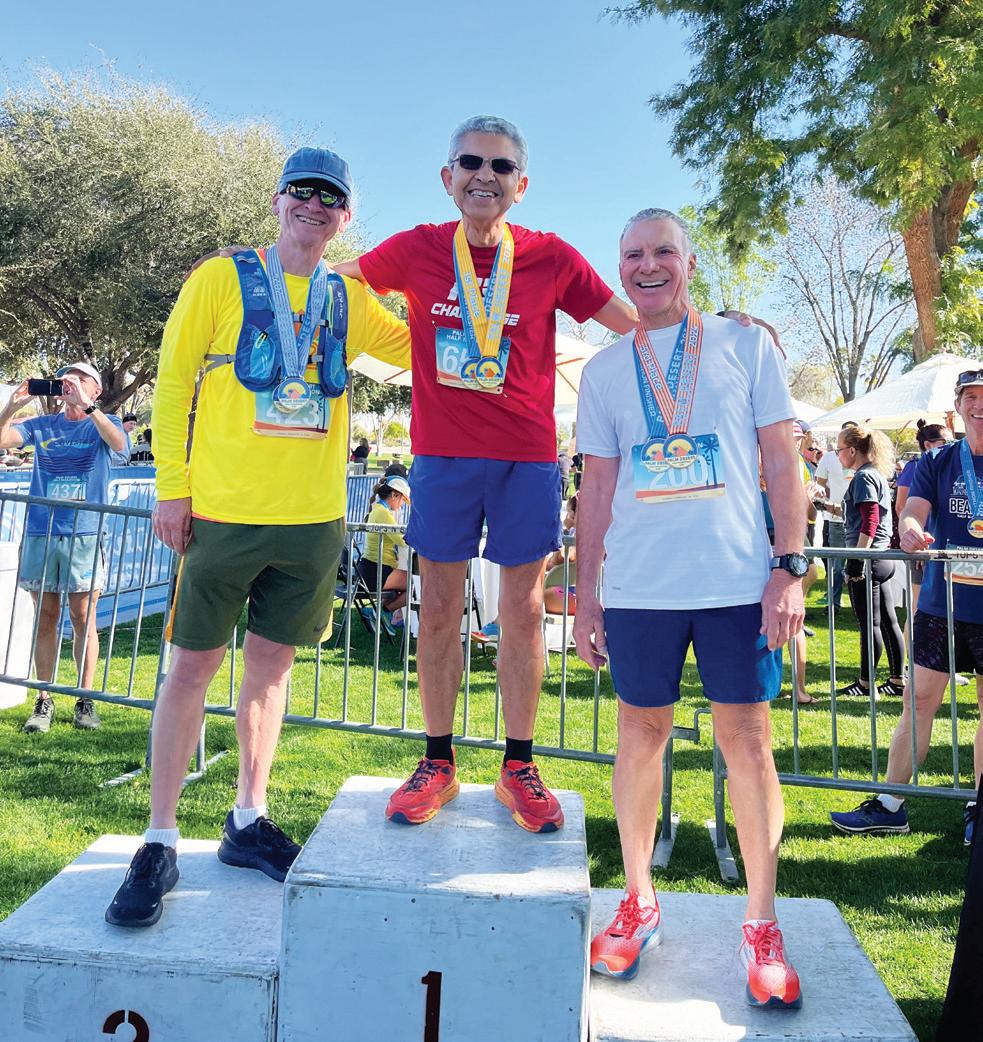
On October 27, the club hosted its inaugural event at the Albert A. Chatigny Community Center. Community members—including Jim Hughes, the president of the Loma Linda Lopers Club, and David Fenn, Beaumont city mayor—addressed the crowd with messages. Church members and local community members alike gathered for an evening that was as much about fitness as it was about fellowship. The event included a name competition with a $50 prize, free meals, snacks, and massages, all designed to foster a sense of engagement.
The club, which meets monthly, plans to undertake more extensive events, such as hikes on the Pacific Crest Trail. The broader vision extends beyond physical health. With Du Preez's advocacy for wholistic living and healthy friendship evangelism, the group also aims to spread a message of spiritual growth and service. Connection with others is a passion Du Preez holds closely. "God is opening doors for me to connect with people and have discussions about deep questions," he noted.
The running club, soon to align with Beaumont church health ministries, reflects Du Preez's ethos of integrating personal passions with broader community goals. His endeavors reveal a blueprint for how local leaders can engage with and enrich their communities— to create spaces for people to gather and opportunities to share the love of Jesus. "I think this is what Adventists should be doing," Du Preez said.
Ultimately, the running club is more than just a group of individuals pursuing fitness goals; it is a beacon of how local initiatives can transform lives, foster a healthy community, and evangelize by building healthier connections.
By Taji Saleem
The small desert town of Blythe, on the California-Arizona border, is often associated with its heat, prison, and remoteness. But on October 26, the Colorado River became the setting for something remarkable—a baptismal celebration that united the local church community.
Nearly 100 people gathered at Peter McIntyre County Park to witness 10 individuals publicly commit their lives to Jesus through baptism. This event marked the first of its kind for the area and brought together two congregations—Blythe church and Blythe Central church. Four candidates came from the Blythe church, while a family of six represented the Blythe Central church. The day was filled with unity, joy, and spiritual renewal.
Led by District Pastor Gabriel Riojas and local church elders, the baptisms in the Colorado River inspired cheers as each candidate emerged from the water. Among them was Genesis Brodkin from Blythe Central, who shared, “I want to grow closer to Jesus and love God better.” Reflecting on the day, she called it “the best day of my life.” Genesis was joined by five family members, including her grandfather, cousins, and sibling, making the moment even more profound. Cheers echoed as each candidate was washed in the waters of the Colorado River.
A particularly touching moment came when Kiana Ortiz, a Blythe church member, was baptized alongside her husband, Diego—the first and only double baptism of the day. Having attended the church intermittently for 13 years, Kiana shared that it wasn’t until recently that she considered baptism. “It was lovely and so different,” she said. “Being baptized with my husband was refreshing and unforgettable.” Her story is a reminder of the importance of reaching those already in our midst.
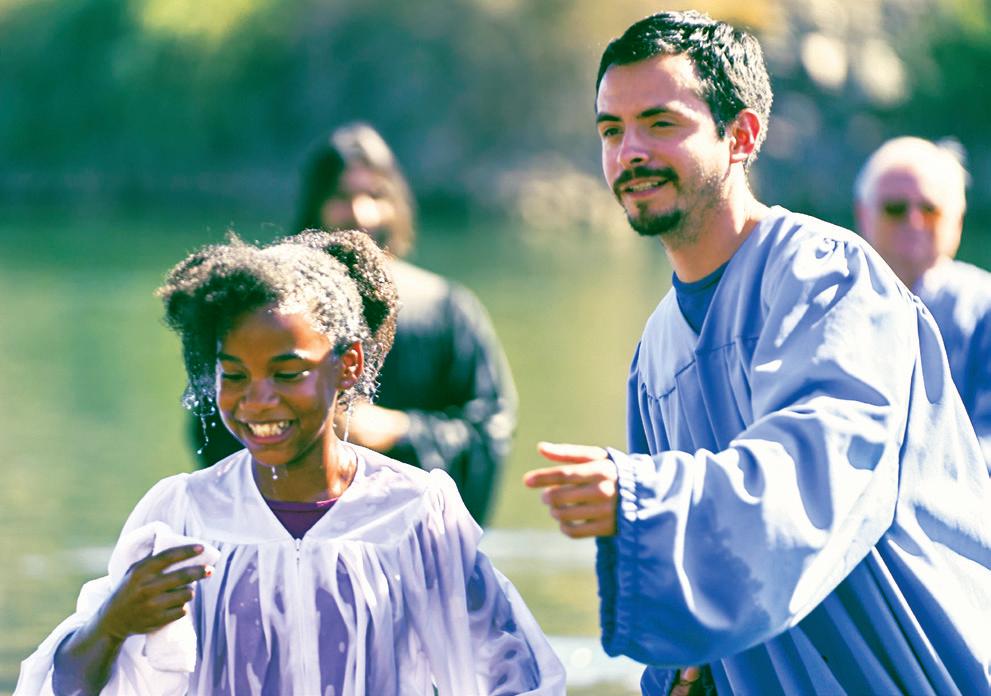
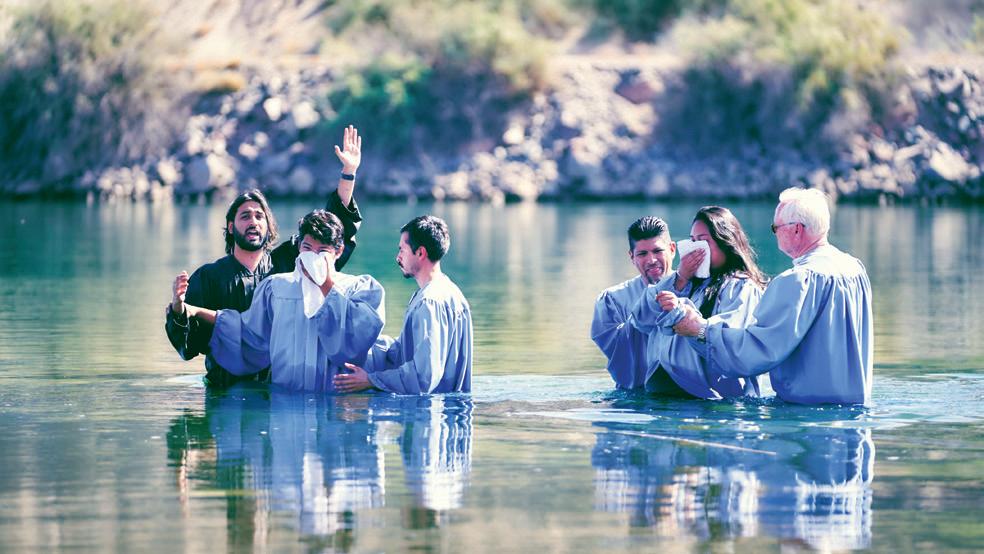
The celebration concluded with a shared potluck, symbolizing the unity of the two congregations. Despite the town's challenges, such as poverty and slow growth, the beautiful scene of baptisms demonstrated that God is actively working in even the most remote places. In Blythe, where little seems to move, God is moving in powerful ways.
By Gabriel Riojas

Cliff and his wife, Freddie, made a last-minute decision to book a budget flight, relegating them to seats at the back of the plane. Initially annoyed by the inconvenience, their perspective shifted when they met Jonathan and Cristina Mendoza, seated across from them with their two sons, 12-year-old Bentley and baby Thiago.
As Thiago cried during takeoff, Cristina declined a fellow passenger's help. But Cliff, affectionately known as the "child whisperer," stepped in and calmed the baby. This gesture opened the door for a meaningful conversation between Cliff and Jonathan. After sharing that they were headed to San Diego for their son London’s installation as senior pastor, Cliff felt led to invite the family to the service.
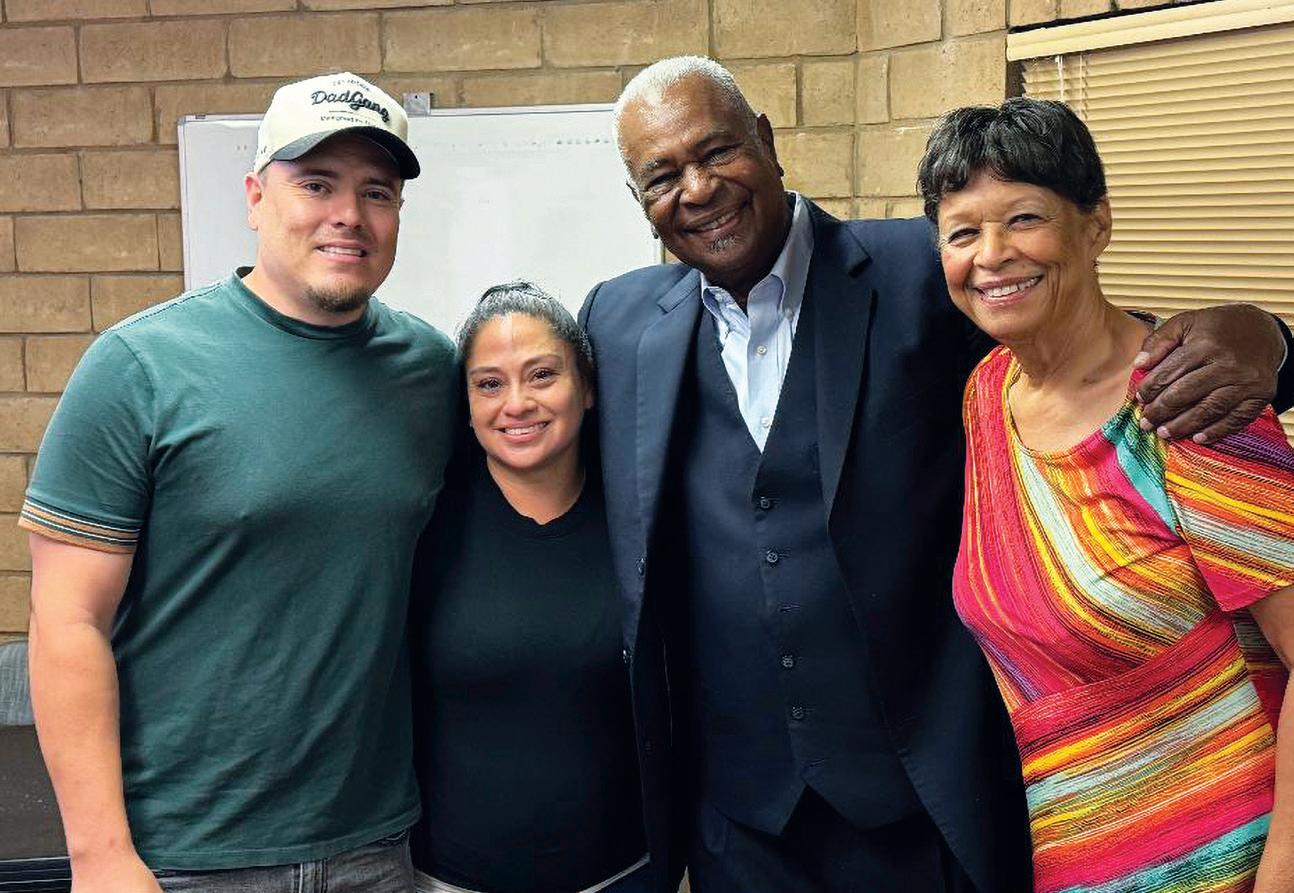
Jonathan’s response, “I need Jesus in my life,” left a lasting impression.
To Cliff’s surprise, the Mendozas arrived early the next morning for Sabbath School and the service.
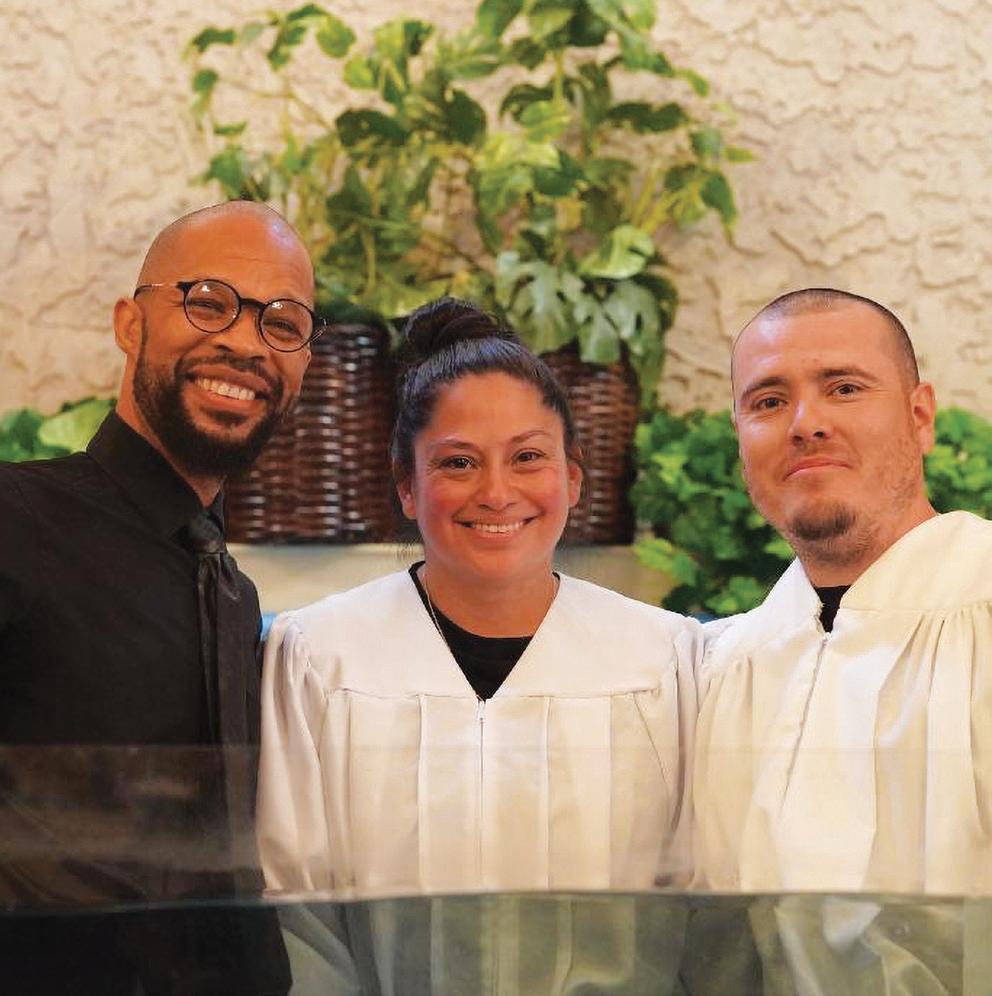
They connected with the church community and began attending regularly, forming a close bond with London Lee, senior pastor of the San Diego Clairemont church. Through Bible studies and support from the congregation, Cristina started to heal from the devastating loss of her 16-year-old son, Isaiah, to gun violence two years earlier.
Guided by their newfound faith, Jonathan and Cristina made significant life changes. After learning about biblical marriage, they decided to live apart until they could wed. In September 2024, Lee officiated at their wedding, a joyful milestone in their journey. Weeks later, the couple was baptized together, their tearful embrace in the baptismal pool a testament to God’s transformative power.
The family has since become integral to the San Diego Clairemont church. Jonathan joined the “Service and Love Together” (SALT) ministry, serving the homeless, while Bentley joined the Pathfinder club. While attending the International Camporee in Gillette, Wyoming, Bentley decided to be baptized.
The Mendozas’ journey from grief and uncertainty to joy and purpose reflects God’s perfect timing and grace, proving how a simple plane encounter can spark a lifetime of transformation.
By Freddie Harris
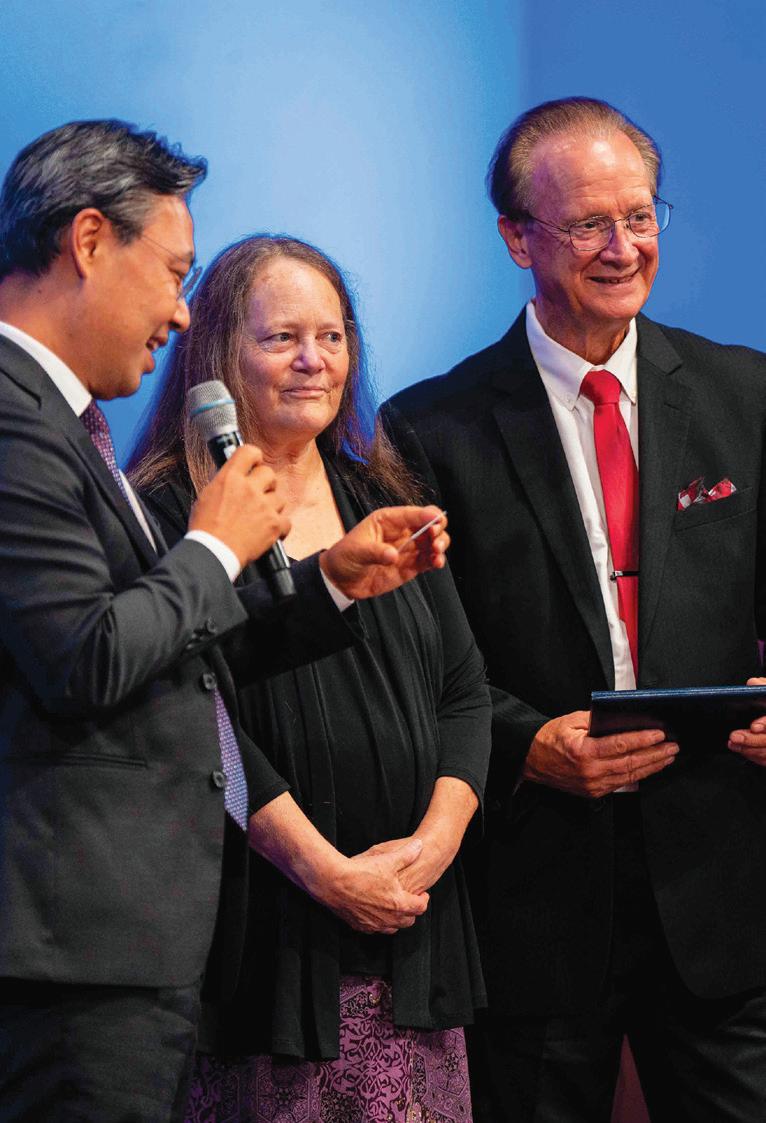
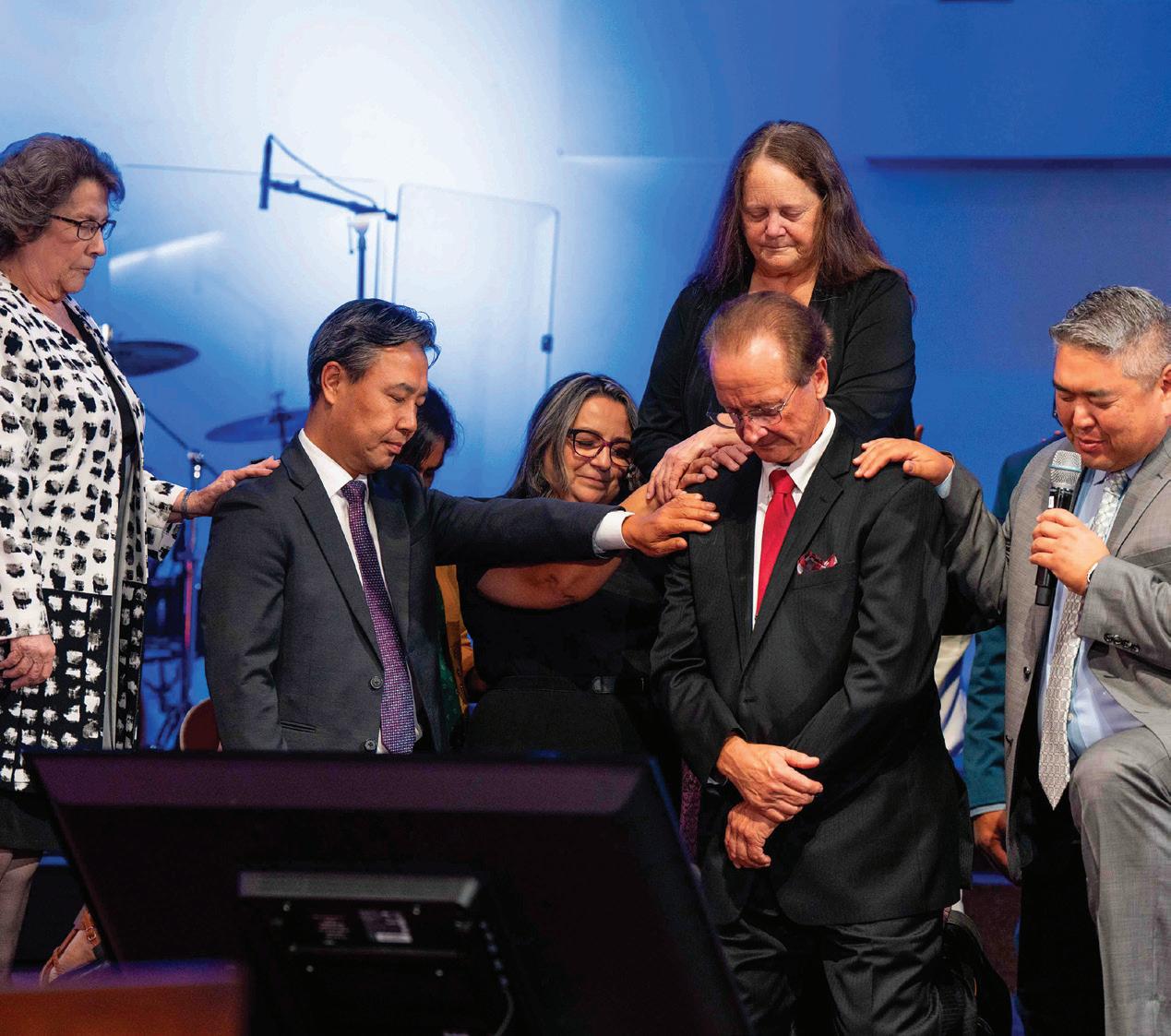
This past October, the Southeastern California Conference (SECC) ordained Eugene “Gene” Oswald at OCGrace church, where he serves as a pastor focused on family and children’s ministries.
Oswald’s journey began at age six, when he started volunteering at church by speaking during services and helping with children’s stories. His involvement in church services and outreach laid the foundation for a life dedicated to ministry and ignited his passion for serving others. Oswald remarked, “Jesus is the greatest teacher, and using His parables and lessons has always been the inspiration behind my ministry.”
At age 12, Oswald led his first Bible study with Mrs. Doty, who later became a family friend. Seeing her baptized left a lasting impression on him and marked the beginning of a lifelong commitment to spiritual mentorship. “From there, I would teach Sabbath School, speak in church…and become a youth leader in Pathfinders,” Oswald shared.
Over the years, Oswald’s ministry evolved. He taught for over four decades, served as a youth leader, and led numerous initiatives from children’s church to the “Pass It On” conference. “God can use you in mighty ways, no matter your profession or situation,” he said. His path,
often unconventional, has been driven by a commitment to following God’s call, whether in a classroom or from the pulpit.
Oswald’s wife, Valerie, and their four children have been integral to his ministry, often joining him in church activities. “How can you minister to anyone if you cannot minister to your family, friends, and neighbors?” he reflected. He is proud that his children and grandchildren are active in the church, continuing a legacy of faith.
Asked about retirement, Oswald noted, “Only He knows what that will be. I look forward to whatever the future holds, but it will be a continued walk with Jesus.”
As Oswald embarks on this new chapter, SECC celebrates his ordination and the dedication he brings to his ministry. His passion for guiding others in faith exemplifies his calling to spread Christ’s love in his community and beyond. His journey is a reminder that faith can lead us to extraordinary places, no matter where we start. Whether you're leading a congregation, mentoring a young person, or simply serving those around you, his story is an example of inspiring those around us to walk in faith.
Congratulations to Pastor Gene on his ordination!
By Danni Thaw
Lawrence S. Dorsey II, Greater Los Angeles Region Director
After more than two decades of ministry,
Lawrence S. Dorsey II steps into a new role as the Greater Los Angeles Region (GLAR) director for the Southern California Conference. Dorsey’s latest appointment was at Altadena church, which is where his pastoral ministry began as a youth pastor.
“I never thought I could be in a position where I don’t preach, reach, teach people every week,” Dorsey said, reflecting on his initial thoughts at the prospect of this new role. It wasn’t until after much prayer that he realized this could be the next step for him in God’s plan. “Then I started to see a different perspective, a different aspect to ministry.”
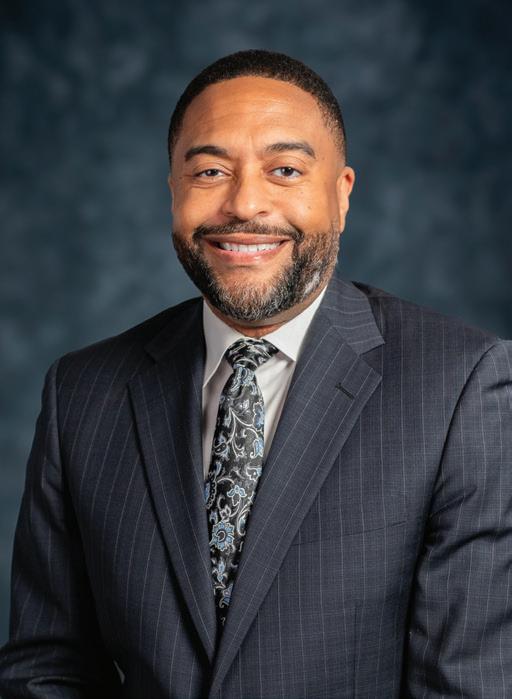
Dorsey’s pastoral journey—at Altadena, University, Compton Community, and Normandie Avenue churches—has been defined by his dedication to culture change within the church.
“It’s a new vision; it’s a new voice. It has to be
“Consider the possibilities. There’s always more, because that’s what happens with God.”
younger,” Dorsey said, emphasizing the need to create space for the next generation of pastors stepping into leadership. “There are so many young pastors who are ready for the opportunity to be senior pastors. Me moving creates another spot for that. Eventually, we’ve got to let this group just be in charge.”
When asked what people can expect from him in this new position, Dorsey outlines a three-fold approach: “Working alongside colleagues at the office while remaining Christ-centered, leading members to deepen their connection with Christ and their ability to share the gospel, and helping pastors maximize their gifts and talents to be used by God to the best of their abilities.”
“Now I have the opportunity to partner with a group of pastors—as colleagues—to attempt to change culture and push our region to another level with God’s help,” Dorsey said. His past encouragement to his members now also reigns true for pastors: “Consider the possibilities. There’s always more, because that’s what happens with God.”
By Araya Moss
Brett Poynter, Los Angeles Metro Region Director
Brett Poynter’s pastoral journey began in the Southern California Conference (SCC) in 2001 as the youth and young adult pastor at the Temple City church. After nine years, Poynter was called to serve as the senior pastor at the Hacienda Heights church, where he served for eight years. Upon receiving an invitation to return to Temple City, Poynter served for six years as the senior pastor.
“It boils down to friendship evangelism, making connection with people.”
During his transition into the senior
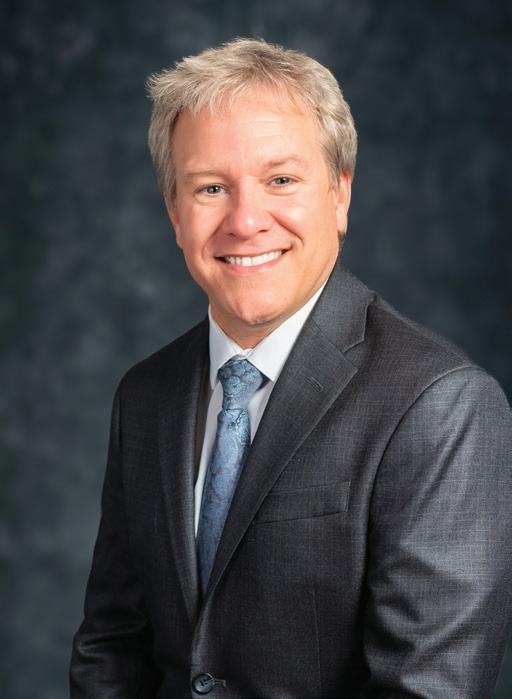
pastor role at Hacienda Heights, Poynter had the opportunity to join the missional church cohort at Andrews University to pursue his doctorate specializing in the missional church. Since earning his degree in 2017, he has explored what a missional church looks like practically. “It boils down to friendship evangelism, making connection with people,” he said. “As the church is reminded that creating friendships and building those friendships is the way to people’s hearts, just as Jesus did,* that makes the difference.”
As for his favorite thing about being a pastor, Poynter couldn’t pick just one. “Definitely when people accept Christ and get baptized, and also, as the church or the newly baptized get involved in new ministries, get excited about applying the gospel and
helping share the gospel,” he shared. Poynter also appreciates the unique opportunity he has had to be connected to churches for so long and in the same conference, allowing him to be part of milestones like graduations and marriages as the young people he pastored grow up.
He’s now stepping into the role of SCC Los Angeles Metro Region director, bringing the missional church focus with him. “Because of the new position, I still get to use and maintain my mission muscles in helping pastors in this direction as we’re all committed to being missional,” he said.
By Lauren Lacson
Branden Stoltz was on sabbatical when he learned he might be nominated for the West Region director position. “I was in the redwoods at the time, and I immediately said, ‘Nope, I don’t want it.’ But as I was walking through the redwoods, halfway around this large tree, suddenly the thought of being nominated, with all my plans I had for the next two years at the churches that I love, and my own personal plans, all randomly coalesced in this moment and I thought, ‘Maybe God has plans that are different than mine.’”
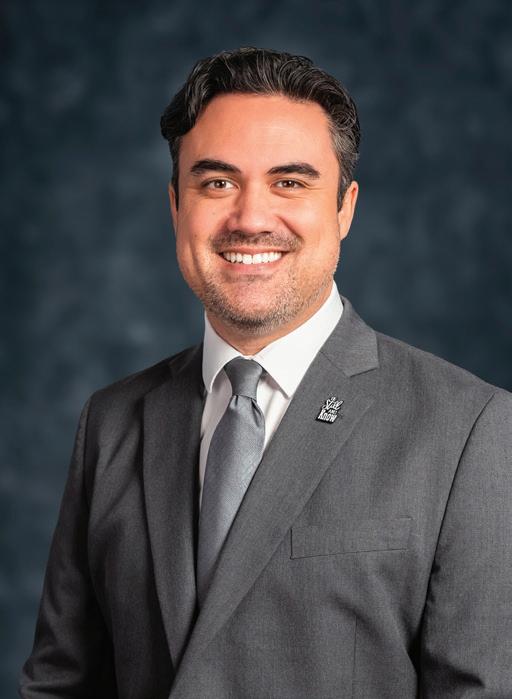
Stoltz—who recently served as senior pastor of Hollywood church for 10 years, the last six of those also as senior pastor of Burbank church—didn’t come to this decision easily. “It was so difficult,” he said. “I mean, with tears I wrestled with God. I felt like Jacob, which is not lost on me with my recent hip replacement surgery. But then I finally said, ‘OK God, Your will.’ So I had time to process through the possibility of being the West Region director.”
“To be able to serve in this capacity, I have
confidence, peace, and excitement,” Stoltz added. “I’m also very sad about leaving my churches, but thankfully I am stepping into a role that I can continue to support them—plus 20 other churches.”
Stoltz believes God has prepared him for this point in his ministry along what feels like an unconventional path. A business degree with plans of restaurant ownership led to a master’s degree in teaching with hopes of becoming an educator. God’s call to Stoltz—“I want you to teach, but I want you to teach about Me”—eventually brought him to pastoral ministry.
“My passion is that people know Jesus,” Stoltz said, “and that our churches are poised to meet the needs of the people immediately around them in unique and relevant ways. In this role, if I can help empower people to do their ministry, I think I’ll be successful.”
By Araya Moss
“My passion is that people know Jesus and that our churches are poised to meet the needs of the people immediately around them in unique and relevant ways.”
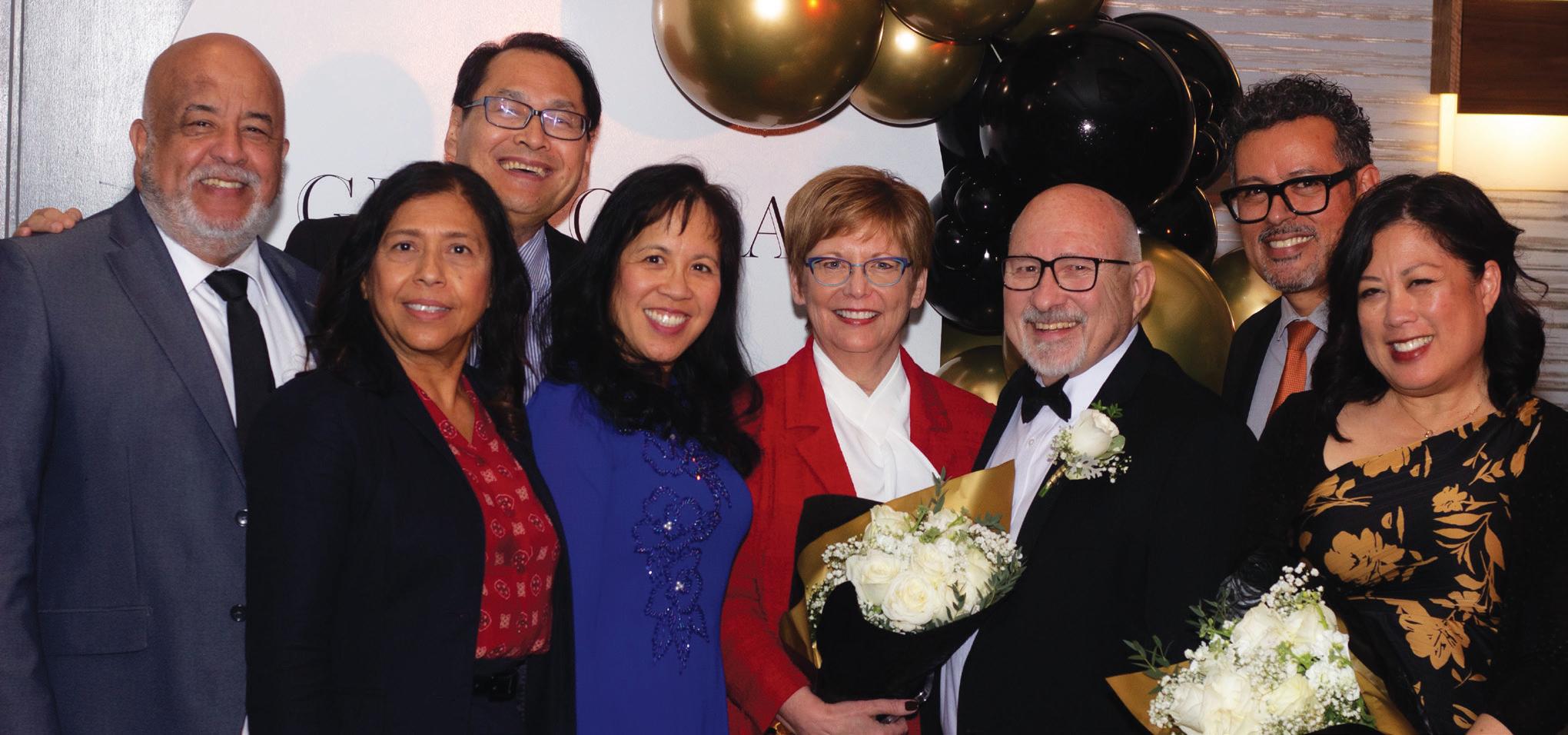
The Greater Los Angeles Region (GLAR) Fall Gala was held at the Renaissance Hotel in Los Angeles last year, with more than 200 people in attendance. Previously an annual event, the gala returned in 2024 after several years off due to the pandemic.
The gala, which originated more than 15 years ago, was created by sisters Barbara Hubbard-Spence and Vanessa Pipes to serve as a fundraiser for Los Angeles Adventist Academy. Hubbard-Spence was recognized at this year’s event for her service throughout the years. In recent years, the gala has shifted its focus from a fundraiser to a time of reflection
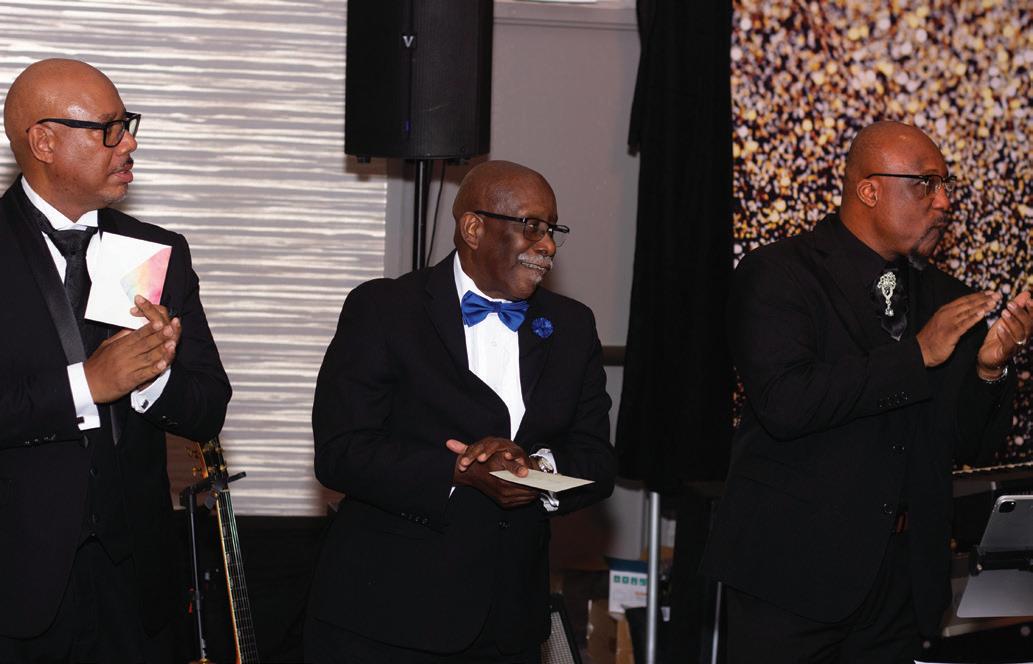
“It was a wonderful event where we come together to celebrate and acknowledge, not just what God has done for us this year, but in our past.”
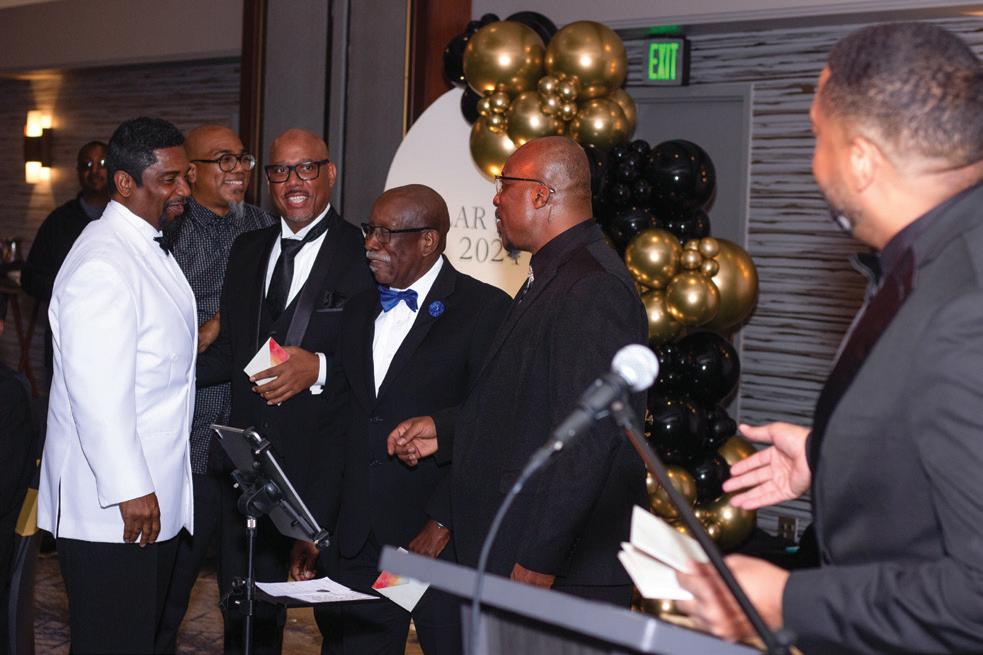
among members of the region and a special recognition of GLAR pastors. Royal Harrison, Southern California Conference (SCC) executive vice president, who served as the region director from 2014-2024, was recognized for his service, and he introduced Lawrence Dorsey II as the newest GLAR director.
The music led by Terrelle Edwards was both inspiring and entertaining as many laughed and sang along to familiar songs and tunes from the past.
“It was a wonderful event where we, the Greater Los Angeles Region, decided to reconnect and come
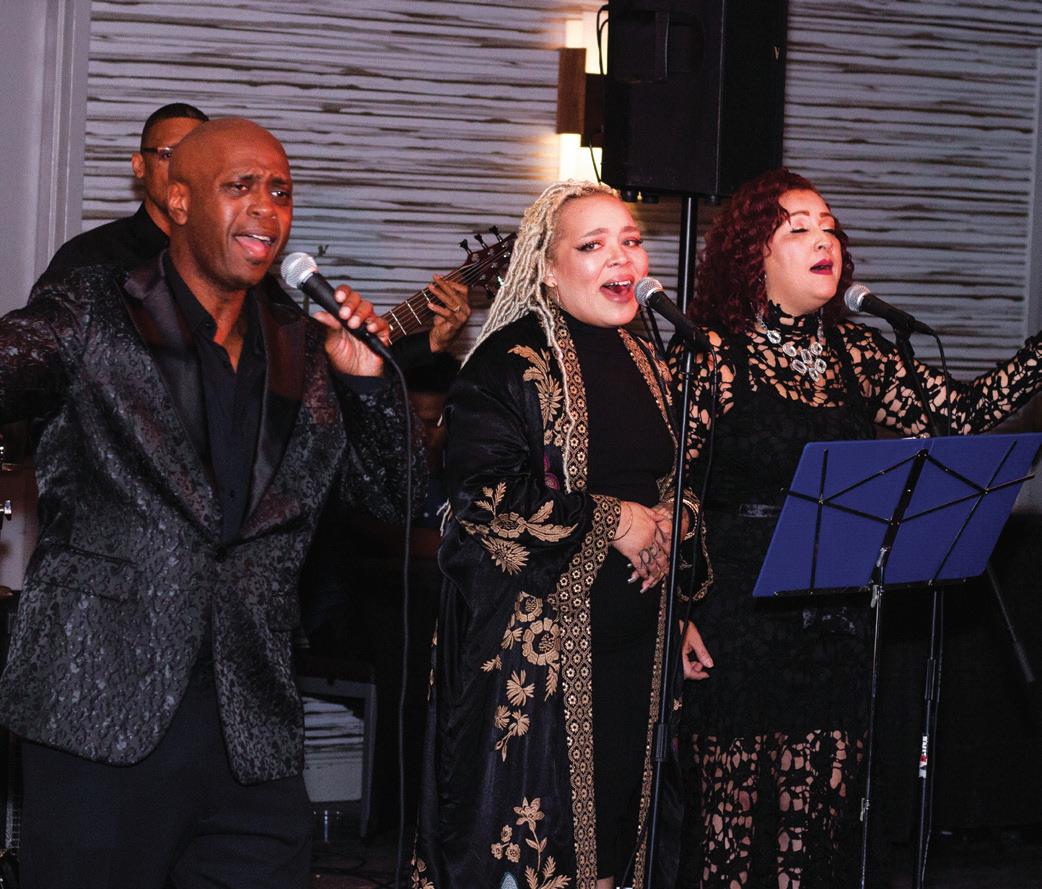
together to celebrate and acknowledge, not just what God has done for us this year, but in our past,” reflected Dorsey, “with our eyes keenly aware of what He can do for us in the future.”
By Lawrence S. Dorsey II, with Araya Moss
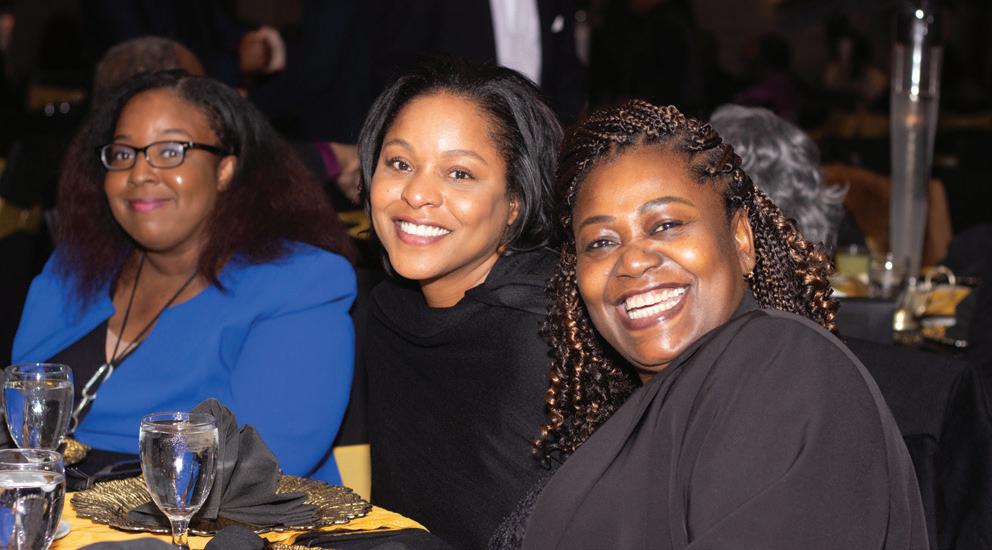
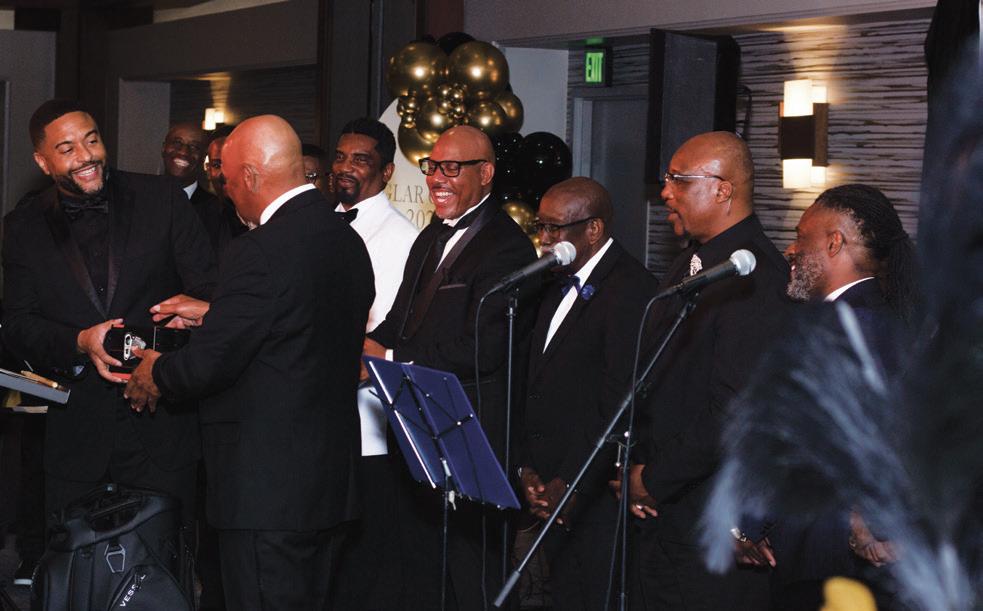
At our 66th Constituency Session this September, we welcomed our new leadership team for this term. You may be familiar with these leaders, as they have each served in our conference in different capacities through the years, but they want to give you the chance to get to know them just a bit better.
Stay tuned for short videos coming out this month to help you get acquainted! scc.adventist.org/get-acquainted

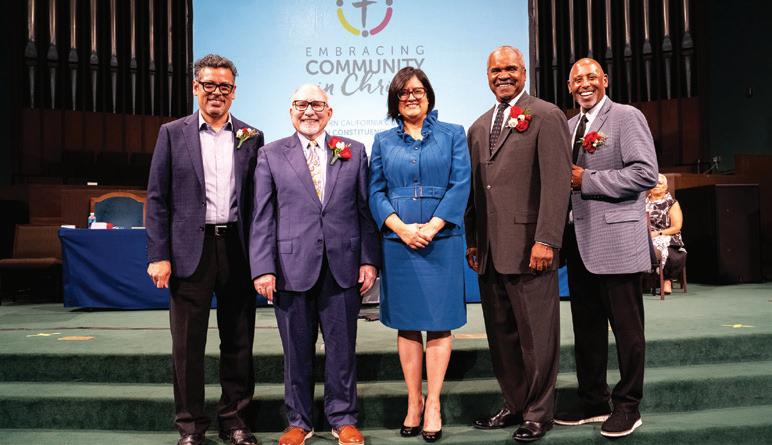
Advertising is accepted as a service to Seventh-day Adventist church members in the Pacific Union. The Recorder management reserves the right to refuse any advertisement, especially ads not related to the needs and practices of the church membership. Acceptance of any advertising shall be considered a matter of accommodation and not a matter of right, nor shall it be construed to constitute approval of the product or service advertised.
Payment in advance must accompany all classified advertisements or they will not be published. Display ads for known advertisers will be billed.
Classified ads must be sent with payment to the Recorder office. Display ads should be arranged with the editor (recorder@adventistfaith.com).
$70 for 50 words; 75 cents each additional word. Display rates (full color only): back cover, $4,200; full page, $3,800; 1/2-pg., $2,200; 1/4-pg., $1,200; 1/8-pg., $700; $160 per column inch.
Information
The Pacific Union Recorder is published 12 times per year with a circulation of approximately 75,000. For more information about advertising, please email to recorder@adventistfaith.com.
These are the advertising deadlines for the Recorder Your local conference news deadlines will be earlier. February: January 4 • March: February 1
Contributions
The Recorder pages are assigned to the local conferences, colleges, and healthcare institutions, and all content comes through the communication departments in those organizations. If you have a news story/idea, calendar announcement, etc., please contact your local communication department. See the masthead for contact information. Want tips for writing for us? See www.dailywritingtips.com/the-artof-writing-news.
The Pacific Union Recorder is provided as a free service to members of the conferences that are part of the Pacific Union Conference (Arizona, Hawaii, Northern California, Central California, Southern California, Southeastern California, and Nevada-Utah). Each conference maintains the list of members, based on the reports from their churches. If you would like to make a change to your subscription (name, address, cancellation), please contact your local conference. The staff of the Recorder does not have access to the circulation lists, other than the paid subscriptions.
Academy Basketball Tournament. Pacific Union College will be hosting their annual Academy Basketball Tournament from January 21-25. They invite family and friends to cheer on their teams, show support, and spend a fun weekend at the college.
Connect Ministries is a group of Pacific Union College students passionate about Jesus and sharing through music and worship. The bilingual team leads the worship services, retreats, youth events, and any programs where they can inspire other young people to become worship leaders. Any school or church interested in having them visit, please email connectministries@puc.edu.
Add PUC News in your church bulletin. With many updates to share at Pacific Union College, we designed a printable bulletin insert for churches to use. Just print the PDF double sided and cut in half, then include as a bulletin insert. Download at puc. edu/bulletin,
Subscribe to the PUC Now Newsletter. Stay up to date with Pacific Union College by subscribing to their monthly newsletter at puc.edu/subscribe. From campus stories and alumni features to student interviews, you’ll be in the now with PUC.
Full-time church administrator: Discover Life Seventh-day Adventist Church in Sonora, CA, seeks a people-skilled, task-oriented church administrator. Responsibilities include working with pastors, overseeing communication, facilities, scheduling, and special projects. Full-time with health, PTO, retirement benefits. Must be an SDA member with strong organizational and communication skills.
Holbrook Indian School is currently in need of an Assistant Girls' Dean, an Industrial/Vocational Arts Teacher, and a Director of Horsemanship. These are paid positions. If you or someone you know are mission-minded and would like to serve Native American children, please see or share our jobs page at HolbrookIndianSchool.org/jobs.
Pacific Union College seeks qualified candidates to fill open positions in fulfilling our mission to Learn with Purpose, Rise in Faith, and Serve in Love. Beautiful mountain campus, minutes to shopping, an hour+ drive to ocean and skiing. Current openings
at https://www.puc.edu/campus-services/humanresources/current-job-postings.
Pacific Union College seeks dedicated Executive Director to lead Human Resources operations and strategy and oversee well-being and development of talented team members. Strong leadership, communication, and organizational skills are essential. https://www.puc.edu/campus-services/humanresources/current-job-postings/executive-directorhuman-resources. Email hr@puc.edu.
Evangelism Projects Coordinator needed at Quiet Hour Ministries to assist in developing and implementing and reporting for various mission projects. This is a full-time (32 hours per week) in-office position located in Redlands, CA, with potential for international travel. For more info or to apply, visit: qhministries.org/jobs.
Marketing Director needed at Quiet Hour Ministries to plan and direct successful fundraising and marketing through a variety of methods. This is a full-time (38 hours per week) in-office position located in Redlands, CA, and includes some national and international travel. For more info or to apply, visit: qhministries.org/jobs.
The Miranda Seventh-day Adventist Church is looking for a missionary-minded couple to care for its church. The couple will rent the church trailer
home and be responsible for maintaining the church grounds. For more information, please call Mike Michelli at 707-296-5518.
Adventist Media Ministries seeks a Senior Accountant to work in Support Services and handle various specialized accounting duties, participate in department cross-training, and assist Treasurer and other accounting staff. Position is full-time (38 hours per week) plus overtime, located in Riverside, CA. For more information or to apply, visit https://www. adventistmediaministries.com/available-positions/.
Adventist Media Ministries seeks a Treasurer to work in Support Services and manage the treasury/ accounting operations, direct and supervise treasury staff, provide leadership, administration, and assistance in shaping business services to the needs of the media ministries. Includes some travel. Position is full-time (38 hours per week), located in Riverside, CA. For more information or to apply, visit https://www. adventistmediaministries.com/available-positions/
Voice of Prophecy Associate Director of Gift Planning and Trust Services. Do you believe in evangelism? Are you a people person? Are you a selfstarter with strong communication and organizational abilities? Are you eager to learn new skills and willing to travel? If so, the Voice of Prophecy would love to visit with you about our open Associate Director of Gift

Planning and Trust Services position. To apply, go to vop.com/careers.
PUC Commercial Space for Rent. Pacific Union College has commercial real estate space available for lease. The spaces are in various sizes and functionality and are available for inquiries. For additional information, please email Sam Heier at sheier@puc.edu.
Cottage for Rent. Are you looking for serenity and peace? Then this rental is the perfect place for you. A small and private cottage, complete with picket fences and gardens. 1 bedroom, 1.5 bathrooms, skylights, and unique shower. Located in foothills by Collins Lake, CA. Contact John at Mountains.2 skyz@gmail.com
Outpatient Physical Therapy and Aquatic Therapy in the foothills above Sacramento, CA. Turn-key practice, in business for over 30 years. Great referral base and solid practice. Lots of potential for growth. Great opportunity for someone wanting to establish a medical mission outpost or wellness center as well. 5400-sq-ft facility. $450,000. Flexible options to the right party. Contact levi2000@sbcglobal.net or leave message at 209-304-7455.
Travel on a faith-based tour to Israel, Egypt, Turkey, Rome, or Vietnam on a special cultural discovery tour with Dr. Carl Cosaert, New Testament professor at Walla

Walla University. To learn more about these inspirational tours that renew your faith, visit www.adventtours. org or email info@ adventtours.org.
Biblical study tour of Greece. Footsteps of Apostles Paul and John in Greece. Sept. 3-15, 2025. A biblical journey through Philippi, Amphipolis, Thessalonica, Berea, Athens, Corinth, Vergina, Meteora, and Delphi. Enjoy a cruise to Patmos, Crete, Santorini, Mykonos, and Ephesus. Experience the Greek culture and food. Info: www. biblicaltouring.com, George Dialectakis, 860-402-2247.

Biblical study tour of Turkey. Discover the Seven Churches of Revelation in Turkey. Sept. 14-21, 2025. Start at Istanbul, old Constantinople, and visit St. Sophia. Travel to the historic cities of Ephesus, Smyrna, Pergamum, Thyatira, Sardis, Philadelphia, Pamukkale, Laodicea, and Kusadasi. Info: www. biblicaltouring.com, George Dialectakis, 860-402-2247.
Bulletin Board
Kids need never be bored! Just point them to LifeTalkKids.net and let them listen to great adventures, faith-building Bible stories, captivating science and awesome nature programs, and more 24/7. Kids grow better with radio. Download our free app at: LifeTalk.net
Are you part of the church and have family members who are LGBTQIA+? Do you feel alone in this part of life’s journey? Would you like to connect with other people who are navigating this path of loving both God and family? We would love to hear from you and offer peer support and listening ears. Contact us at grace.and.peace789@gmail.com.
Canvasback Missions: Help the Lord’s ministry of healing in Micronesia by donating your car, boat, bike, RV, or truck. All proceeds help provide free medical services to the island peoples of Micronesia. Canvasback Missions, a 501 (c) (3) charitable organization, has been serving since 1986. For more info: www.canvasback.org • (707) 746-7828.

Partner with ASAP Ministries in serving the marginalized and reaching the unreached in Southeast Asia with the wholistic gospel. What you do today can change a life for eternity! To learn more visit asapministries.org. Subscribe to our weekly Mission Matters videos. Follow us on Facebook,
City/Location JAN 3 JAN 10 JAN 17 JAN 24 JAN 31
Alturas (Modoc Cty.) 4:45 4:52 5:00 5:09 5:17
Angwin 5:01 5:08 5:15 5:23 5:31
Bakersfield 4:56 5:02 5:09 5:16 5:23
Calexico 4:49 4:54 5:01 5:07 5:14
Chico 4:55 5:02 5:10 5:18 5:28
Death Valley (Furnace Ck) 4:44 4:51 4:58 5:05 5:12
Eureka 5:01 5:08 5:16 5:24 5:33
Four Corners [E] 5:12 5:18 5:25 5:33 5:40
Fresno 4:55 5:02 5:09 5:16 5:24
Grand Canyon (South Rim) 5:27 5:33 5:40 5:47 5:54
Half Dome 4:52 4:58 5:05 5:13 5:21
Hilo 5:54 5:59 6:03 6:08 6:12
Holbrook (Navajo City) 5:39 5:45 5:52 5:59 6:06
Honolulu 6:02 6:07 6:12 6:16 6:21
Joshua Tree 4:48 4:54 5:01 5:08 5:15
Lake Tahoe 4:50 4:57 5:04 5:12 5:20
Las Vegas 4:39 4:45 4:52 4:59 5:06
Lodi-Stockton 4:58 5:04 5:11 5:19 5:27
Loma Linda 4:52 4:58 5:05 5:12 5:18
Los Angeles 4:56 5:02 5:09 5:15 5:22
McDermitt [N] 4:32 4:39 4:47 4:56 5:05
Moab 5:09 5:16 5:23 5:31 5:39
Monterey Bay 5:04 5:11 5:17 5:25 5:32
Mt. Whitney 4:54 5:00 5:06 5:13 5:20
Napa 5:01 5:08 5:15 5:23 5:31
Nogales [S] (Los) 5:31 5:37 5:43 5:50 5:56
Oakland 5:02 5:09 5:16 5:16 5:32
Paradise, CA 4:54 5:01 5:09 5:17 5:25
Phoenix 5:33 5:39 5:45 5:52 5:59
Pu‘uwaiau, Ni’ihau [W] 5:57 6:02 6:06 6:11 6:15
Reno 4:48 4:54 5:02 5:10 5:19
Riverside 4:53 4:59 5:05 5:12 5:19
Sacramento 4:57 5:04 5:11 5:19 5:27
Salt Lake City 5:12 5:19 5:27 5:35 5:44
San Diego 4:55 5:01 5:07 5:14 5:20
San Francisco 5:03 5:10 5:17 5:24 5:32
San Jose 5:02 5:09 5:16 5:23 5:31
Santa Rosa 5:02 5:09 5:16 5:24 5:32
Sunset Beach 5:03 5:10 5:17 5:24 5:32
Thousand Oaks 4:58 5:04 5:11 5:18 5:25
Tucson 5:31 5:37 5:43 5:50 5:56
[N]=Northernmost [S]=Southernmost [E]=Easternmost [W]=Westernmost point in the Pacific Union
“So there remains a Sabbath rest for the people of God.” Hebrews 4:9
Instagram, and YouTube: asapministries.
Shop for new/used Adventist books: TEACH Services offers used Adventist books at www.LNFBOOKS. com or new book releases at your local ABC or www. TEACHServices.com. Authors, let us help publish your book with editing, design, marketing, and worldwide distribution. Call 706-504-9192 for a free evaluation.
Pet/house sitter based in the Sacramento, CA, area who works from home full-time in a remote job. Able to travel to other parts of California, as well as Oregon, Nevada, Arizona, Utah (and other states if needed). SDA member in good-standing and has references upon request. Find out more and contact here: https://www.kcsitstay.com/
Ackerman, Cynthia – b. Feb. 4, 1956; d. June 11, 2024. Survivors: husband, Craig Ackerman; daughters, Kara, Camrie, Kaylie; son, Kade; three grandchildren. Cynthia was a teacher and principal of the Galt SDA Elementary School and a dedicated volunteer at the Galt church.
Daly, Jerry – b. Oct. 29, 1952, Sacramento, CA; d. Oct. 30, 2024, Loma Linda, CA. Survivors: wife, Jan Zumwalt Daly; daughter, Megan Daly; sons, Matthew Daly, Maxwell Daly; sibling, Peggy Crabtree; one grandchild.
Finch, Esther – b. Nov. 8, 1941, Hinsdale, IL; d. Nov. 10, 2024, Redlands, CA. Survivors: husband, Donald Finch; daughters, Kimberly Nahm, Debra Finch; siblings, Joyce, Larry; three grandchildren.
Fredricksen, Milton – b. May 19, 1926, Springfield, IL; d. April 20, 2024, San Diego, CA. Survivors: wife, Carol Fredricksen; children, Stephen Fredricksen, Diana Fredricksen, Shan Corrigan, Terrance Corrigan, Philip Fredricksen; five grandchildren, seven greatgrandchildren. Milton was an OB-GYN at Paradise Valley Hospital; he served as project manager and head elder of the North Park and Tierrasanta churches.
Johns, Warren – b. June 9, 1929, Nevada, IA; d. Nov. 4, 2024, Loma Linda, CA. Survivors: wife, Ruth Johns; son, Richard Johns; daughter, Lynn Johns; five grandchildren; five great-grandchildren.
Kolkmann, Arlene – b. June 20, 1936; d. April 10, 2024. Survivors: sons, Bryan Kolkmann, Randall Kolkmann; daughter, Lyndah Kolkmann; 11 grandchildren; nine great-grandchildren.
Krick, Edwin – b. Aug. 13, 1935, Takoma Park, MD; d. Oct. 29, 2024, Redlands, CA. Survivors: wife, Beverly Krick; daughter, Joy Grant; son, Edwin Krick Jr.; sibling, Robert Krick; four grandchildren.
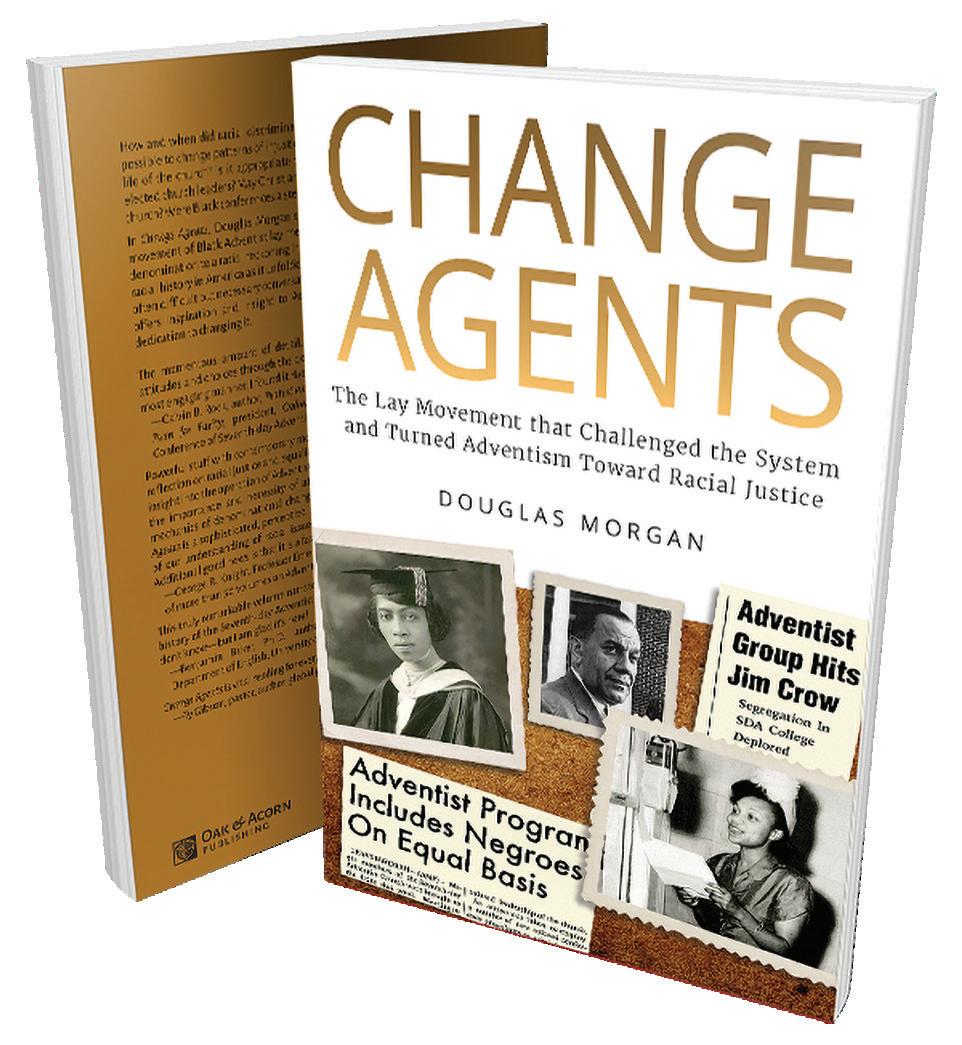
Morrison, Barbara – b. Aug. 8, 1947, Seoul, South Korea; d. Nov. 12, 2024. Survivors: husband, Dale Morrison; children, Brad Morrison, Melissa Gibson; six grandchildren.
Perkins, Helen Francis – b. Jan. 16, 1924, Pueblo, CO; d. Oct. 15, 2024, Fortuna, CA. Survivors: daughter Connie M Bertholf; two grandchildren; two greatgrandchildren.
Radoycich, Helen – b. July 20, 1931, Yugoslavia; d. Nov. 8, 2024, Redlands, CA. Survivors: daughters, Grace Radoycich, Diana Neuendorff.
Rathnam, John – b. May 17, 1949, Shillong Mughalaya, India; d. Nov. 8, 2024, Riverside, CA. Survivors: wife, Ileen Rathnam; daughter, Michelle Rathnam; son, Johnny Rathnam.
Sanders Jr., James Albert (Jim) – b. Sept. 13, 1943, Santa Monica, CA; d. Nov. 5, 2024, Orangevale, CA. Survivors: daughters: Kris, Kathryn, Lauren Sanders; siblings: Dean, Bob, Marilyn Sanders. A lifelong member of the Carmichael church, after retiring from engineering, Jim enjoyed mission trips to the Dominican Republic and Nicaragua.
Trant, Lois Faye – b. May 22, 1937, Florence, AZ; d. June 12, 2024, Garden Grove, CA. Survivors: sons, Steven, Richard, David; daughters, Charlotte Schmidt, Melissa, Tina Gallegos, Kimberly Beall; 14 grandchildren. Lois fostered 37 children and worked at Galt SDA Elementary tutoring and as a teacher's assistant.
How and when did racial discrimination become embedded in Adventist institutions? Is it possible to change patterns of injustice when they become deeply ingrained in the corporate life of the church? Is it appropriate to organize in opposition to the voted policies of duly elected church leaders? May Christians use protest and pressure to bring about change in the church? Were Black conferences a step forward or backward?
In Change Agents, Douglas Morgan sheds light on such questions by telling the story of a movement of Black Adventist lay members who, with women at the forefront, brought the denomination to a racial reckoning in the 1940s. Their story, told in the context of the church’s racial history in America as it unfolded during the first half of the 20th century, illumines the often difficult but necessary conversations about race that challenge the church today. And, it offers inspiration and insight to Adventists today whose love for their church drives a dedication to changing it.
Continued from page 31
Care Chaplain at the Motion Picture and Television Fund, led a traditional Jewish beginning of the Shabbat service. Through songs in Hebrew and stories of his faith journey, Rabbi Rosenberg invited attendees to experience the Sabbath from a Jewish perspective. “The peace and the change that the Sabbath can bring into our lives—that’s what [Friday] night’s message was about,” shared Rosenberg.
Sabbath morning saw the tent filled with worshippers, many from the Latino and Black communities that surround the church. Visitors were eager to explore a unique Sabbath experience. The church’s praise team delighted the crowd with lively music, while a gospel choir from a local Baptist church filled the air with songs of rejoicing. Deacon Charlie Echeverry, of the Los Angeles Catholic Archdiocese, spoke on the sanctity of rest for marginalized communities. Via Zoom, the congregation also heard from Rev. Dr. Judy Fentress-Williams, professor at Virginia Theological Seminary—the largest of the accredited seminaries of the Episcopal Church—about Sabbath as an act of justice.
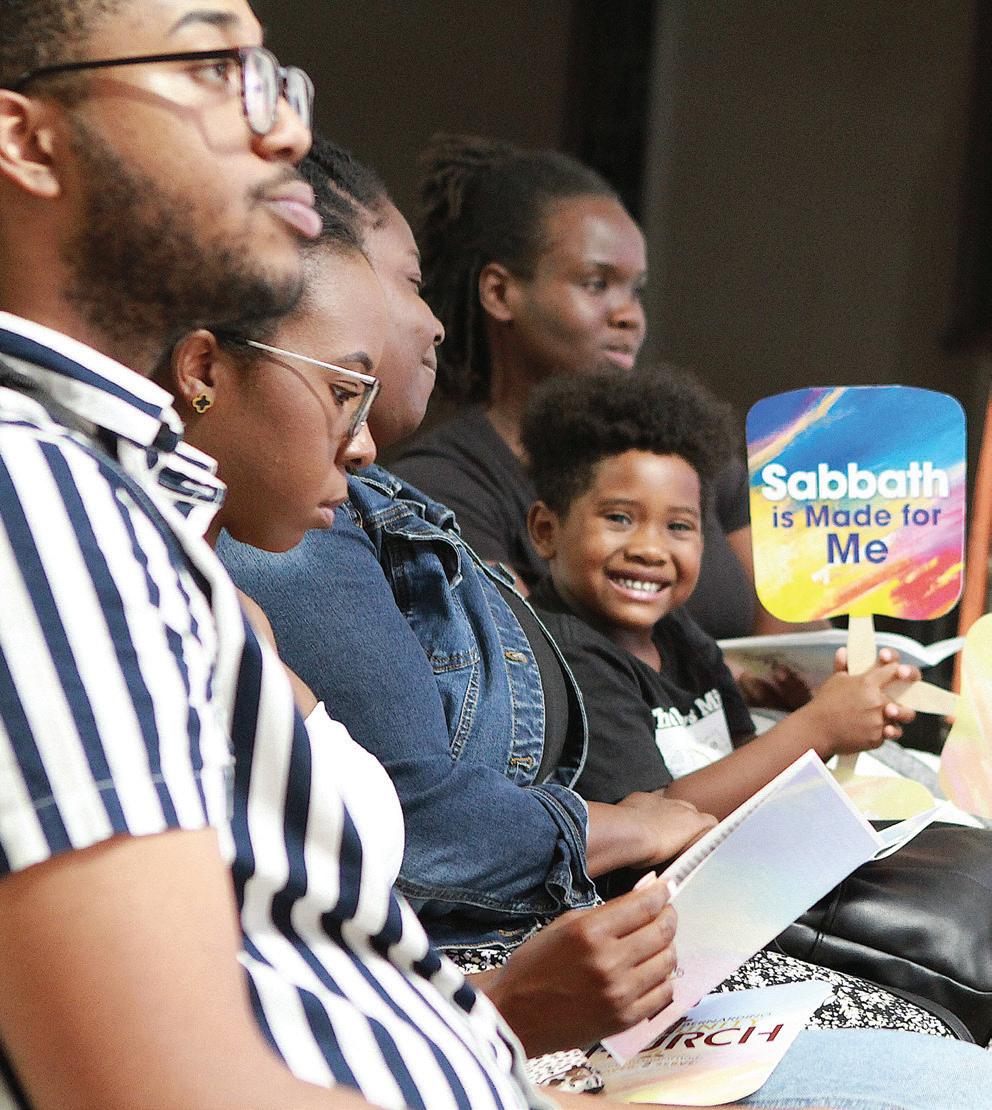
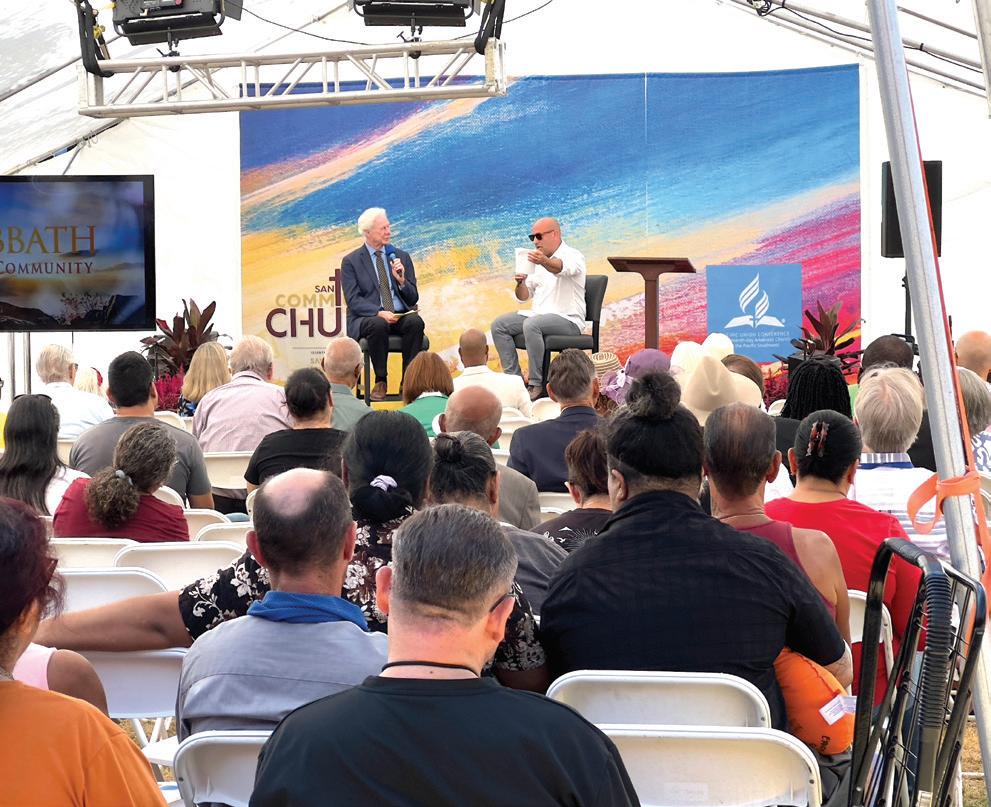
Reflecting on the messages he heard, Deacon Echeverry shared: “This conversation is important, because Sabbath is a priority to God and should be a priority to us no matter what is going on in our lives. For the Latino and Black community in particular, the idea of Sabbath could be something very important, but it needs to be understood in a different way than what it currently is. Events like this one help reframe it.”
The Sabbath service concluded with a sermon by Pastor Jerrold Thompson of San Bernardino Community church. It was followed by lunch in the newly remodeled fellowship hall. Lunch was an opportunity for those who attended the festival to talk about what they had heard and to ask questions of the presenters as well as to share in the spirit of community.
In the afternoon, the festival wrapped up with a panel discussion led by Elder Virgil Childs, vice president for Black Ministries of the Pacific Union Conference. The panel was comprised of Martin Doblmeier, Dr. Izvernari-Im, Rabbi Rosenberg, Elder Newton, and Pastor Thompson. Thompson summed up the experience for his congregation: “The purpose of the weekend [was] to expand our knowledge of the Sabbath, to encourage deeper study, and to learn more about one of the most important tenets of our faith.”
By Ray Tetz
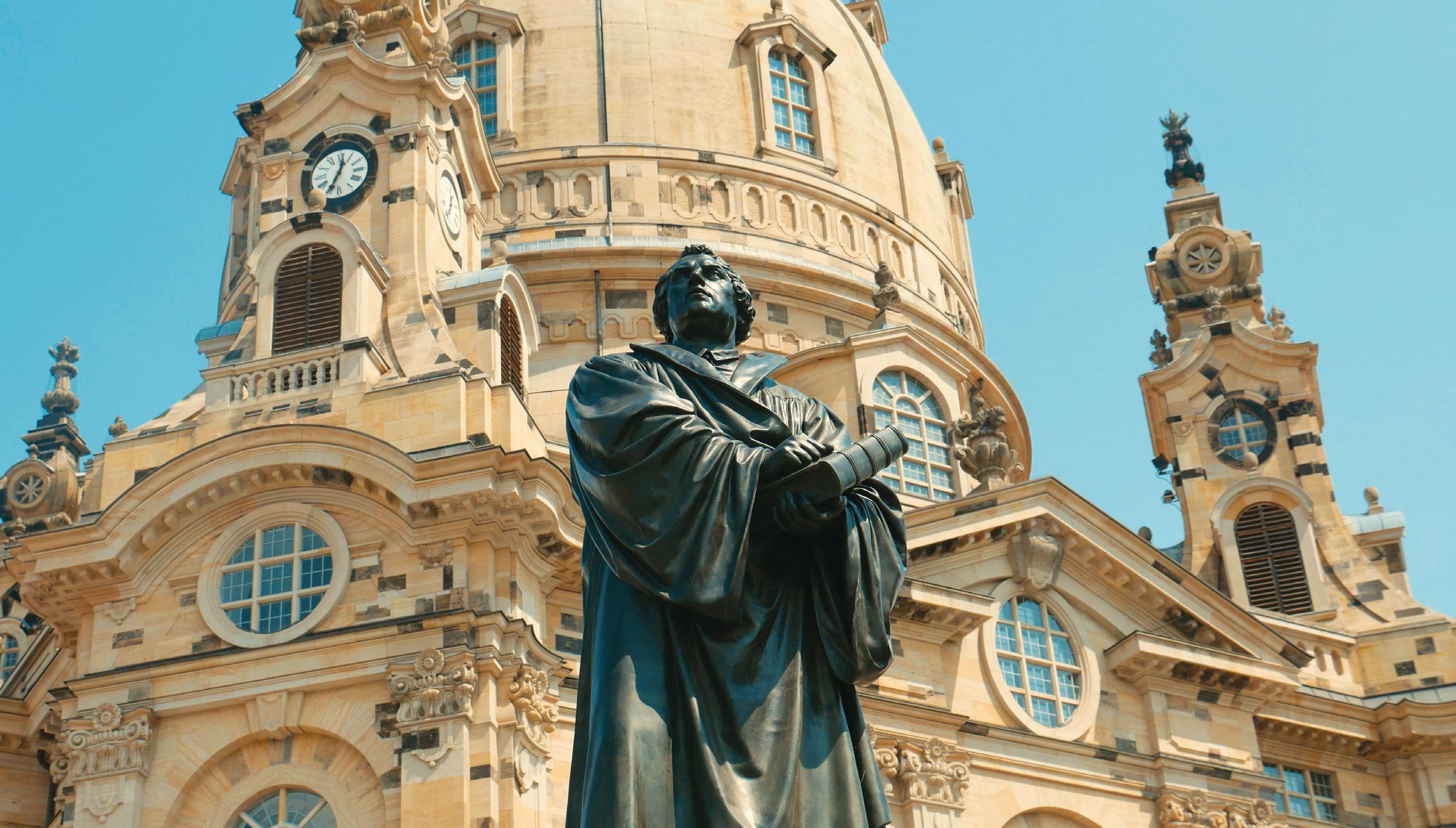
Martin Luther was excommunicated on January 3, 1521—in part because of his (literally) fiery response to receiving from the church establishment a document entitled "Bull Exsurge Domine!” (“Arise, O God!”). In this document, the church demanded that he recant his statements about the sale of indulg ences (he said they were wrong) and corruption (he said it was rampant) within the church hierarchy, and the “bull” called on all Christians to burn the books and pamphlets containing Luther's ideas and writings.
The bull was sent to Luther in October of 1520. Sixty days afte r receiving the bull, on December 10, 1520, Luther built a fire of his own—burning vol umes of church law, assorted papal constitutions, and various works of scholastic t heology that Luther deemed heretical.
He could not have been more clear in the message he was sending: The message of the “Five Solas” was true—Sola scriptura (By Scripture alone), Sola fide (By faith alone), Sola gratia (By grace alone), Solus Christus (Through Christ alone), Soli Deo Gloria (Glory to God alone). Burning the bull helped draw attention back to the truth, in an action that became the basis for reform in Catholicism and the genesis of protestant faith.
Luther himself (festively dressed in priestly black) threw the infamous bull into the fire.
And he didn’t stop there. He refuted the bull, point by point, in writings that were printed and distributed throughout Germany and the church.
Having broken with the church in such a fiery and memorable way, he did not hold back in his condemnation of the actions of the established church, writing, “But whoever wrote this bull, he is Antichrist. I protest before God, our Lord Jesus, his sacred angels, and the whole world that with my whole heart I dissent from the damnation of this bull, that I curse and execrate it as sacrilege and blasphemy of Christ, God's Son and our Lord. This be my recantation, Oh bull, thou daughter of bulls.” 1
Even though the arguments between Luther and the church had been going on for years, it didn’t take long for the church to respond with yet another papal bull—and on January 3, 1521, Luther got the boot from the authors of the bull, and he was excommunicated.
And the result? Well, the Protestant Reformation, the Catholic Counter-Reformation, the world irrevocably and dramatically changed. You can’t burn ideas. But you can burn the bull.
Luther is remembered for expressing his ideas in the “95 Theses,” his summary of the complaint he had against the existing church policy and practice. Had it stopped there, I doubt anything would have happened. But it didn’t stop there.
Luther went beyond expressing his frustration in words—he acted. He stood by what he wrote, he insisted on the truthfulness of the claims, he persisted in condemning the practices that he found abhorrent and false.
And then one morning, in early winter, he rounded up some pamphlets and books that were representative of the heresy he opposed, and he set them alight. First
he spoke, then he acted. It wasn’t enough to just say something—he had to do something about what he saw. That’s what changed history.
Faith takes many forms, but without action, it’s not worth much. Unless it changes how we live, faith is futile. But when it leads to changes in our values, when those values become behavior, and when our behavior mirrors those transforming ideas—that’s when it matters. That’s how we “burn the bull.”
“He has shown you, O man, what is good; And what does the Lord require of you but to do justly, to love mercy, and to walk humbly with your God?”
(Micah 6:8, NKJV).
Martin Luther got it right. Micah the prophet got it right: DO justly, LOVE mercy, WALK humbly.
The challenge is not finding or even expressing the ideas. The challenge is living by them. Acting on them. Becoming a living embodiment of them. That’s what it means to burn the bull.
Ray Tetz is the director of communication and community engagement for the Pacific Union Conference and the publisher of the Pacific Union Recorder
